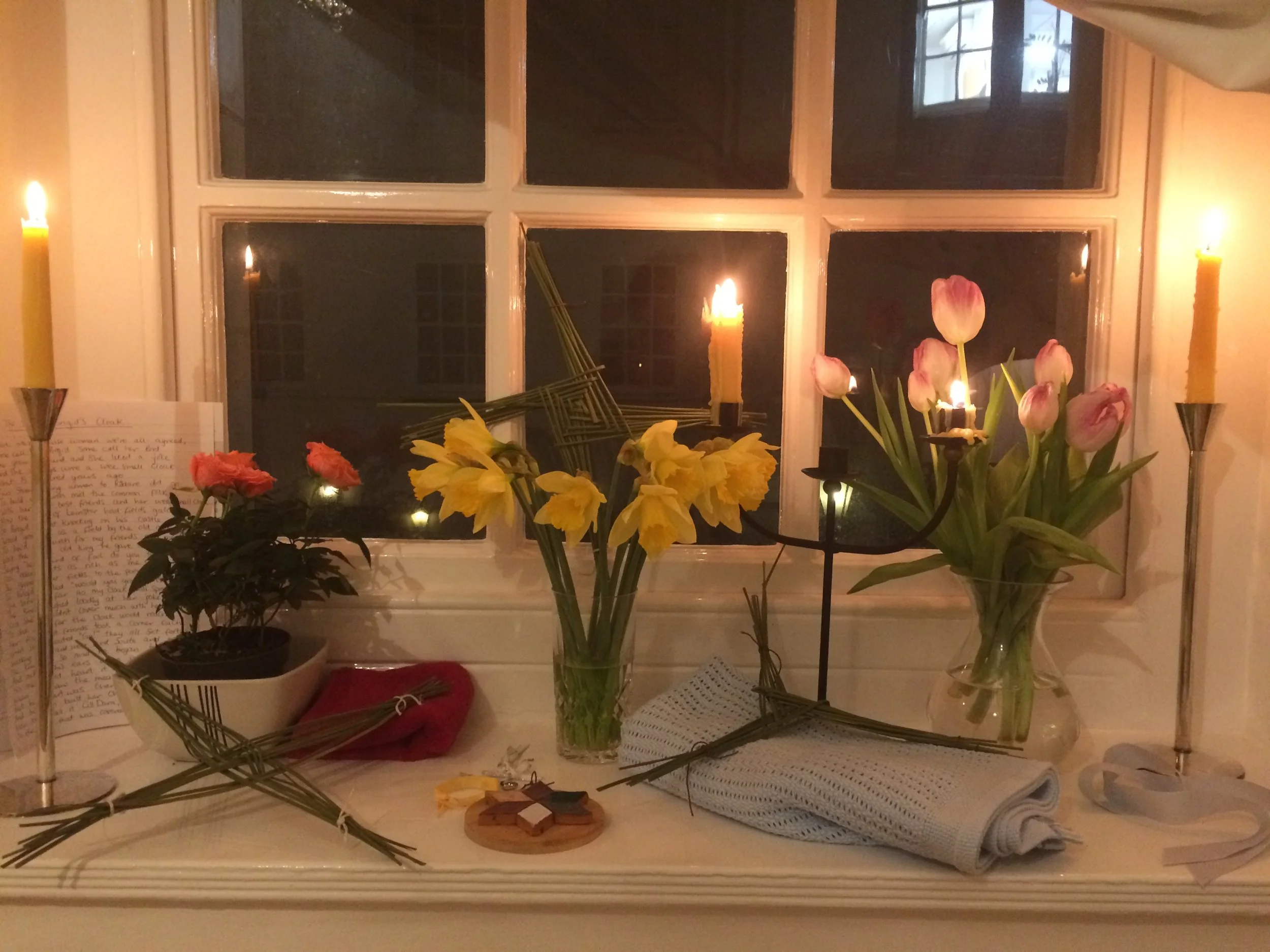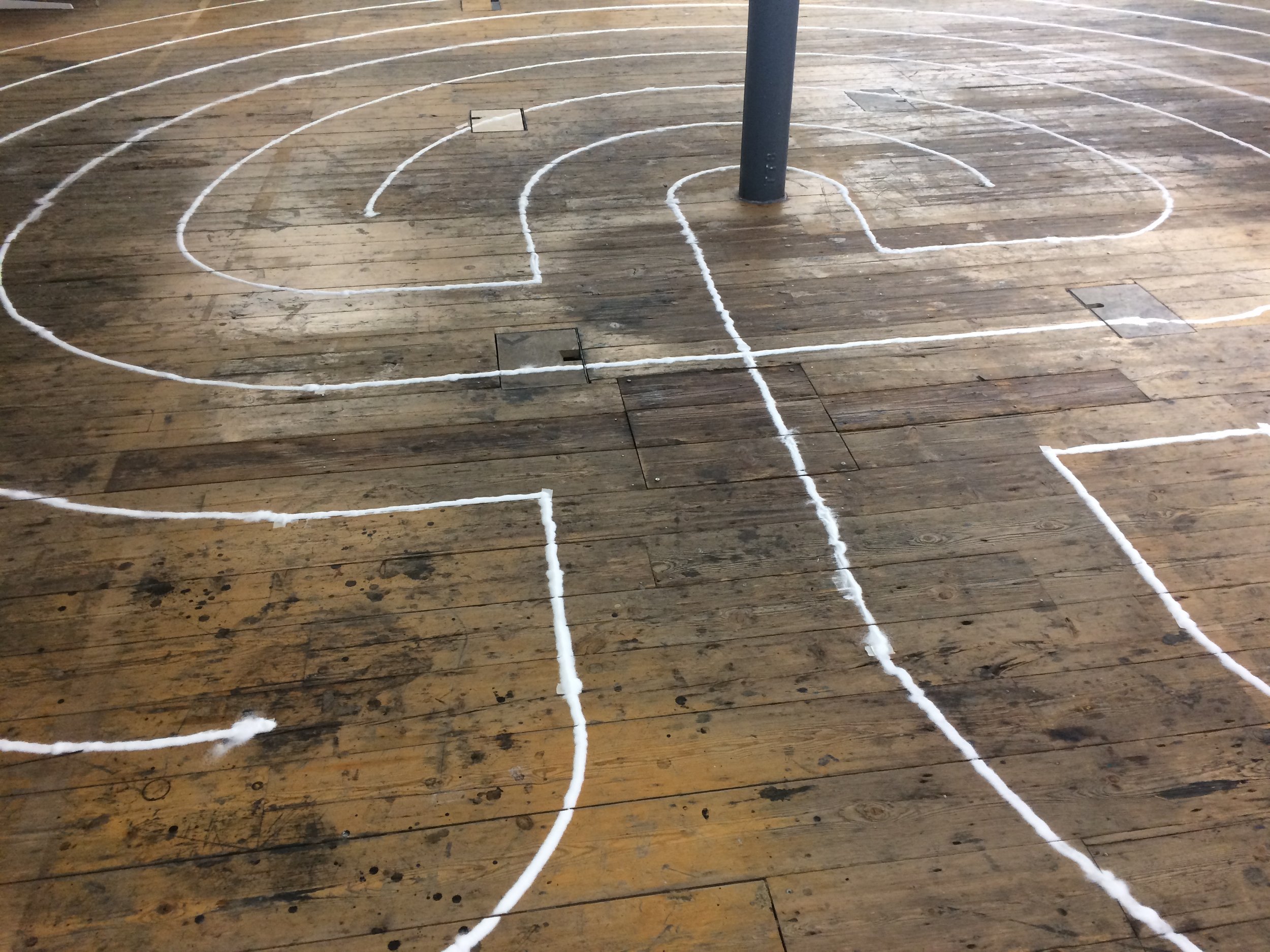Taking a piece of fabric, roughly 12 x 18 inches, tapering two sides for the ties and a straight hem on the square piece at both ends. I pleated each end of the square piece and slotted them into the ties and sewed together to secure in place. I envisioned what I wanted to create from a drawing by Leonardo da Vinci, A Study of a woman’s head (c.1490) and I drew my own version of it in Silverpoint.
Egg painting crafts for Easter
Goose eggs painted with water colour and Christian symbols.
Folklore, craft and traditions for the Feast of St. Brigid
My offering for the Feast of St. Brigid
Traditionally, on the eve of the Feast of St. Brigid, the man of the house would go out collecting the rushes and bring them back before the sun had set on the 31st January. He would announce three times an invocation to St. Brigid and the family would respond. The youngest child would carry them into the house.
Once the crosses were made they were left by the window for St. Brigid to bless, along with a blue cloth and red piece of material. Miracle cures of the blue cloth include taking splinters out, saving people from drowning and healings. The red cloth has been said to cure sore tooth’s and headaches. The St. Brigid crosses were kept in the house throughout the year as a protection for the family and to ward off the devil.
Children used to dress up and house call saying, “give us some money to honour the night”, singing songs and wearing white gowns with red crosses painted on their faces.
Relief carving of St. Brigid milking a cow are often seen near farms as she is said to be particularly effective in ensuring a good churn.
Visiting neighbours especially on this night was common. Baking cakes or buns in the shape of a cross were also common ways of honouring the feast.
Holy water collected from St. Brigid Well was also sprinkled around the home and on the perimeter of the field for protection and to keep evil spirits away.
Below is a folk song by Catherine Ann Cullen that’s easy for children to learn,
The Story of Brigid’s Cloak
There was a wise woman, we’re all agreed,
some call her Brigid, some call her Bríd.
She grew up kind and she liked a joke
and she always wore a wee small cloak.
About fifteen hundred years ago,
this strong woman to Kildare did go,
She grew up kind and she liked a joke
and she always wore a wee small cloak.
Now the King of Leinster had fields galore,
So Brigid went knocking on his castle door,
“Would you give us a field by the old oak tree,
to build a church for my friends and me?”
Well the mean old king he gave a roar,
saying, “What kind of fool do you take me for?
‘cos nobody gets as rich as me,
by giving their fields to the poor for free!”
So Brigid smiled “Would you grant instead,
the land as far as my cloak will spread?”
The king laughed loudly at her joke,
‘cos she wouldn’t cover much with her wee small cloak.
To see how far the cloak would reach,
Her four best friends took a corner each.
When she shouted, “Go!” they all set forth,
waking east and west and south and north.
The king was so mad he began to choke,
and out of his ears came puffs of smoke.
His mean old heart it nearly broke,
when he saw the measure of Brigid’s cloak.
But his heart was changed by Brigid’s power,
And his men built her chapel with a tall bell tower.
Now they call it Cill Dara, the church of the oak,
On the land that was covered by Brigid’s cloak.
Making St. Brigid's Day Crosses
Made with hand-picked rushes from Ireland.
Labyrinths: A walking meditation on the journey of life, death and rebirth
There are medieval labyrinths that can be seen in the gothic cathedrals of Chartres, Reims and Amiens in France. In the Christian tradition they can represent several things, such as a journey of decent, into a deeper place for prayer and contemplation. Parallels can be drawn with Christ’s, “Decent onto Hell” (also known as the “Harrowing of Hell”). The decent into the underworld brings about a powerful transformation and represents a spiritual death and rebirth. When this occurs, genuine growth and transformation occurs.
I notice how the beginning of this transformation lies the cross. A cruciform shape extended outwards.
In the Christian tradition, the labyrinth can also represent an underground cave or womb of the Blessed Virgin Mary. The womb in which we are spiritually reborn. The circles can be compared to the turning of a child in the womb during pregnancy.
The Biblical figure of Nicodemus is also associated with the same themes of death and rebirth, as scripture tells us. In art, Nicodemus is often depicted upon a ladder, assisting in the removal of the dead body of Christ from the cross.
During the 16th century labyrinths began to be made with dead ends, or multiple endings, these became mazes. You become lost. This represents a change in world view that was occurring at that time. Labyrinths have only one path to follow, they are complete, whole and contained. Therefore the change must be internal.
The centre of the labyrinth is considered to represent the Holy City or the Spiritual Jerusalem.
This labyrinth was made with salt for ease of use. However this was also symbolic as salt is Biblically associated with sin.
Basket weaving
Basket weaving
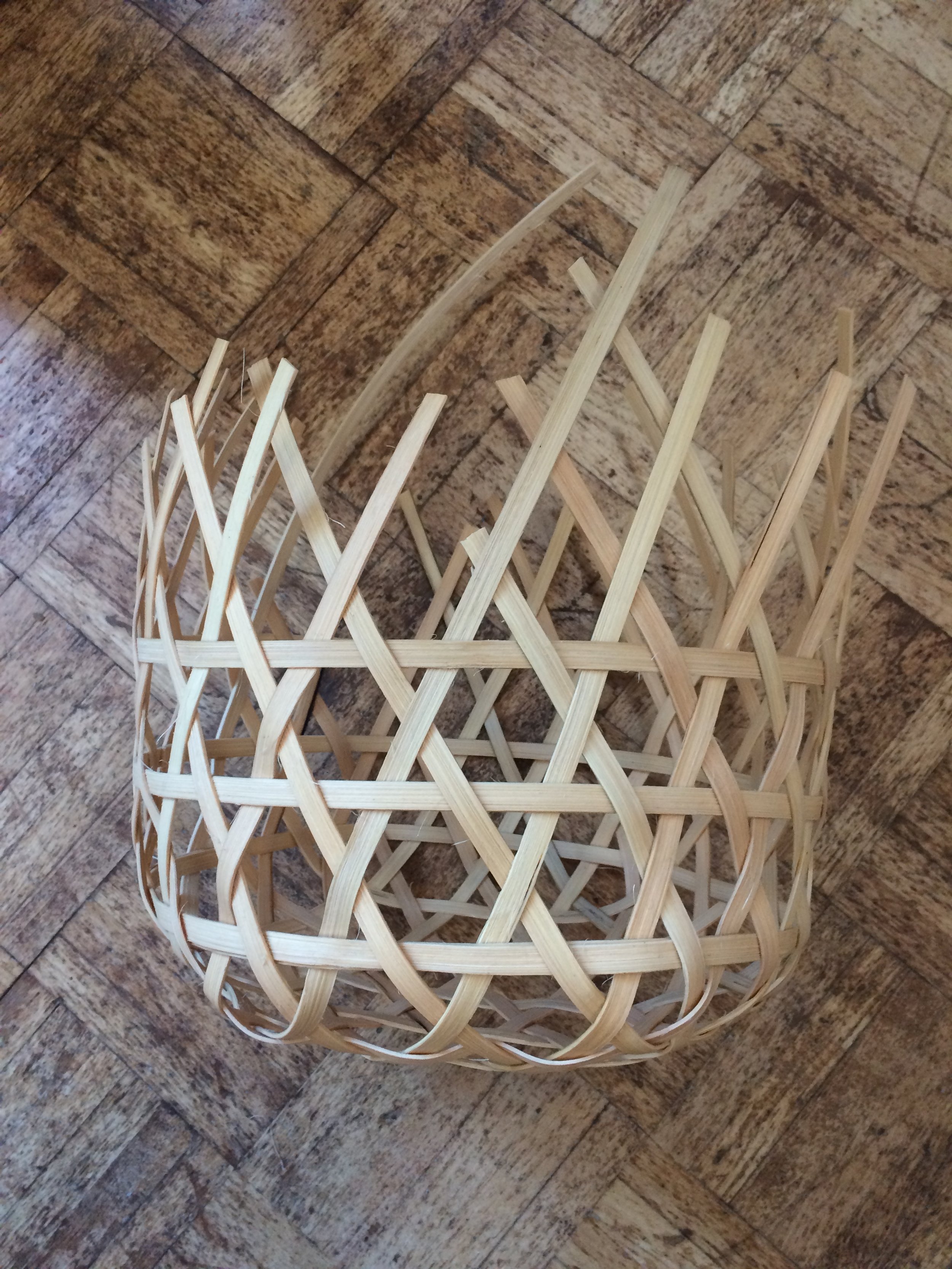

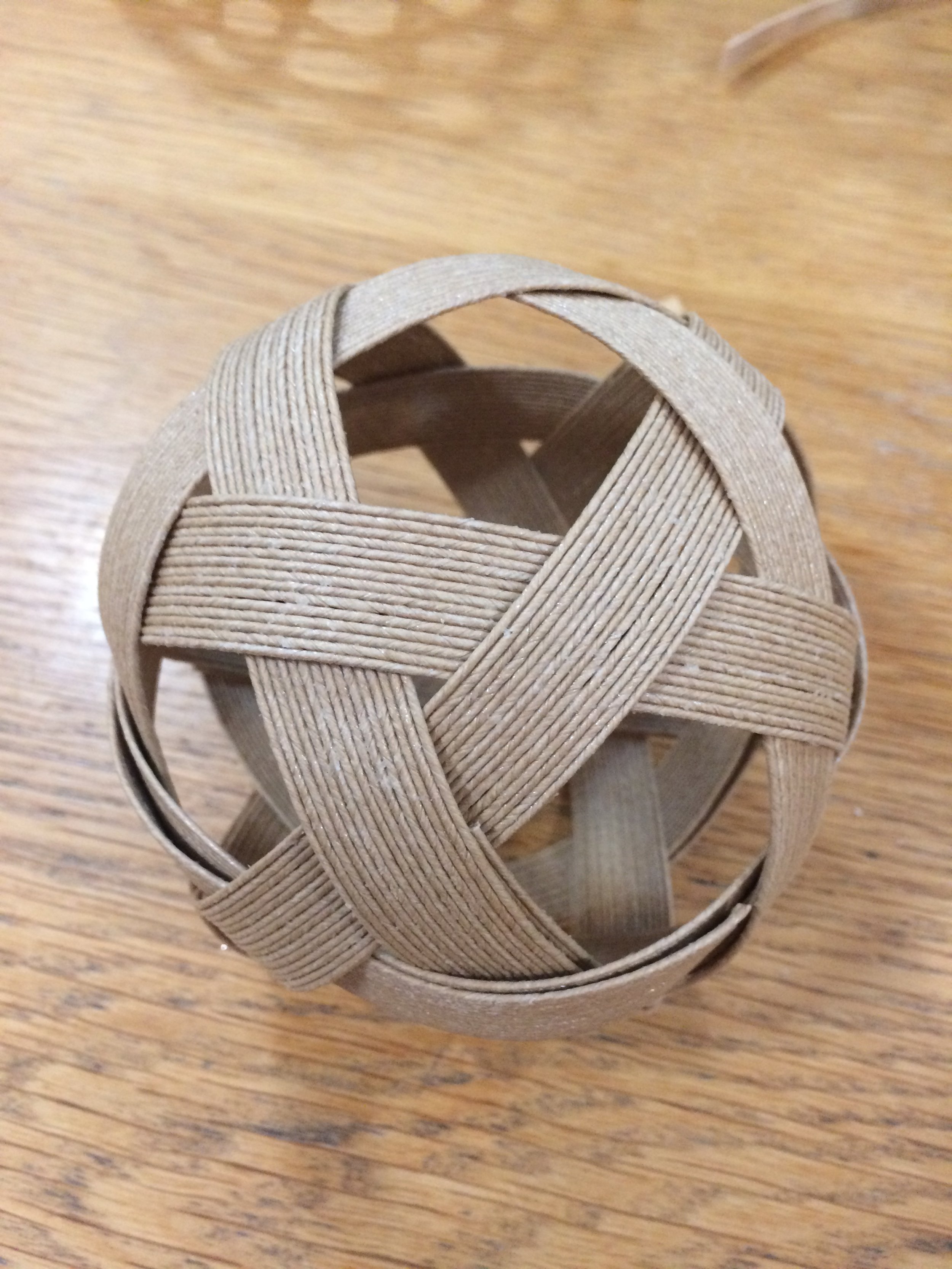
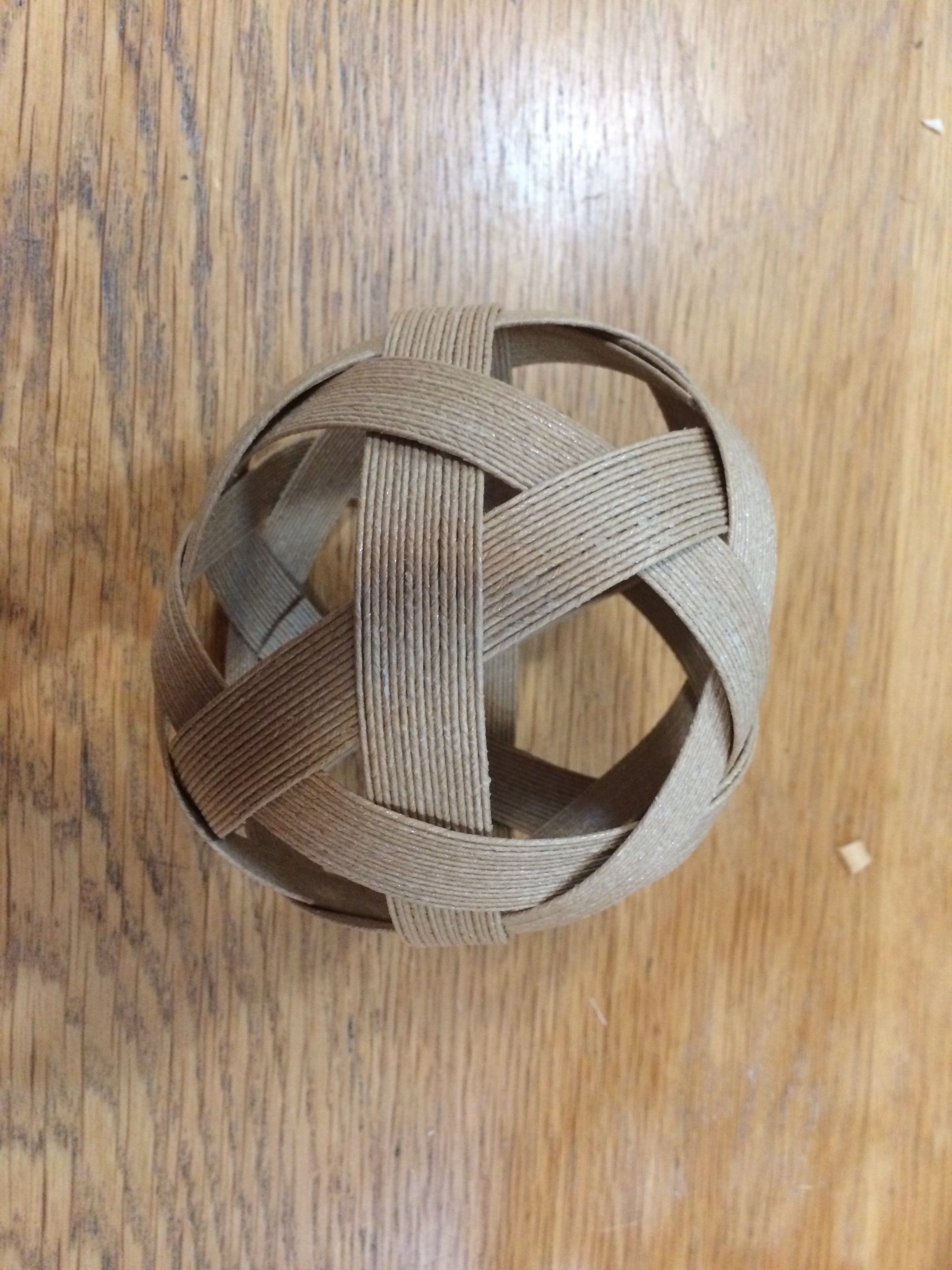
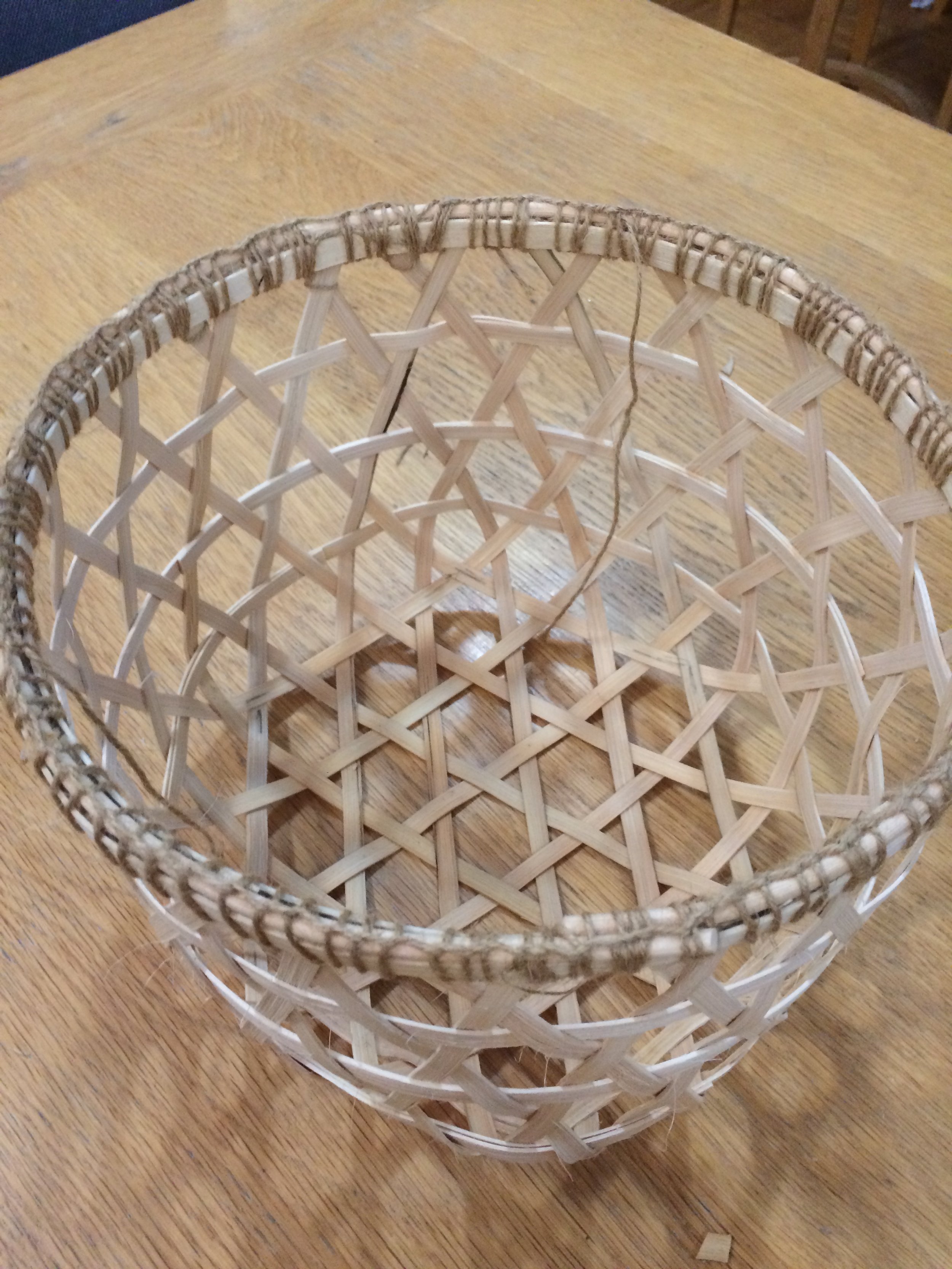
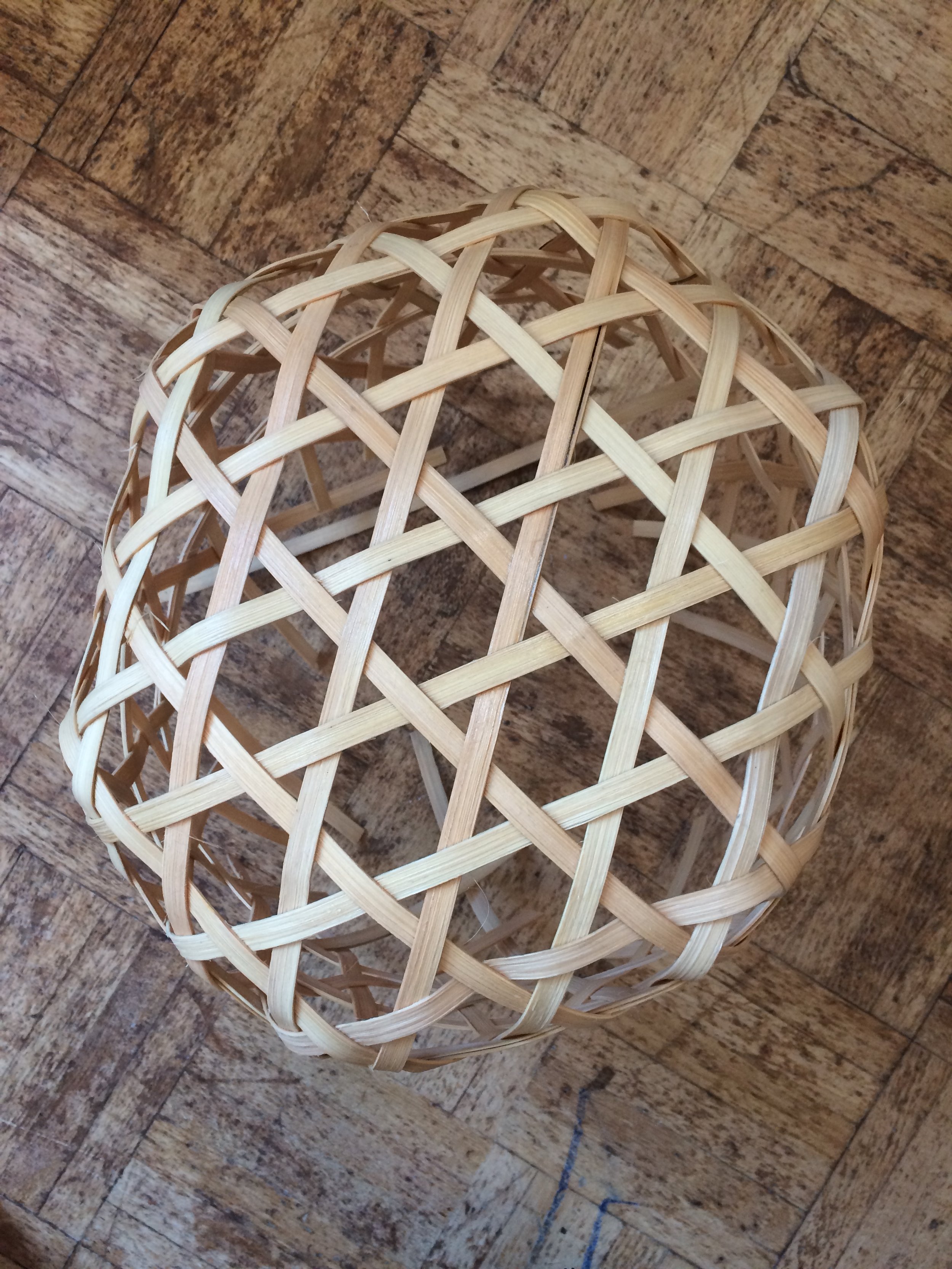
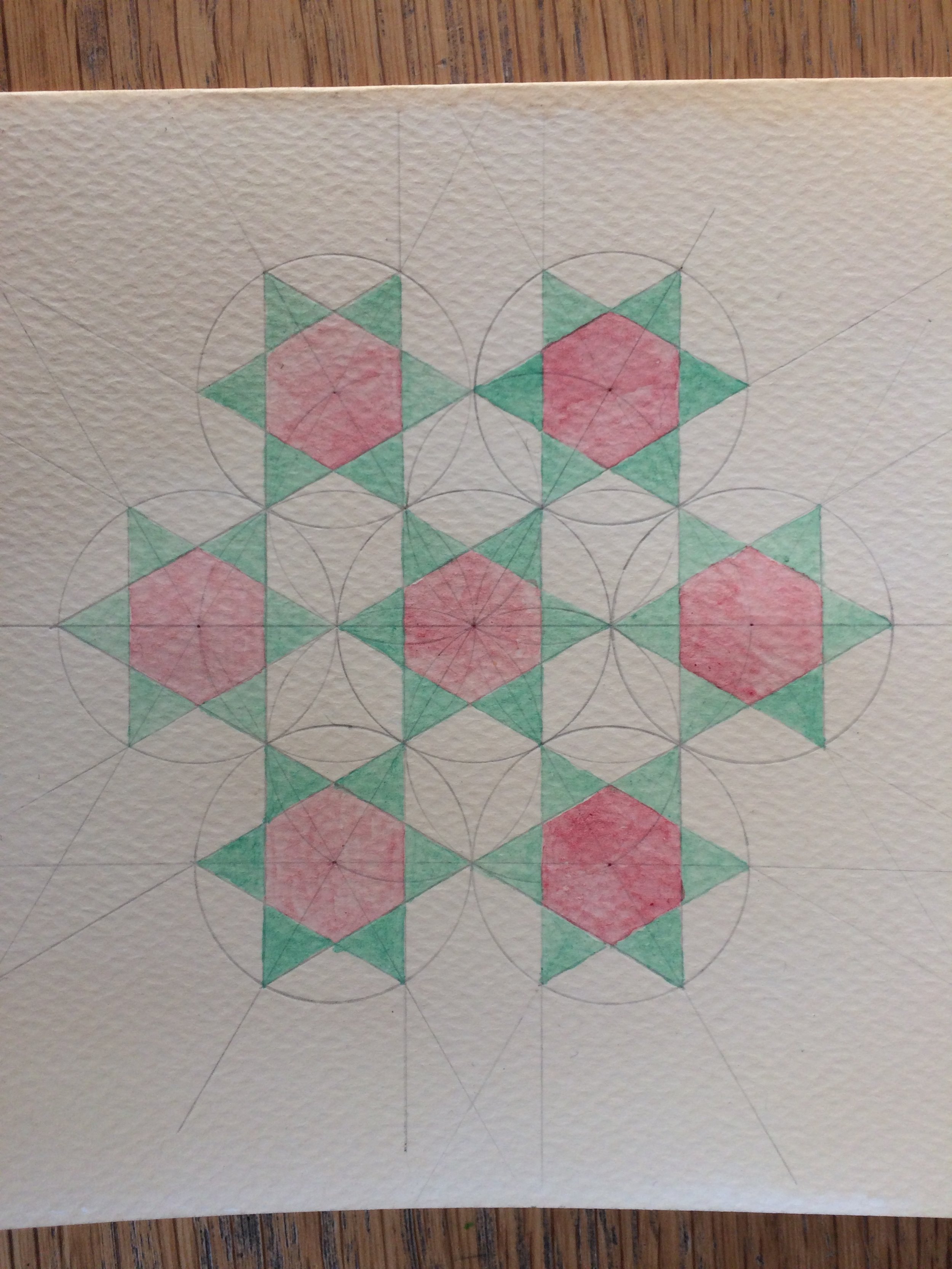


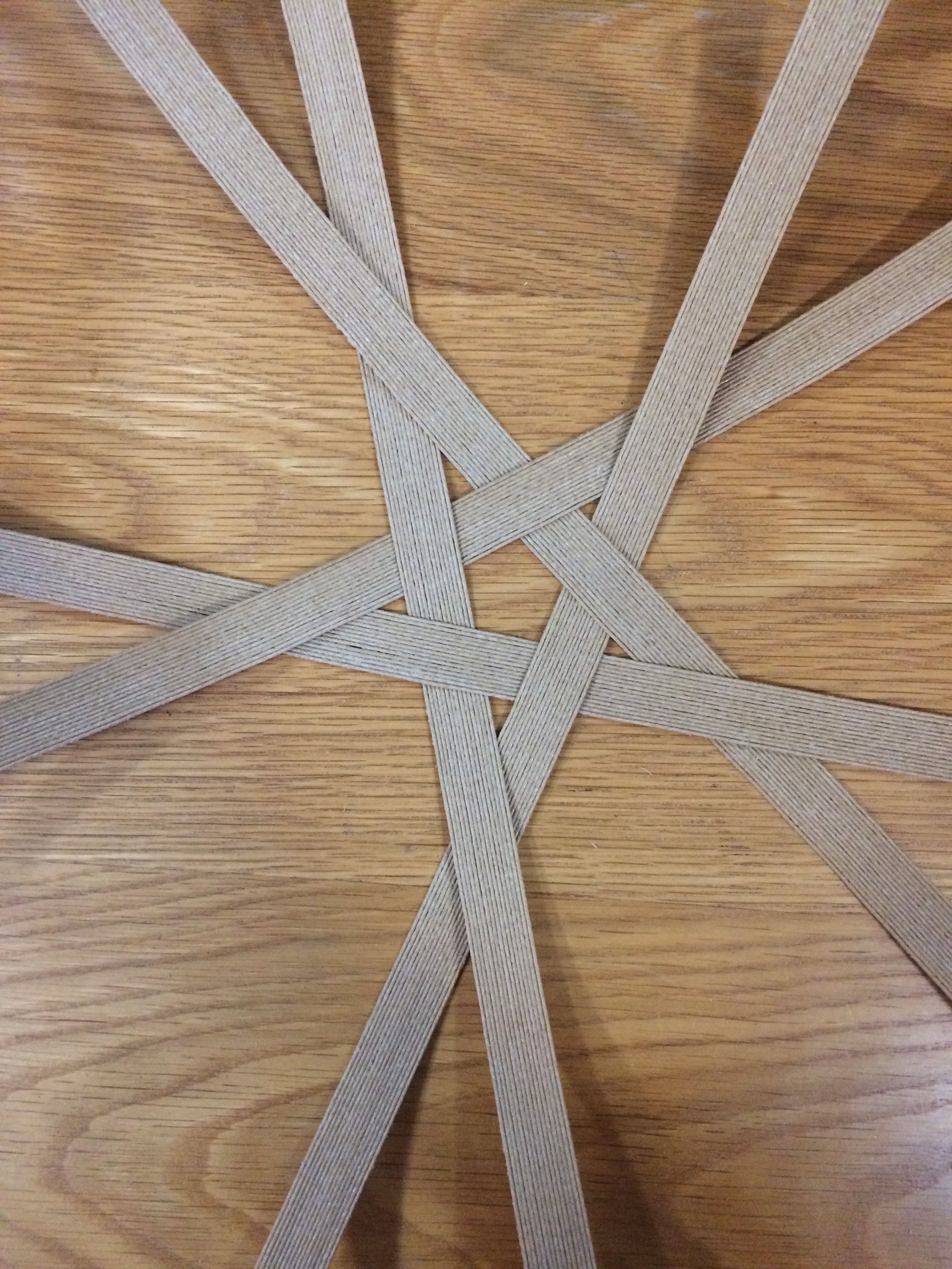
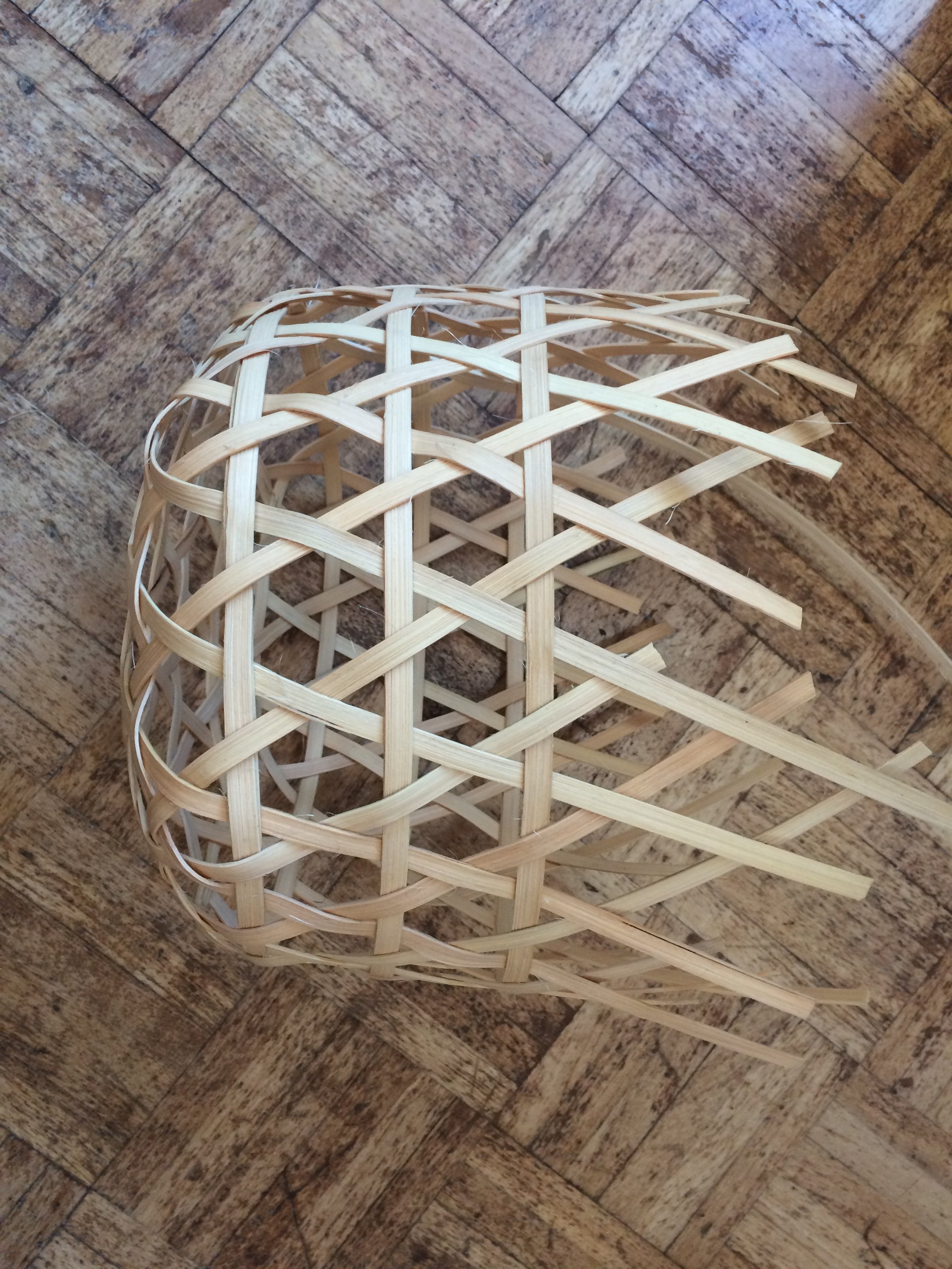
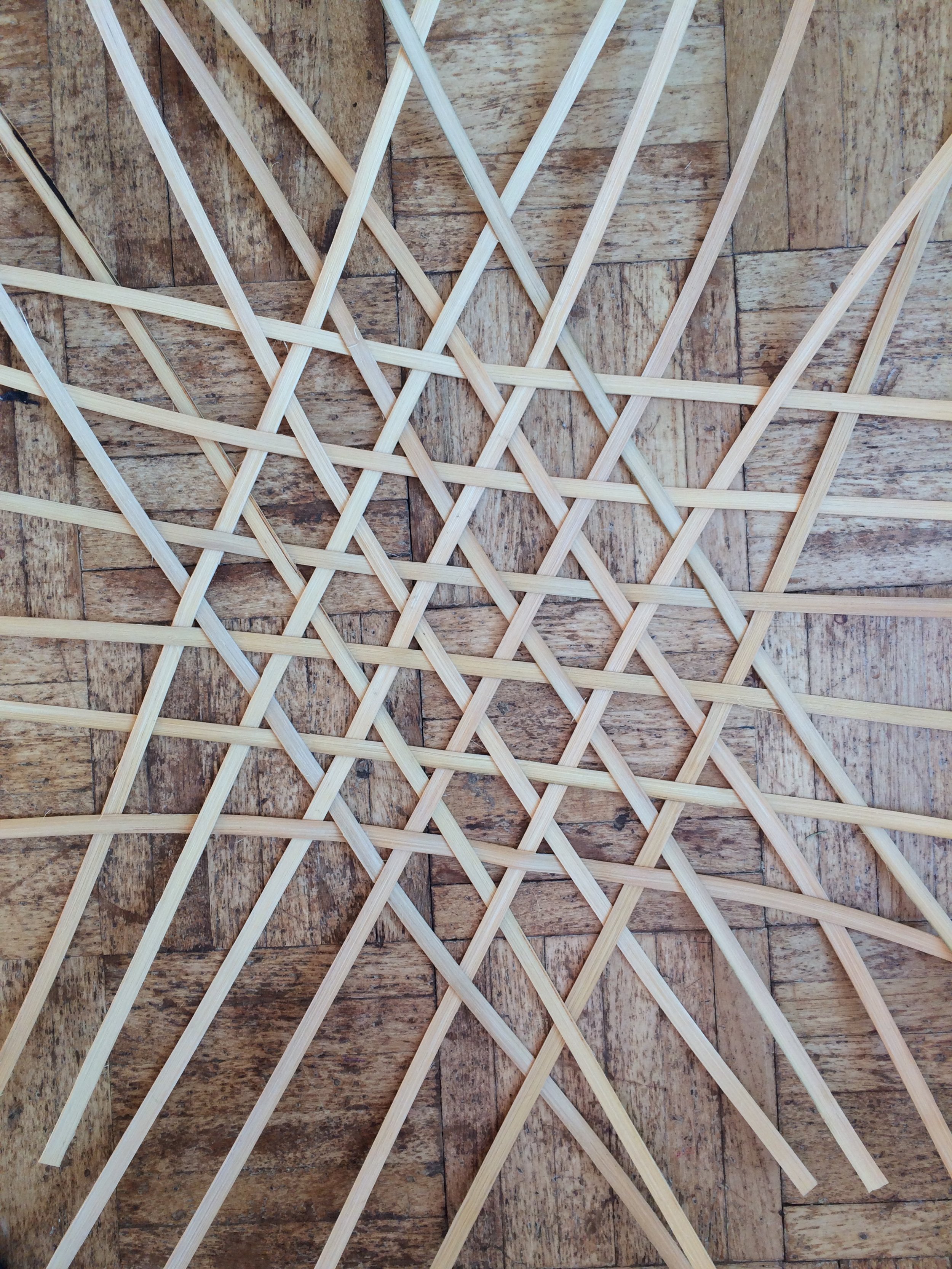

Gothic roses
I decided to explore sacred geometry within the Christian tradition in order to discover why Gothic rose windows have the impact on us in the way that they do. As I discovered the beauty comes from a form that is founded in wisdom and a respect for the natural order.
I first made a horizontal line, and then drew a circle on that line with my compass. The point here the circle crossed that horizontal line I used as the centre point of my second circle. The result is what is called the “vesica pecis” or “fish bladder” in Latin. This mandorla shape looks a lot like a fish, an early Christian symbol. It is also used in Christian art to contain images of the figure of Christ or the Virgin Mary. In gothic rose windows stained glass images of the saints or other holy images would be contained in this.
I moved on to draw a ‘Flower of Life’ by dividing my circle on the compass in to 6 parts. I also did exercises practicing how to divide a circle in to 3, 5, 6, and 8 parts, how to form passive and dynamic squares and how to bisect an angle using two perpendicular lines. I then moved on to drawing the arches which are usually seen surrounding the roses. I used my compass to draw an equilateral arch, a 2/3 arch and a ¾ arch. I also measured out the small arches pointing outwards and larger inward pointing arches that are often used for embellishment on the outer parts of the roses. Eventually I took some images of my favourite rose windows and tried to draw them out.
This way of learning geometry would have formed part of the Trivium (grammar, logic, rhetoric) and the Quadrivium (arithmetic, geometry, music and astronomy), of a Liberal Arts education in the Middle Ages and beyond. When geometry is taught in this way it becomes very instinctive and natural, as one line builds onto another line. Shapes and lines are formed by their connection and relationship to one another, in a very logical and meaningful sequence. I think this would form an excellent part of a homeschooling programme.

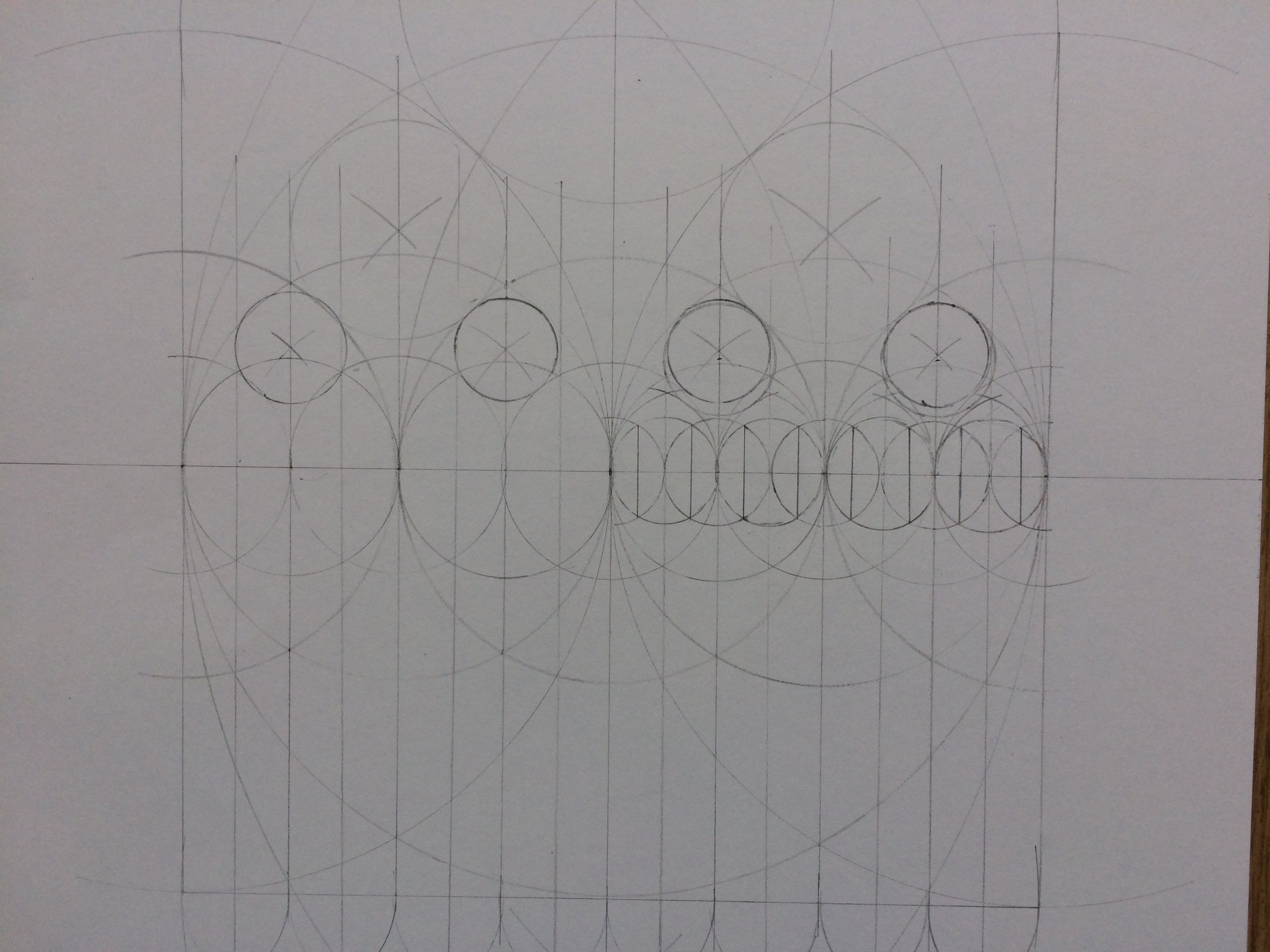
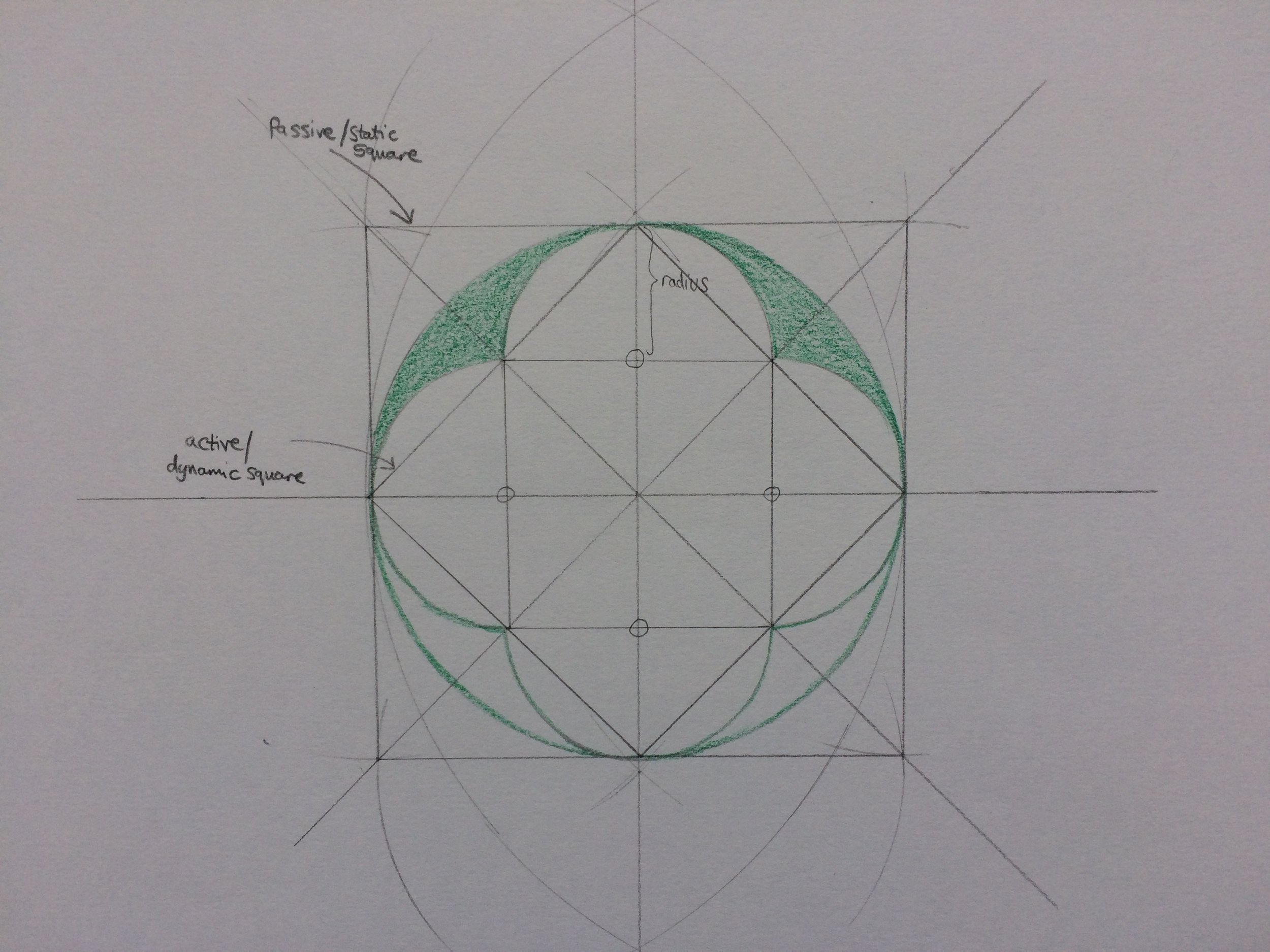
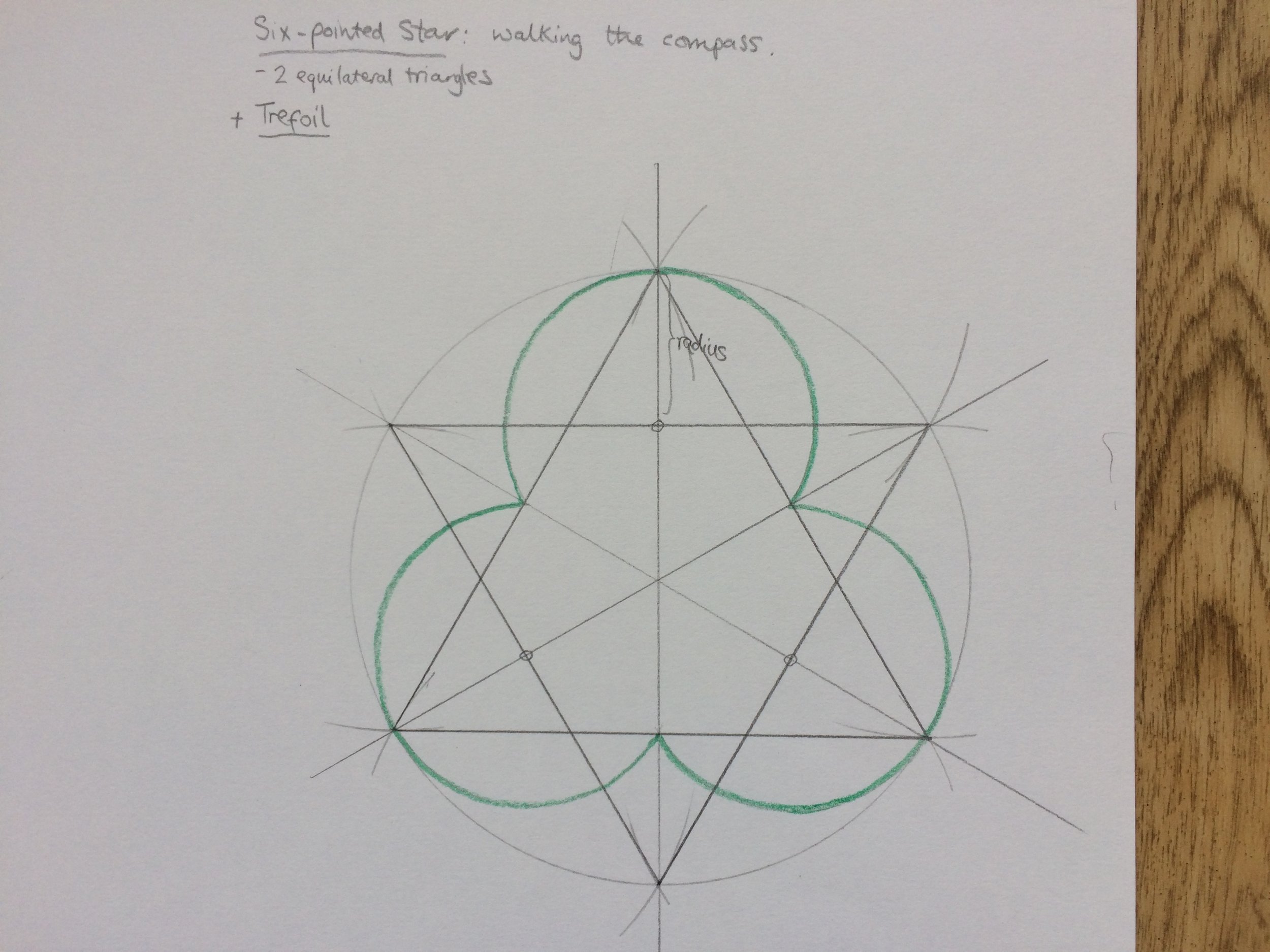

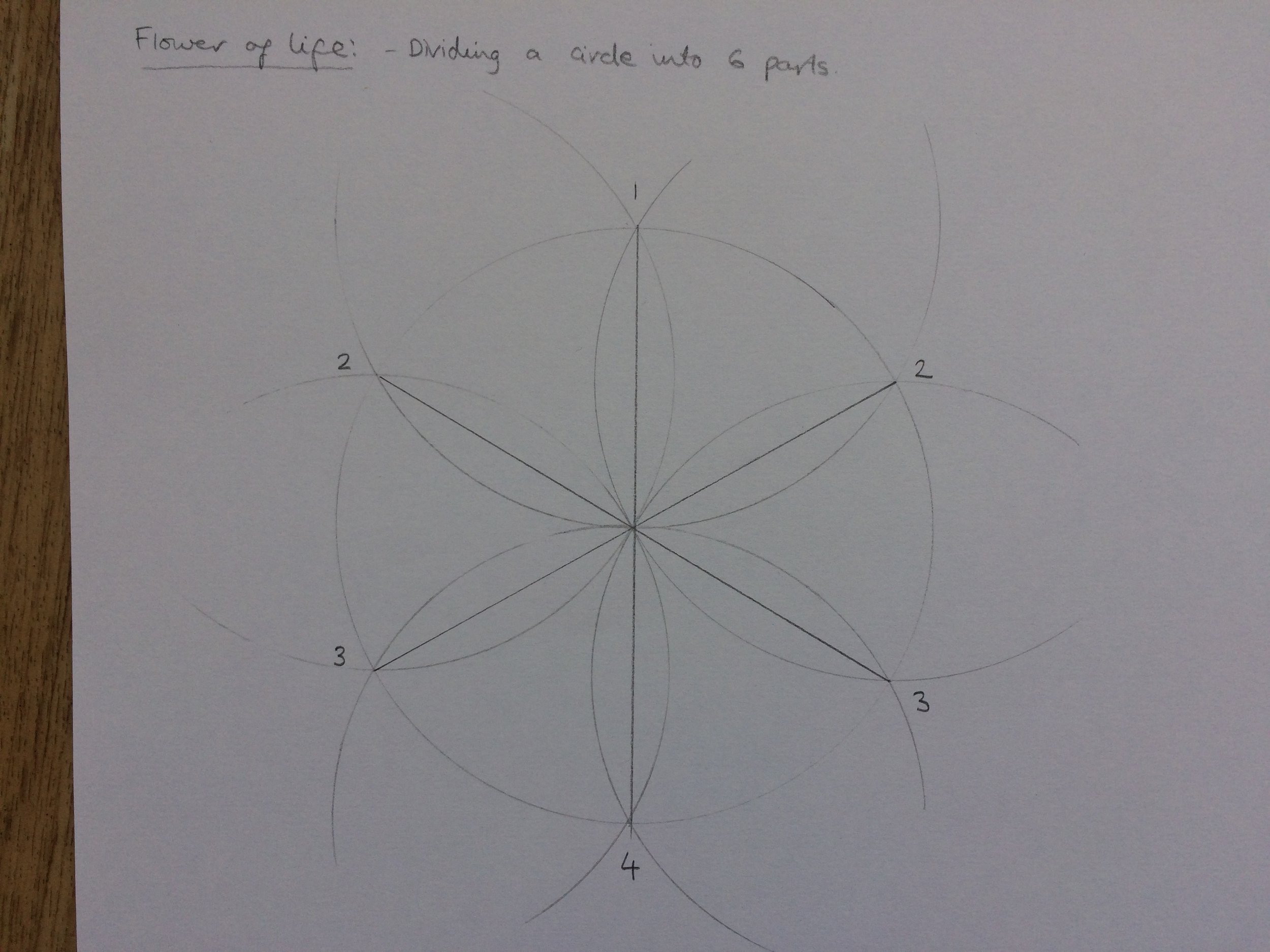
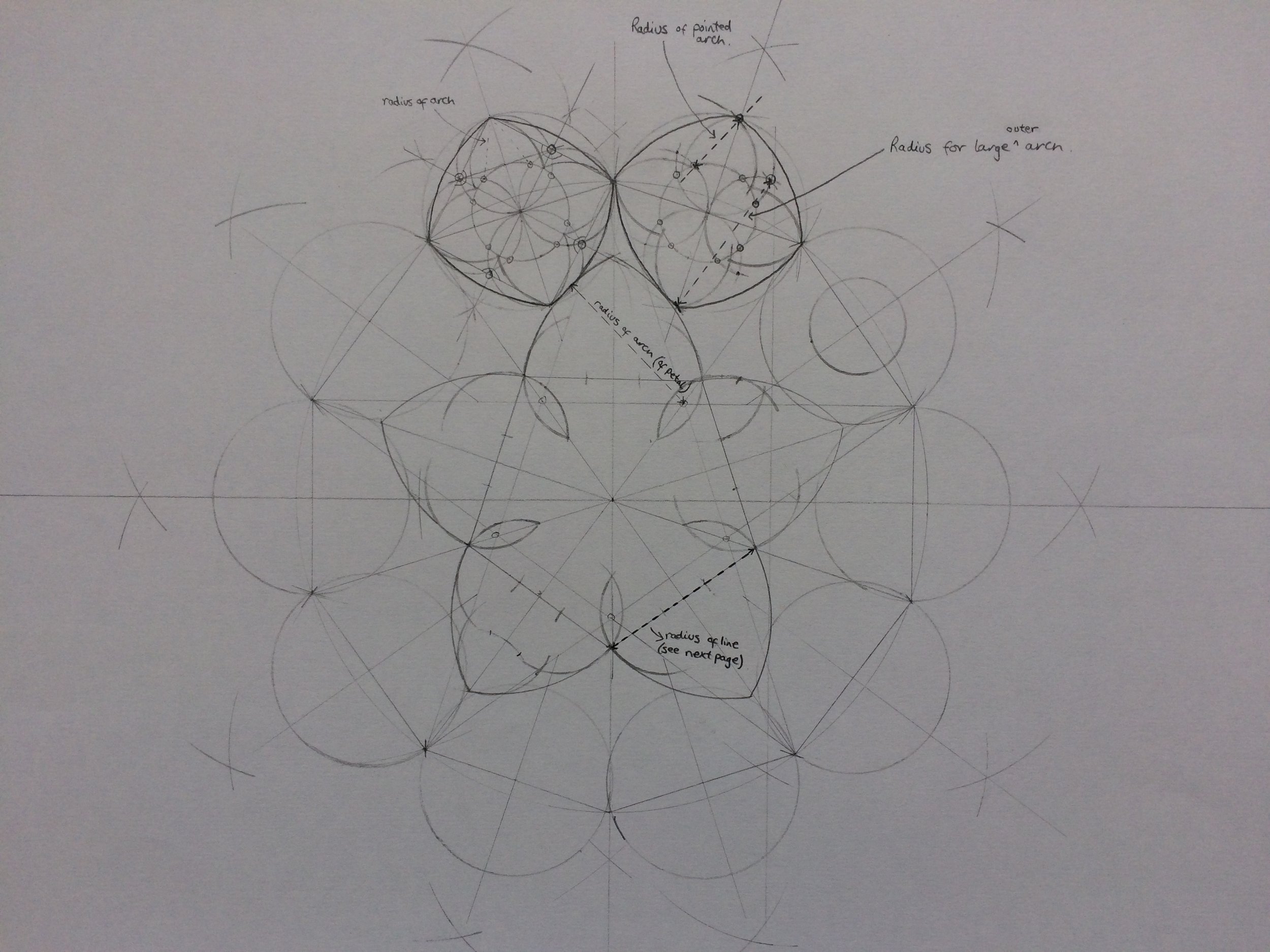
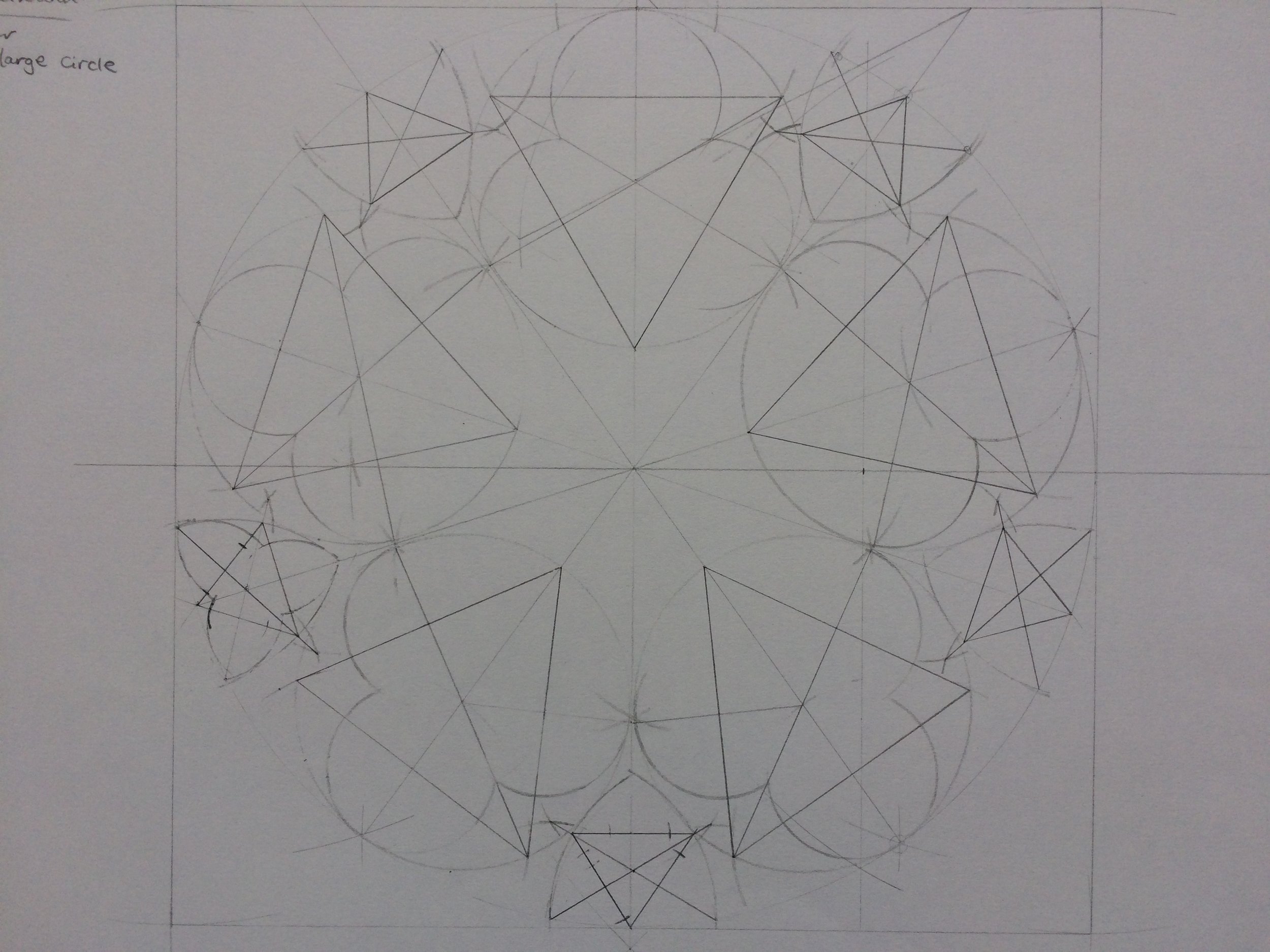


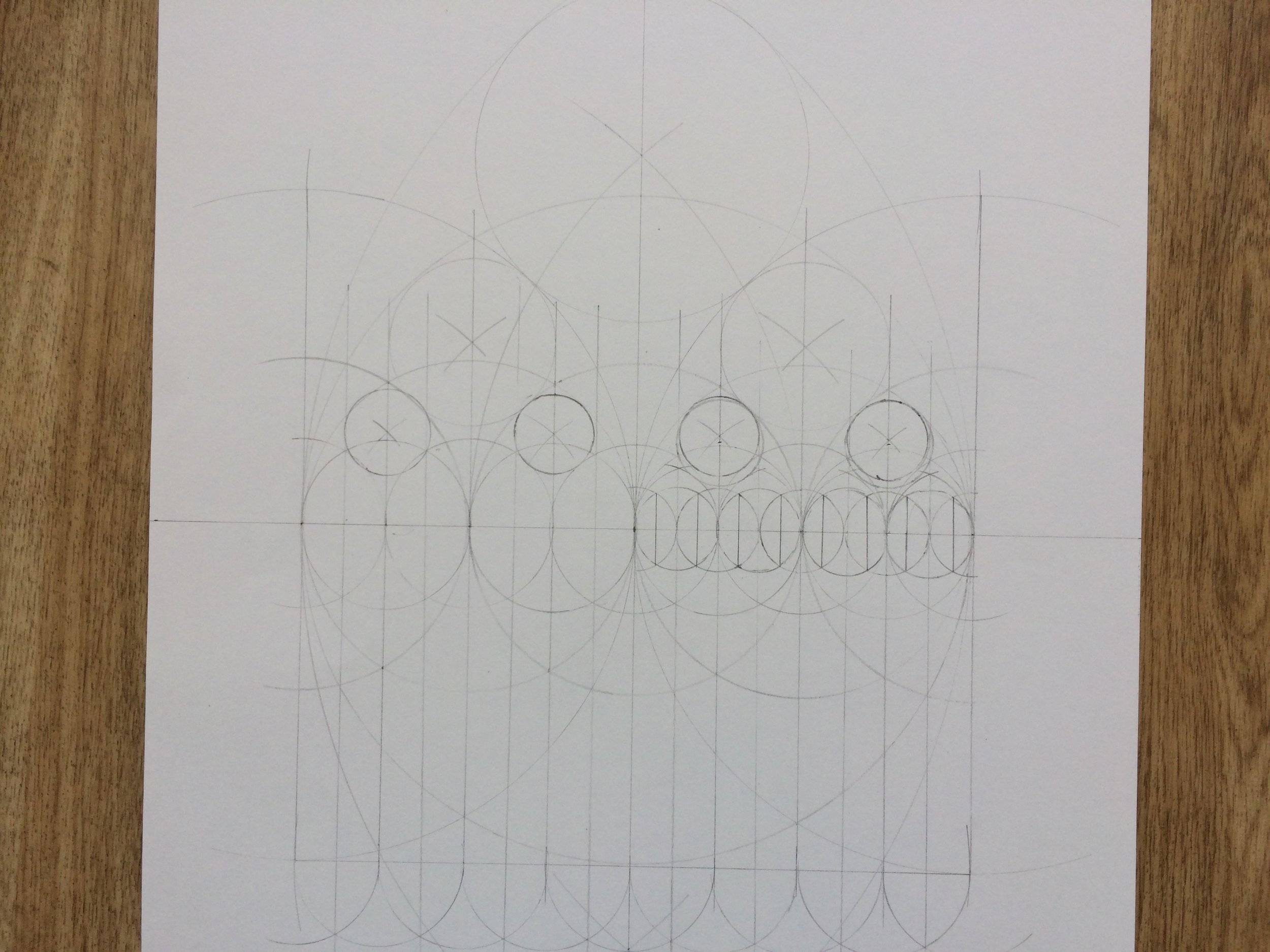

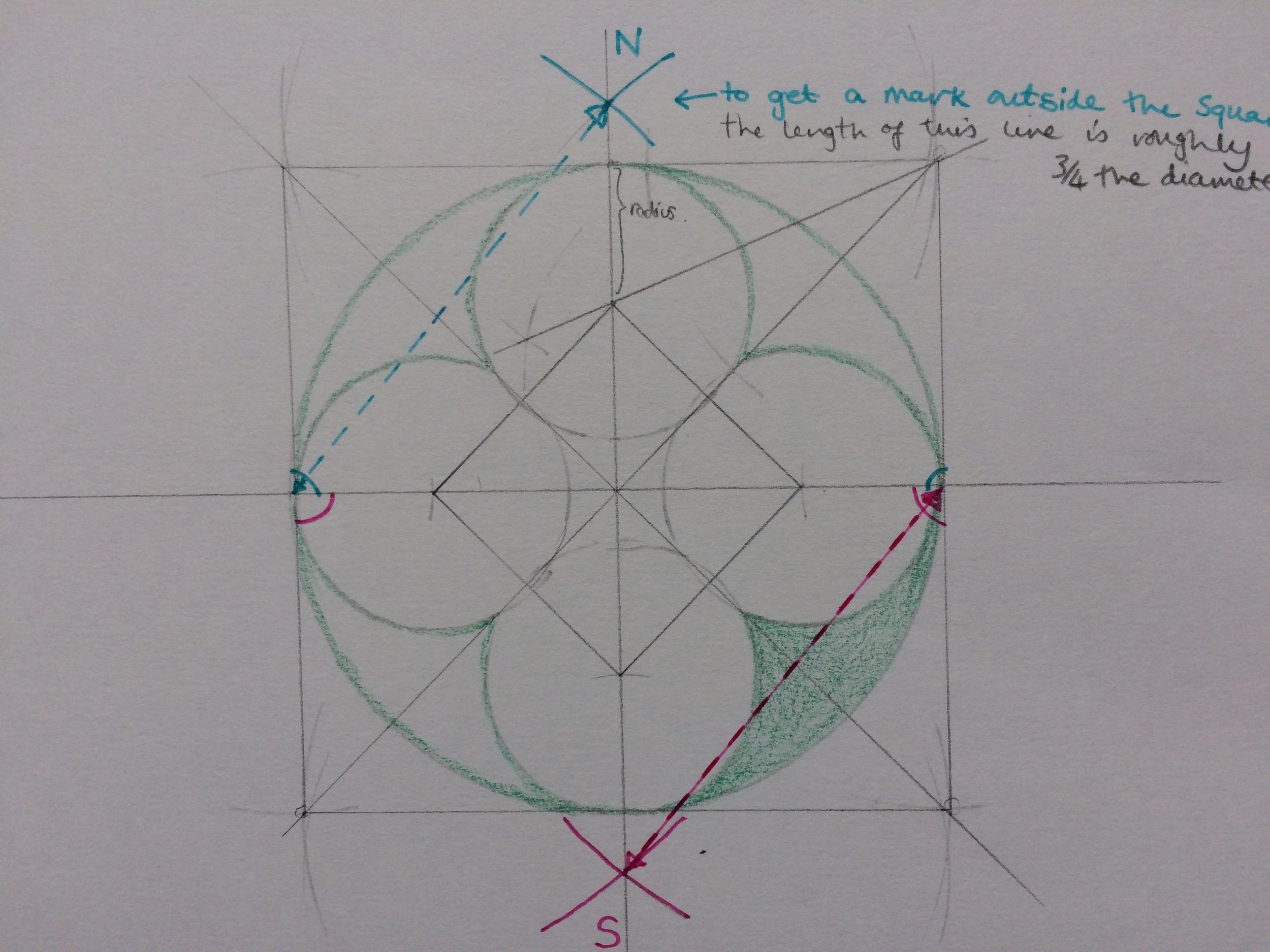
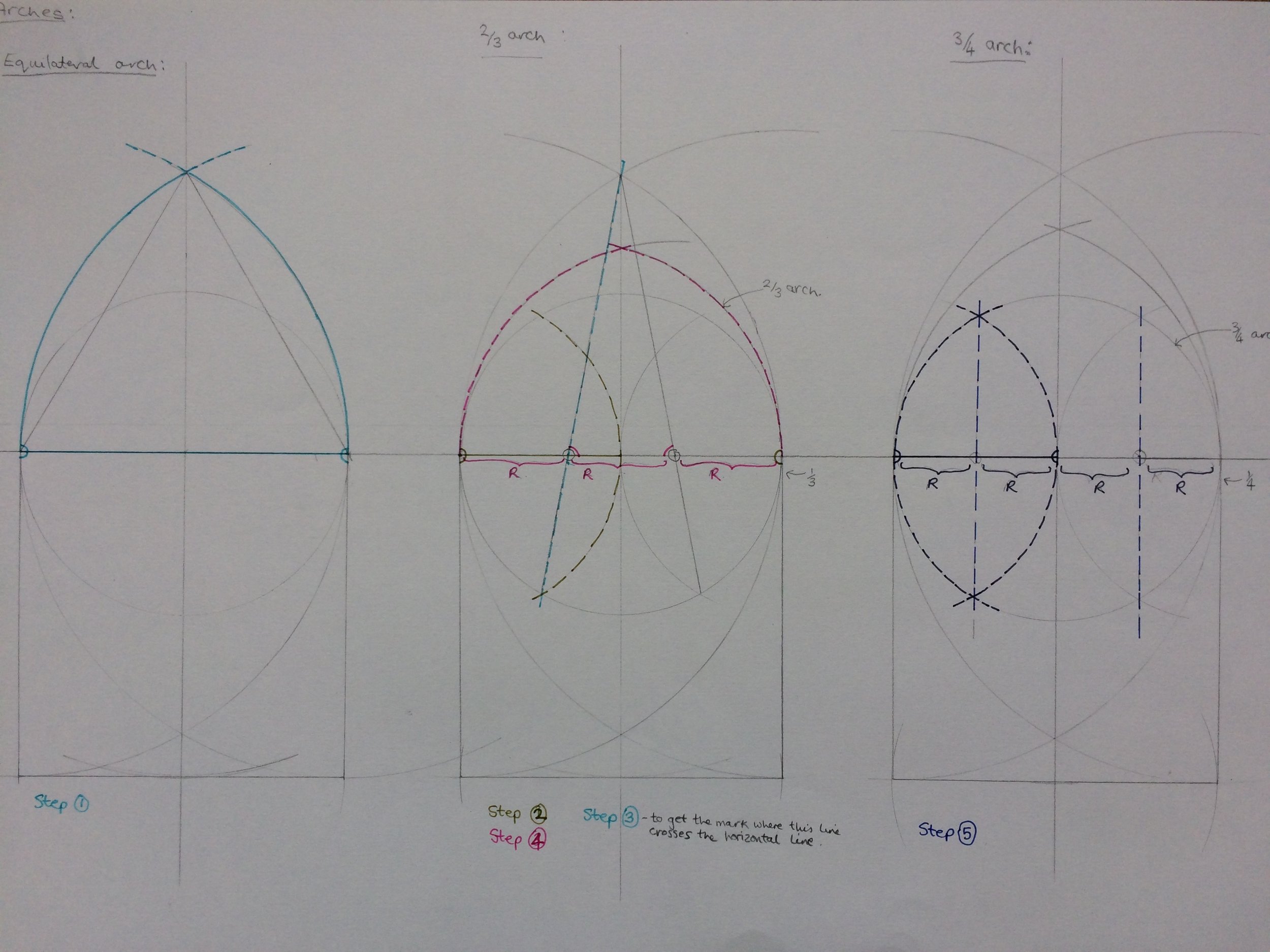

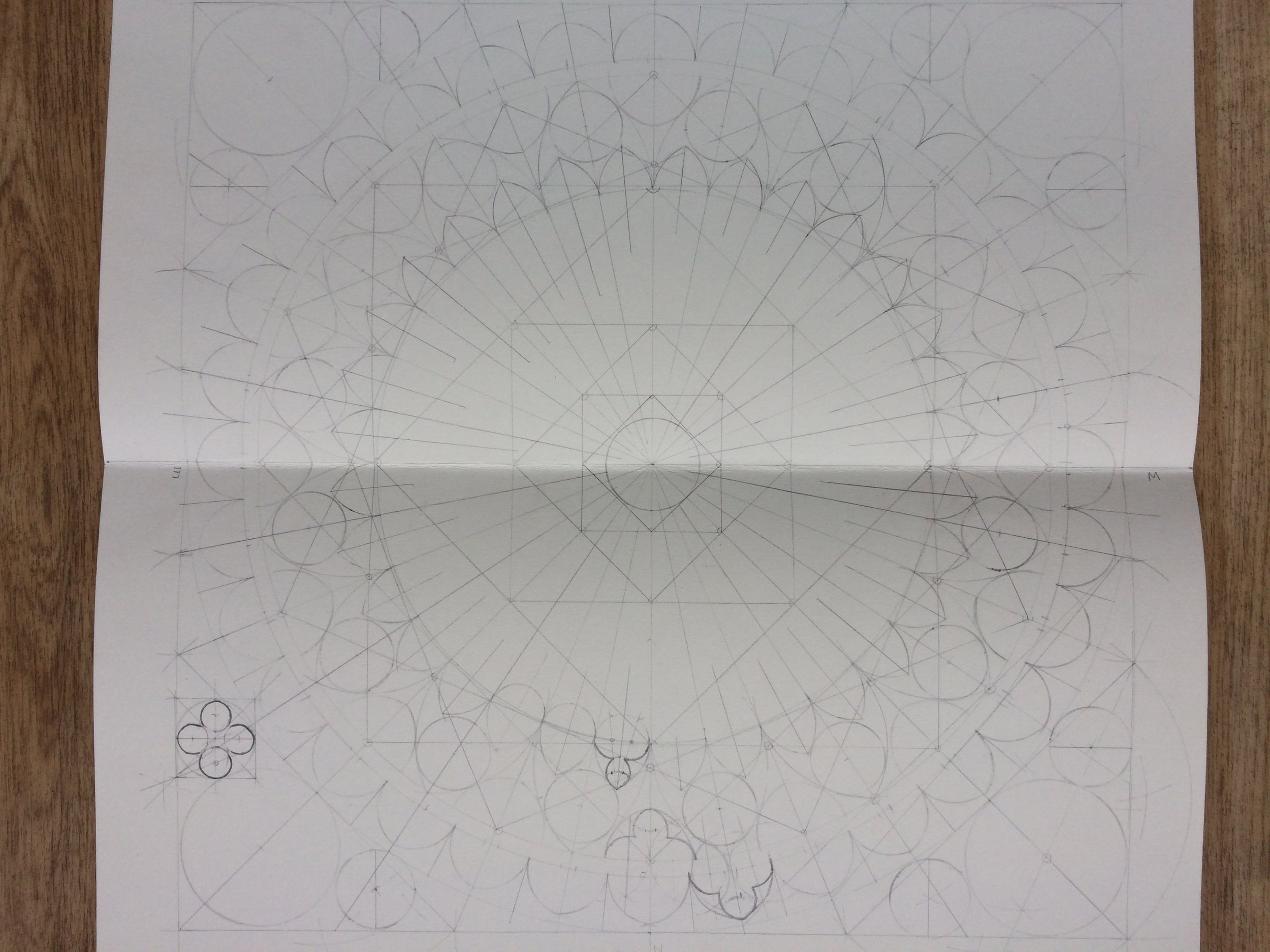
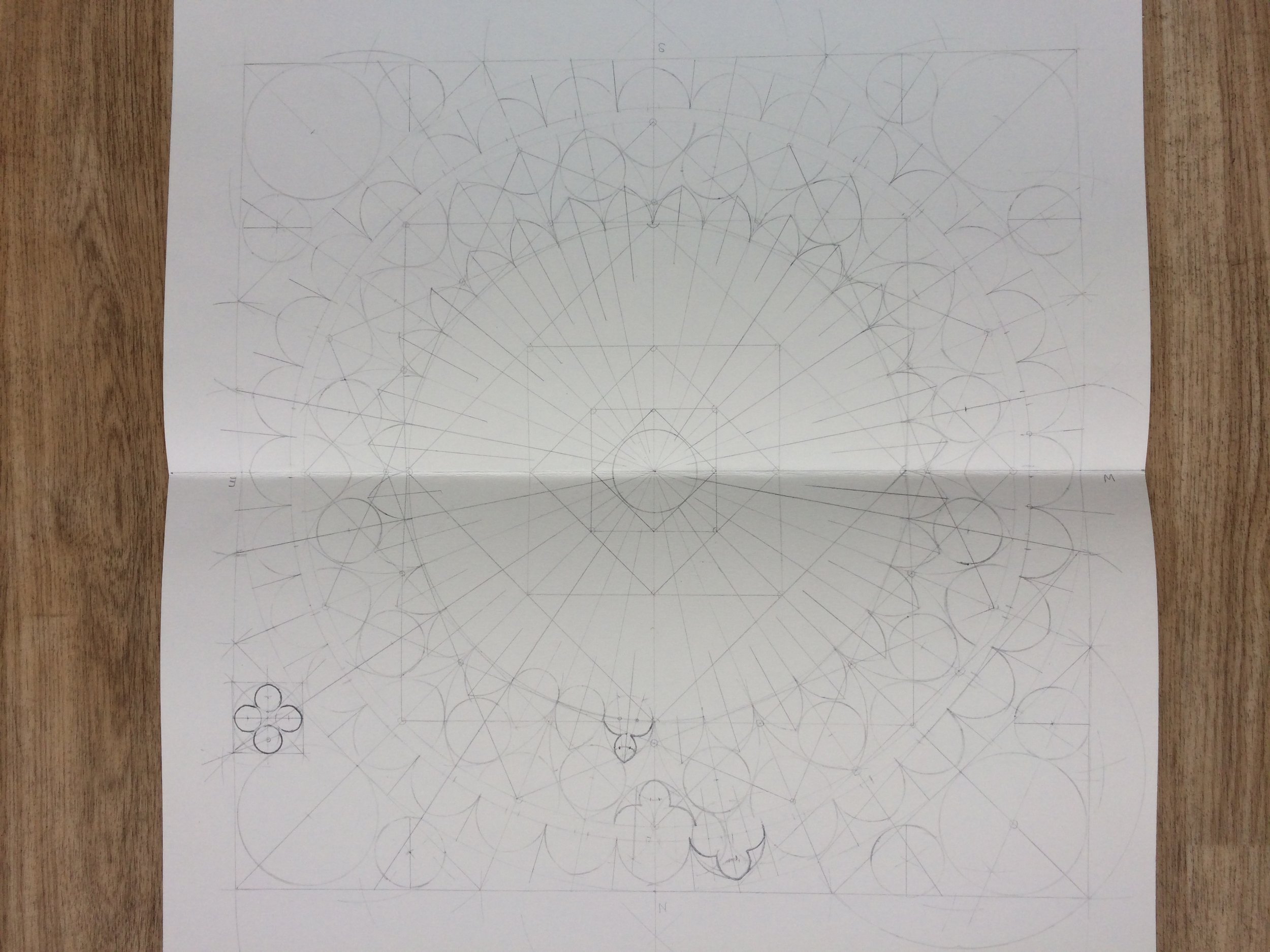

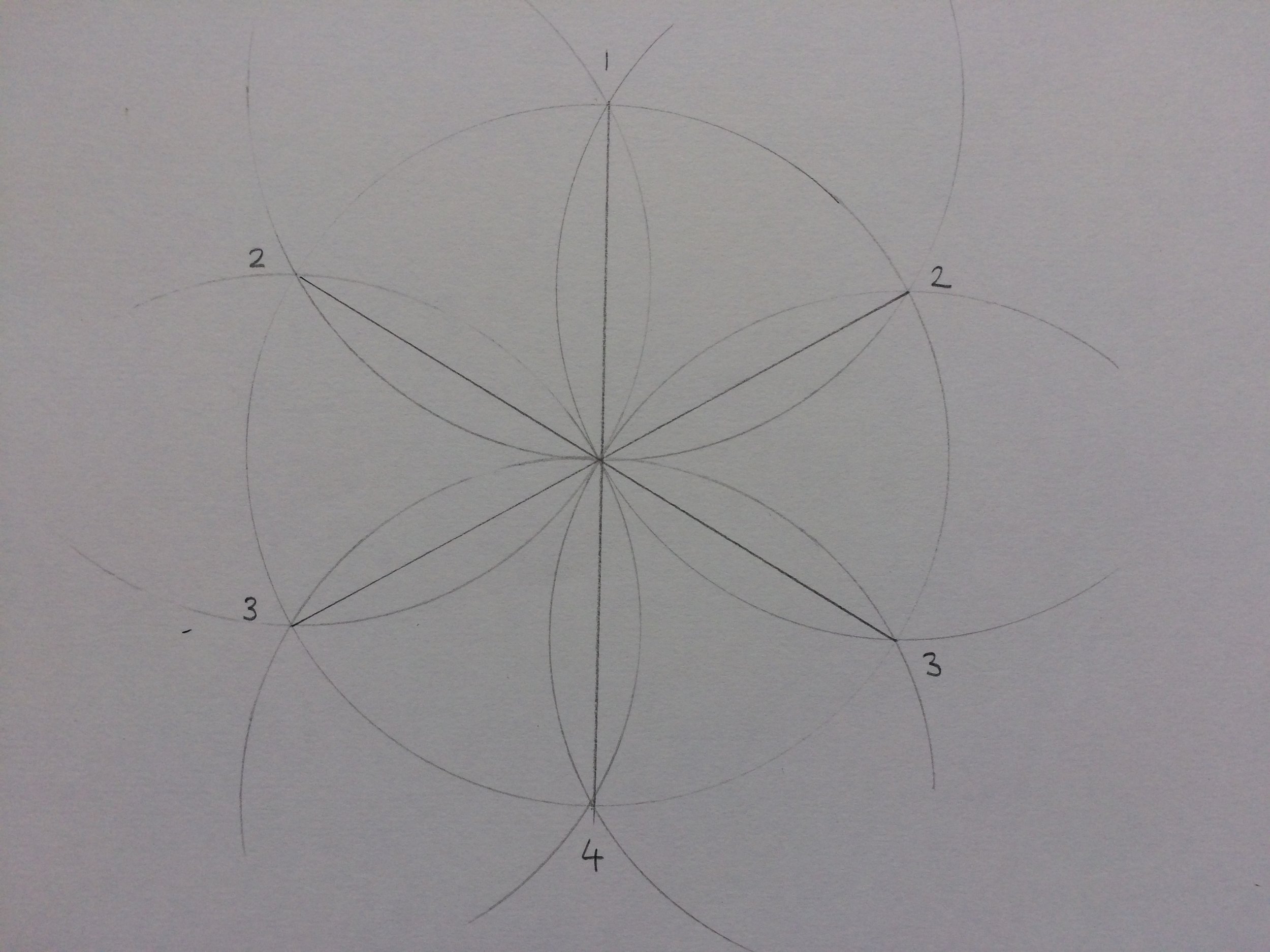
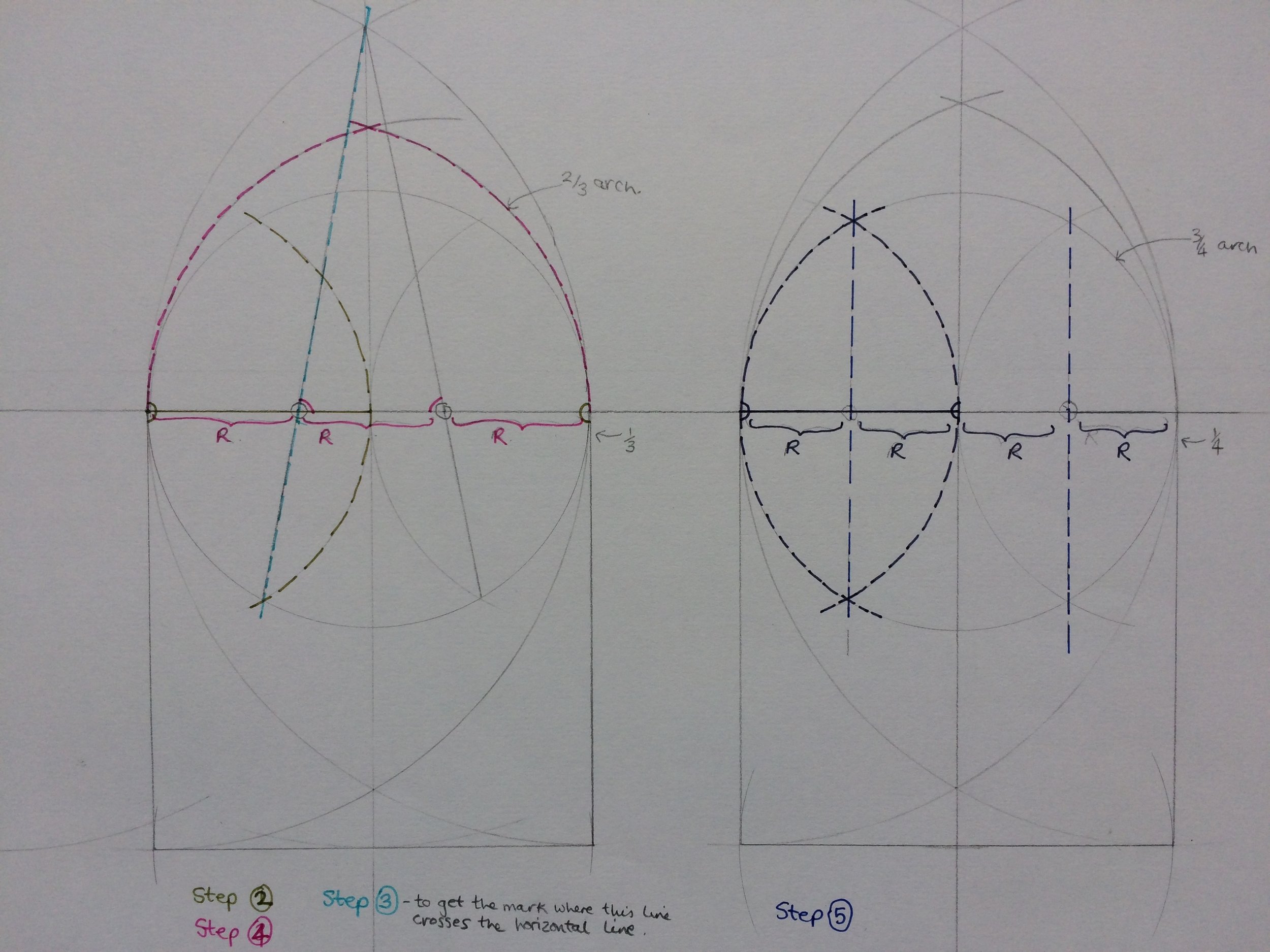
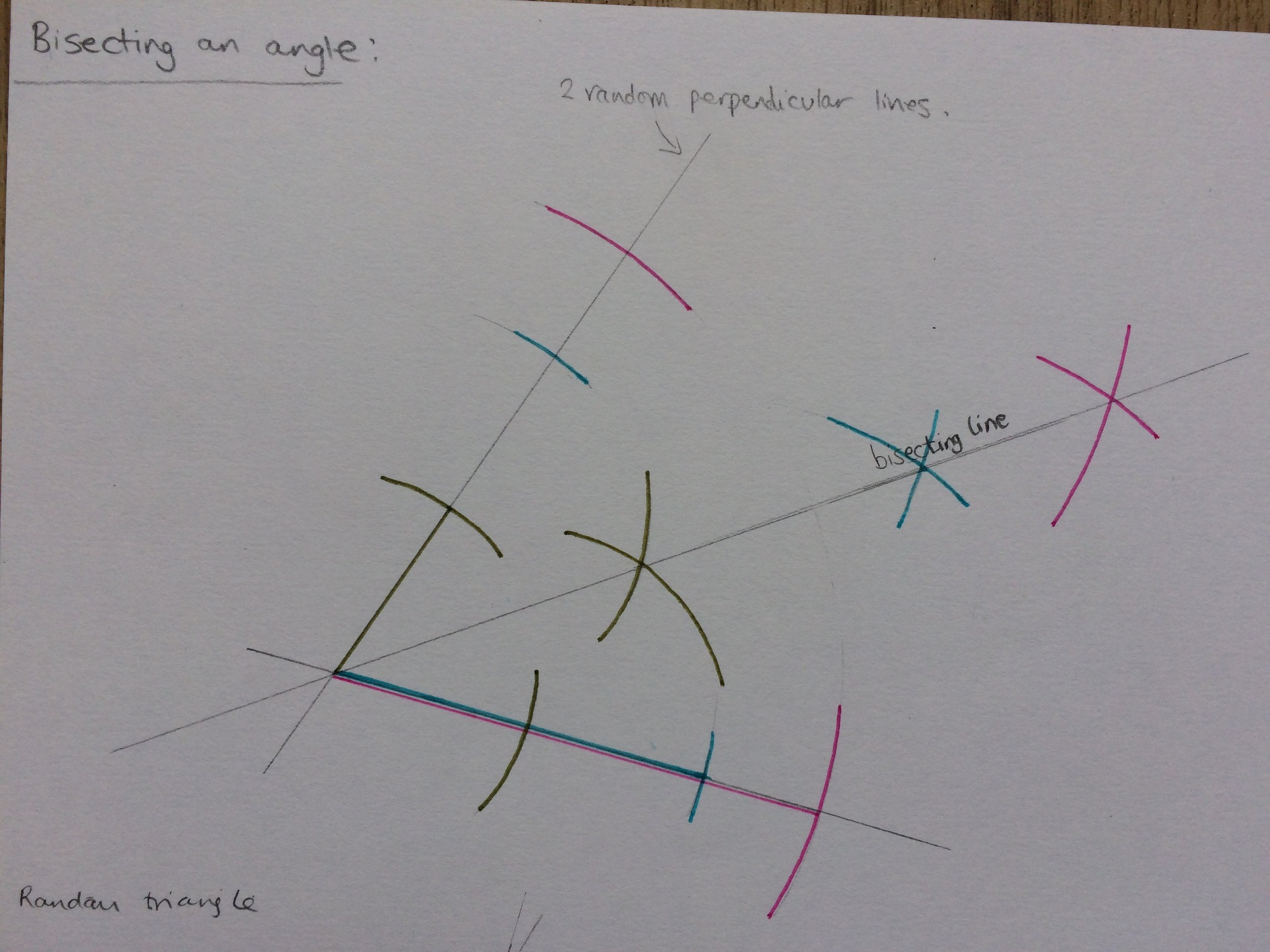
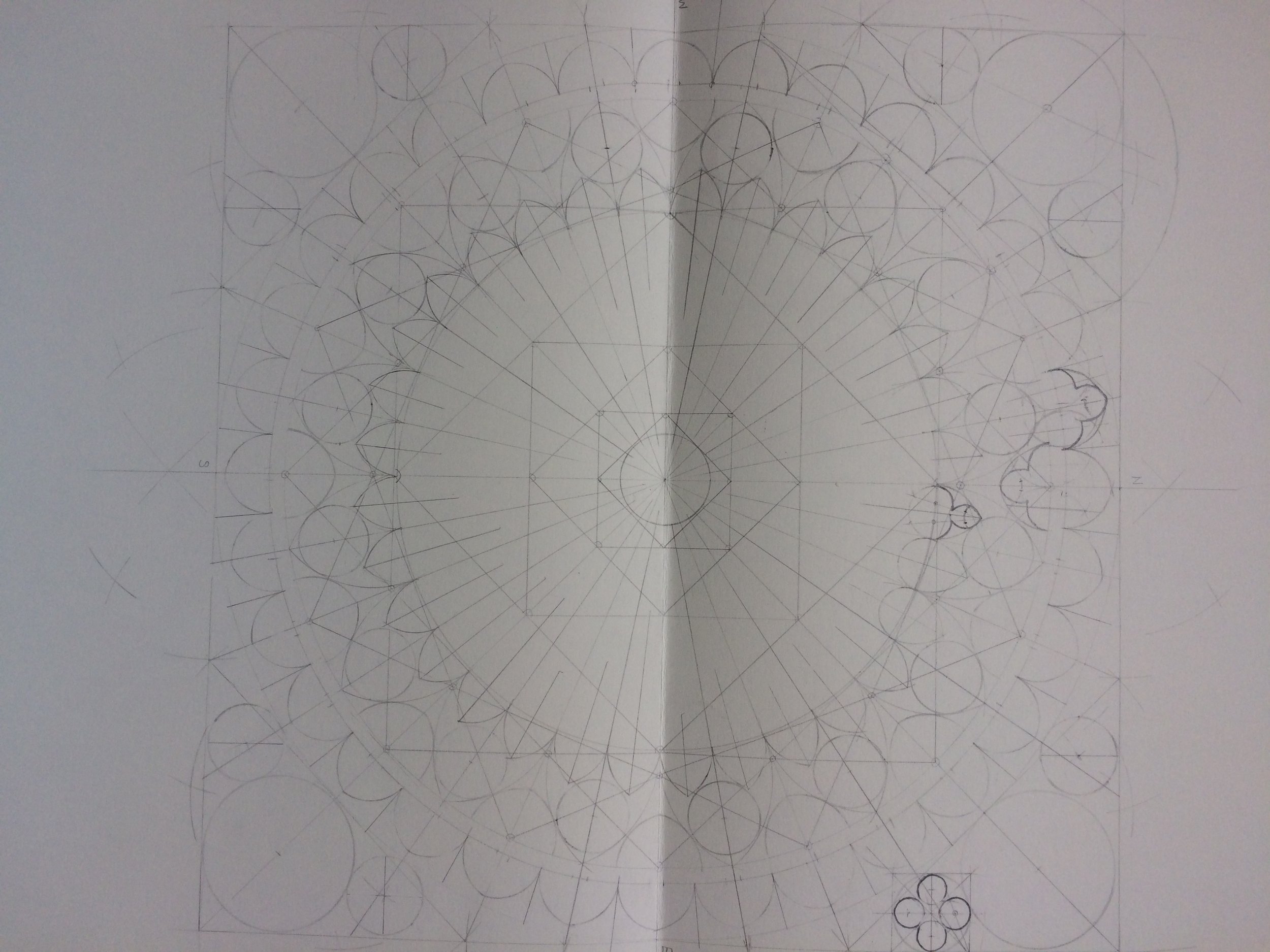

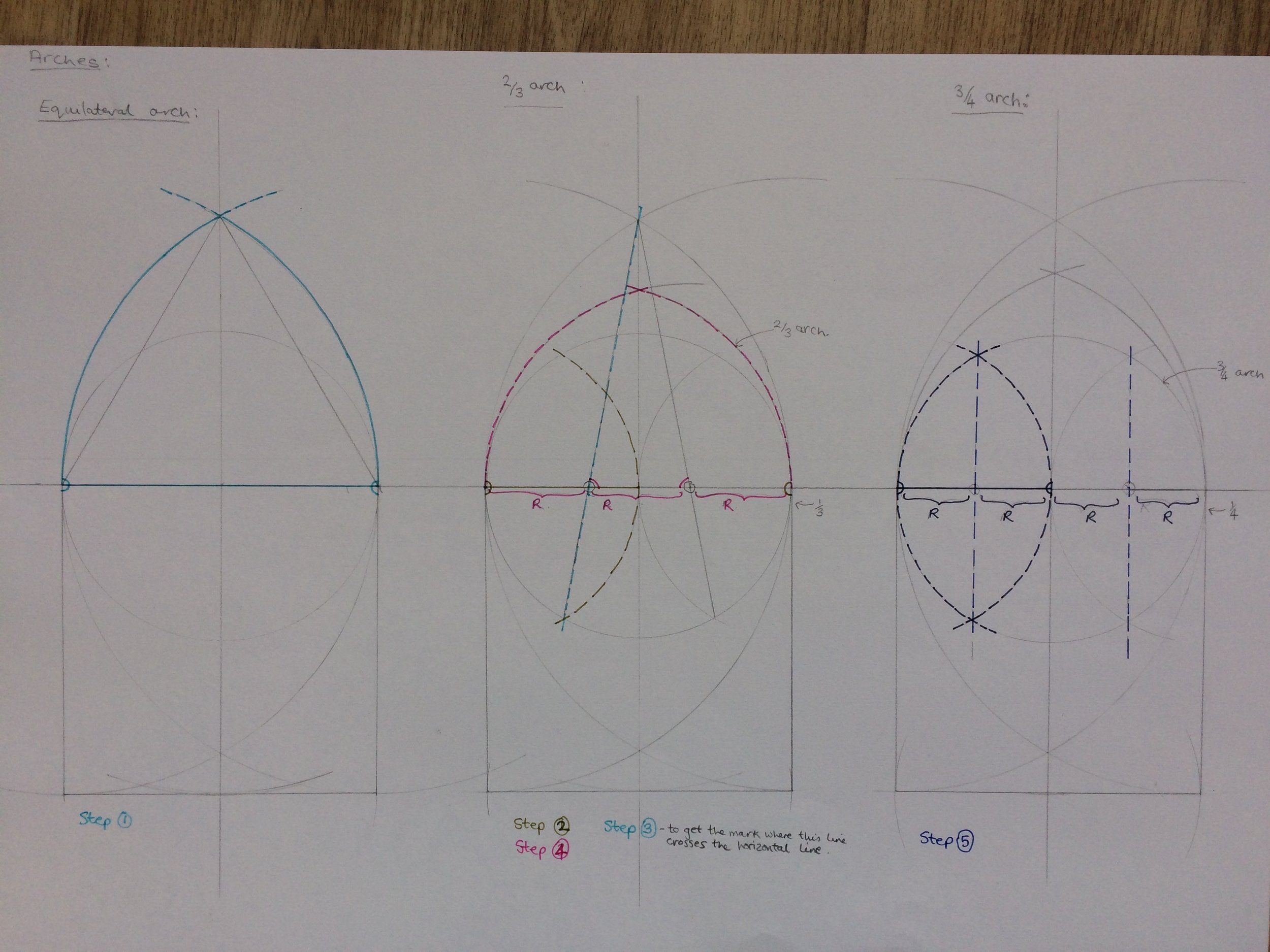
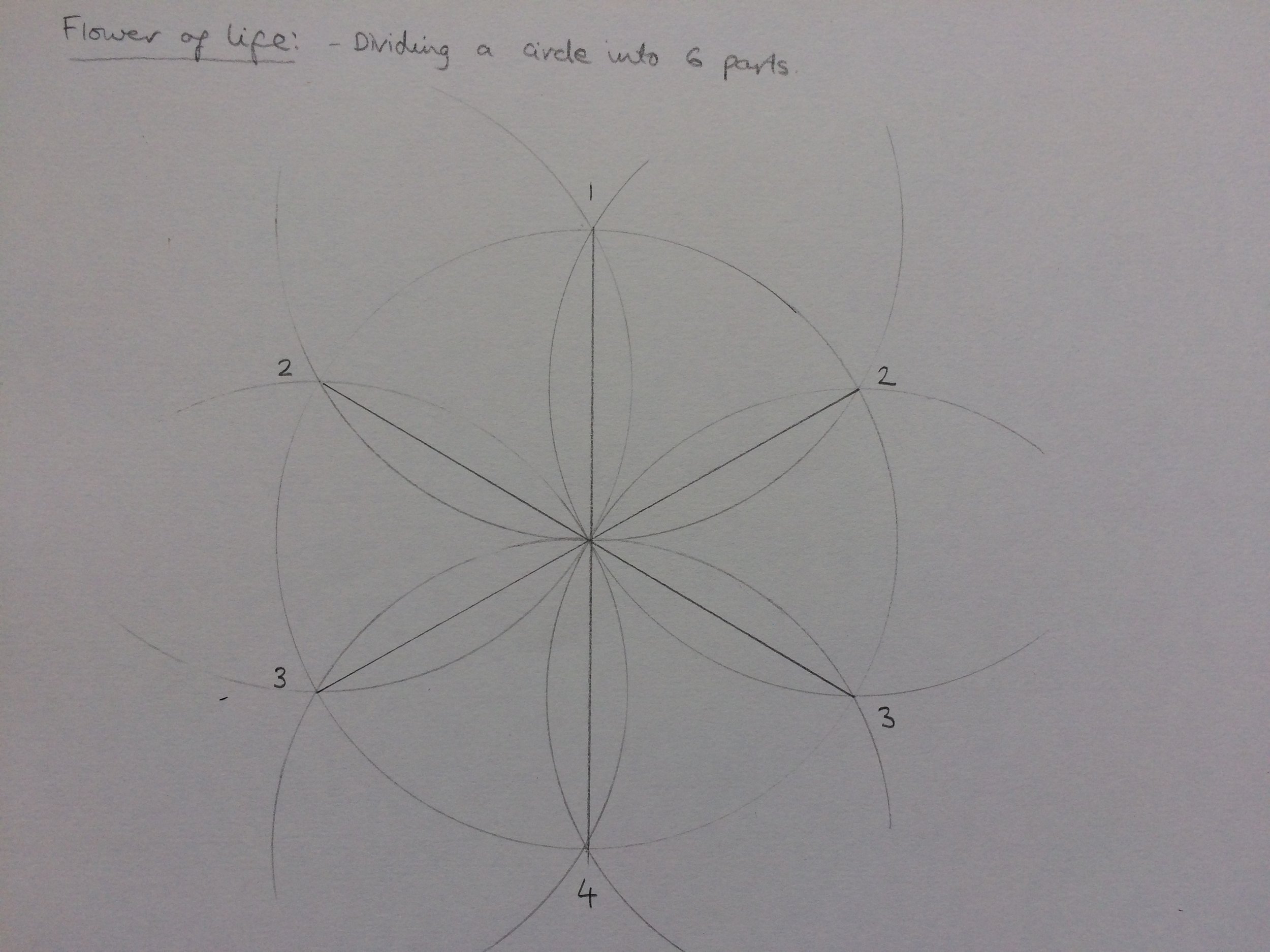
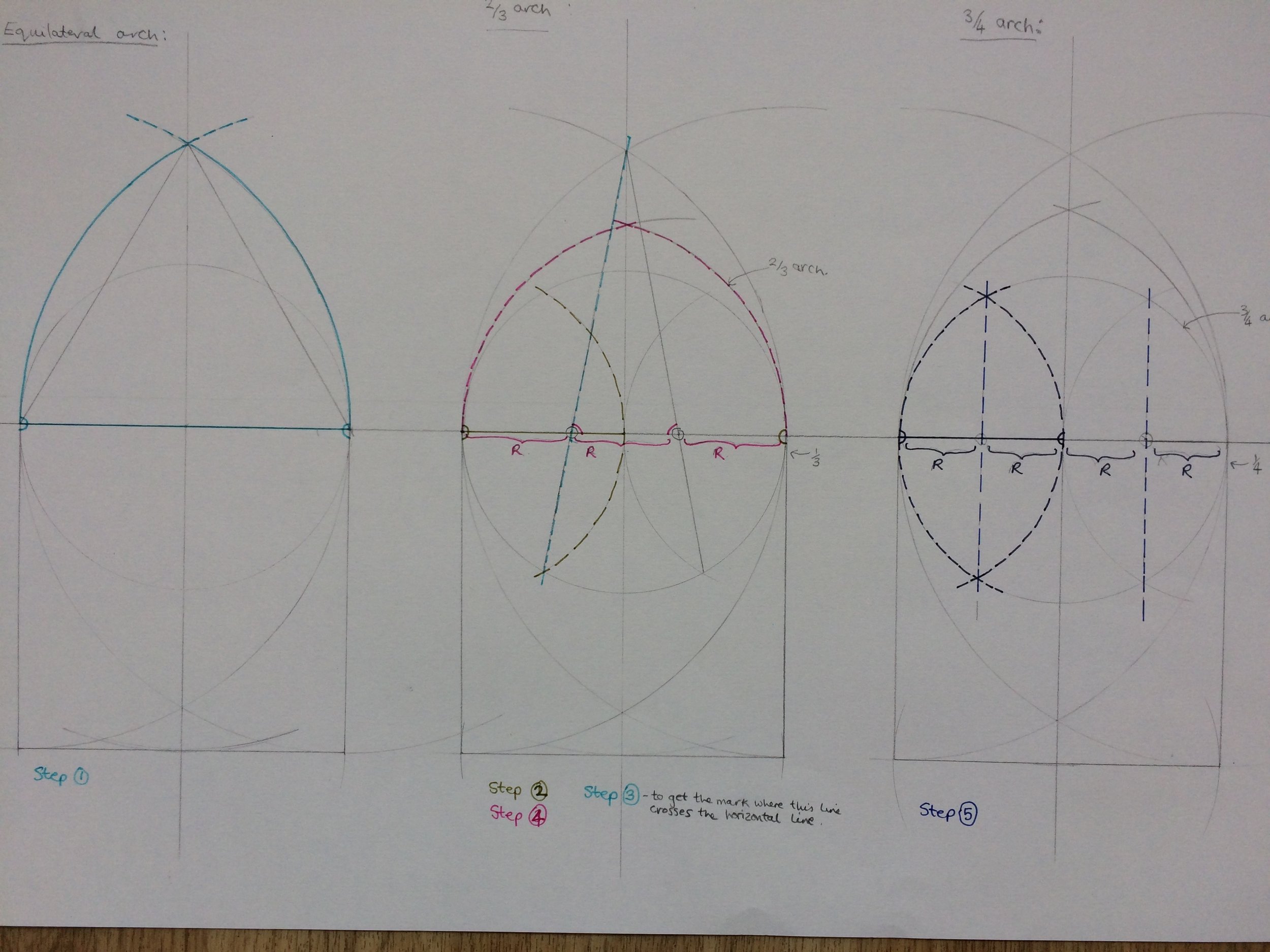
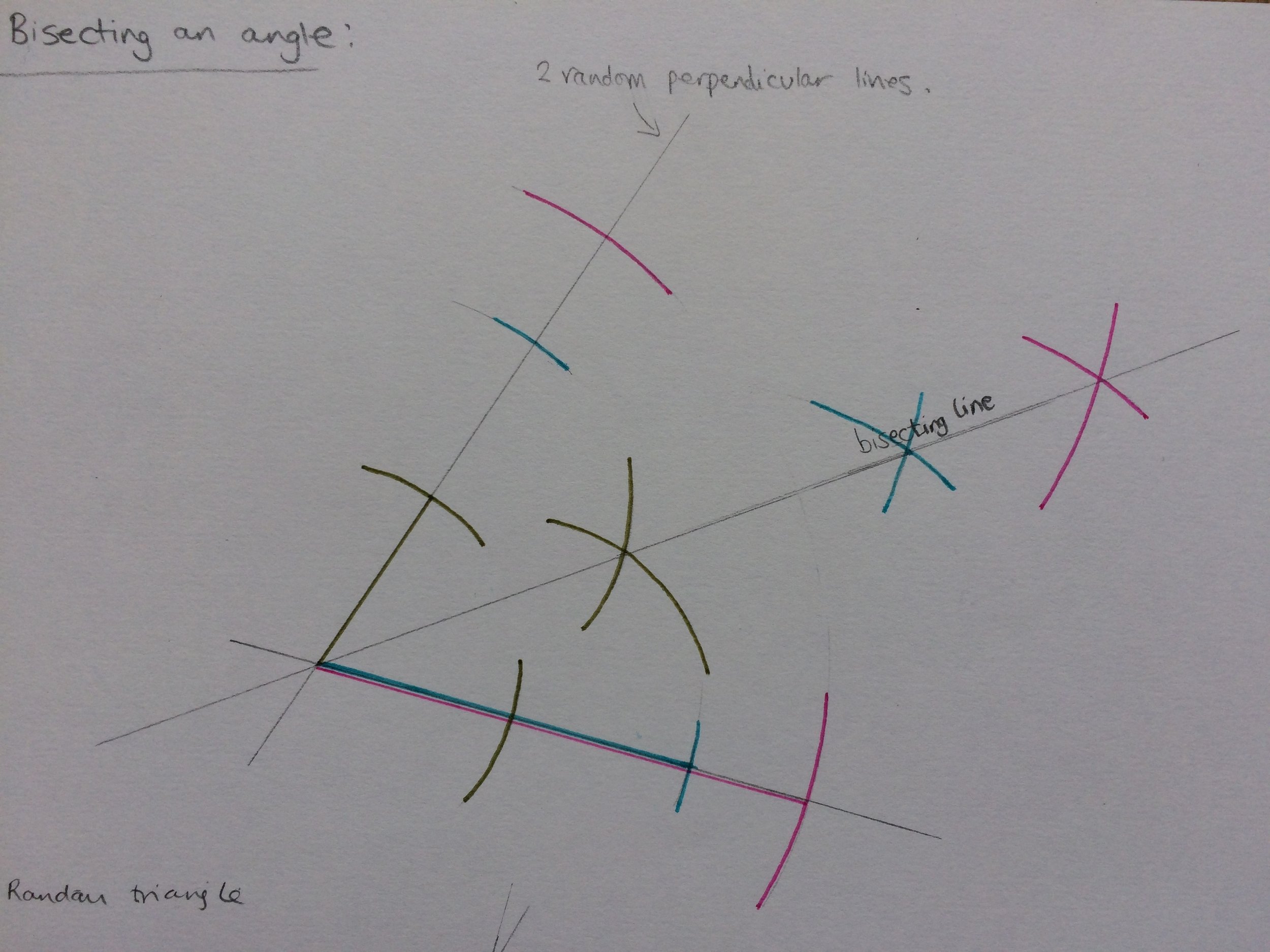


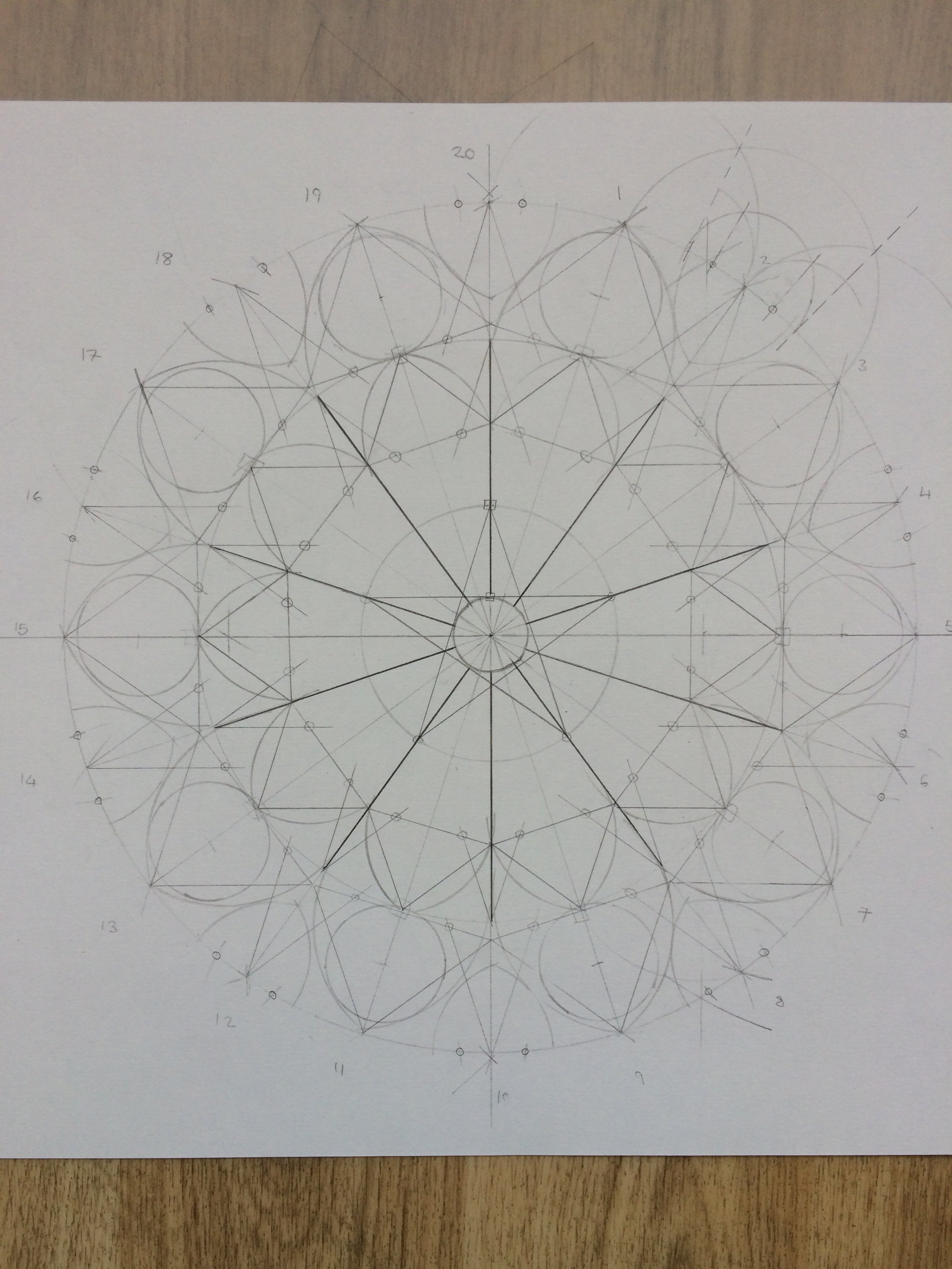
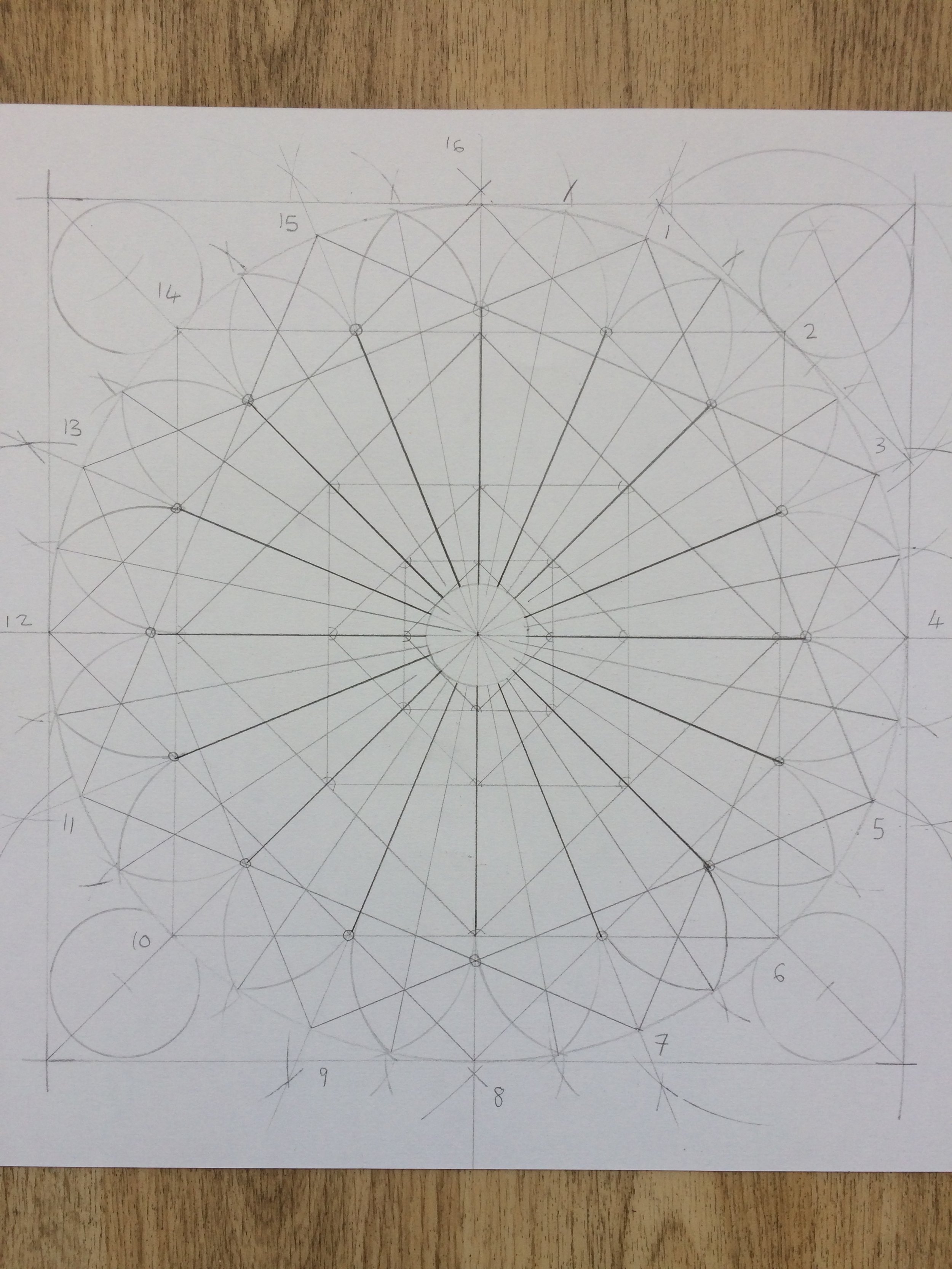
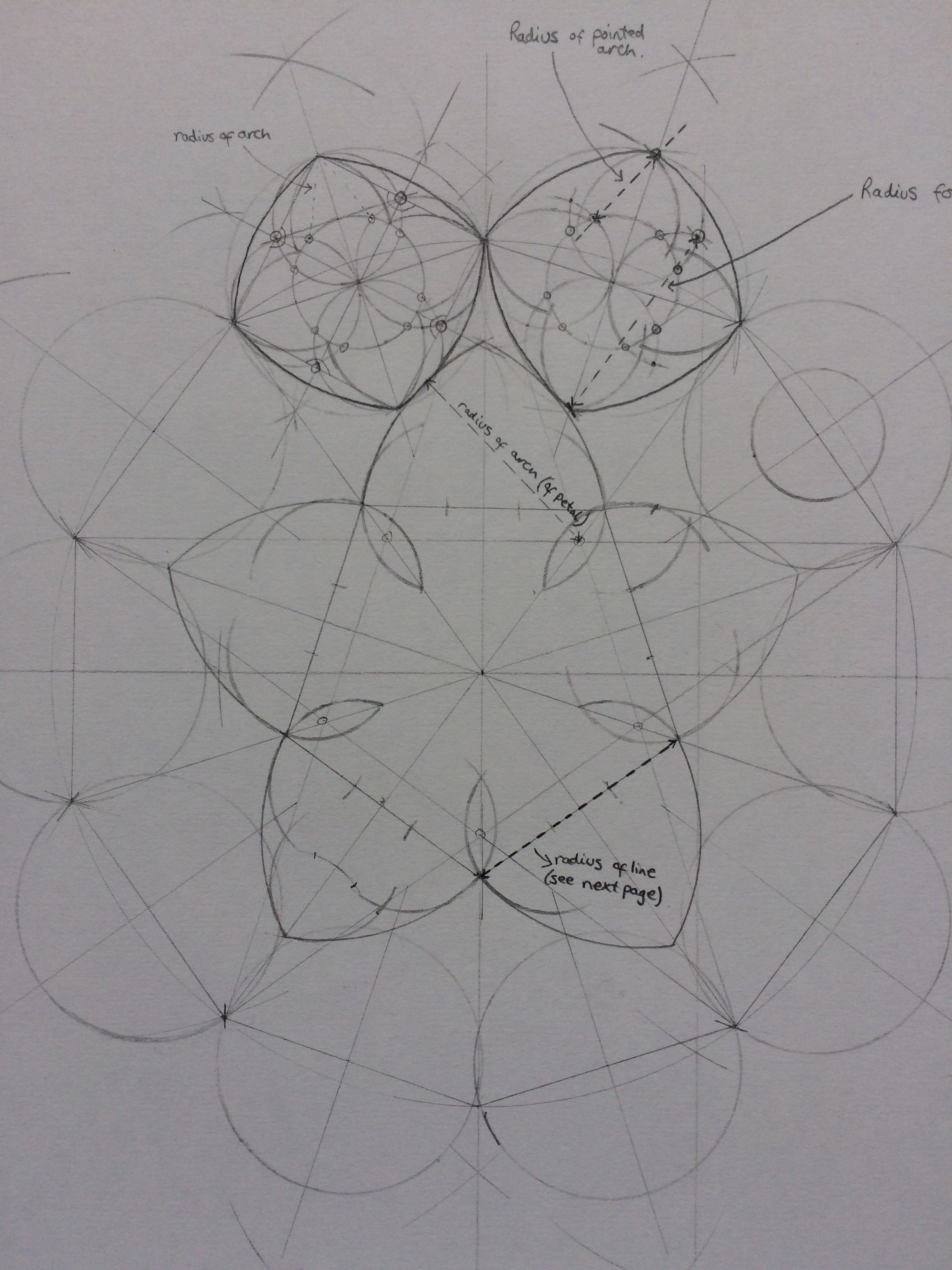
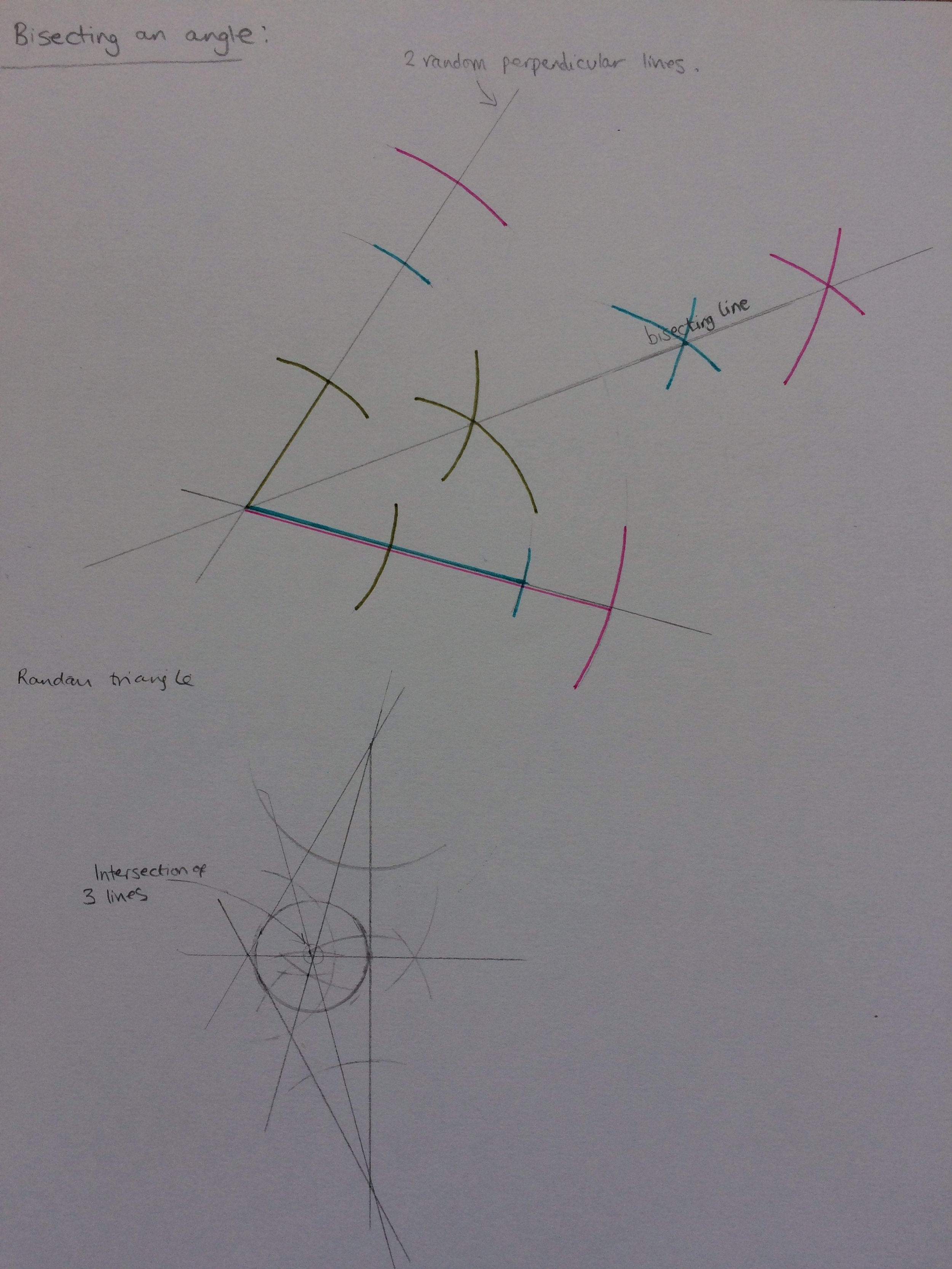


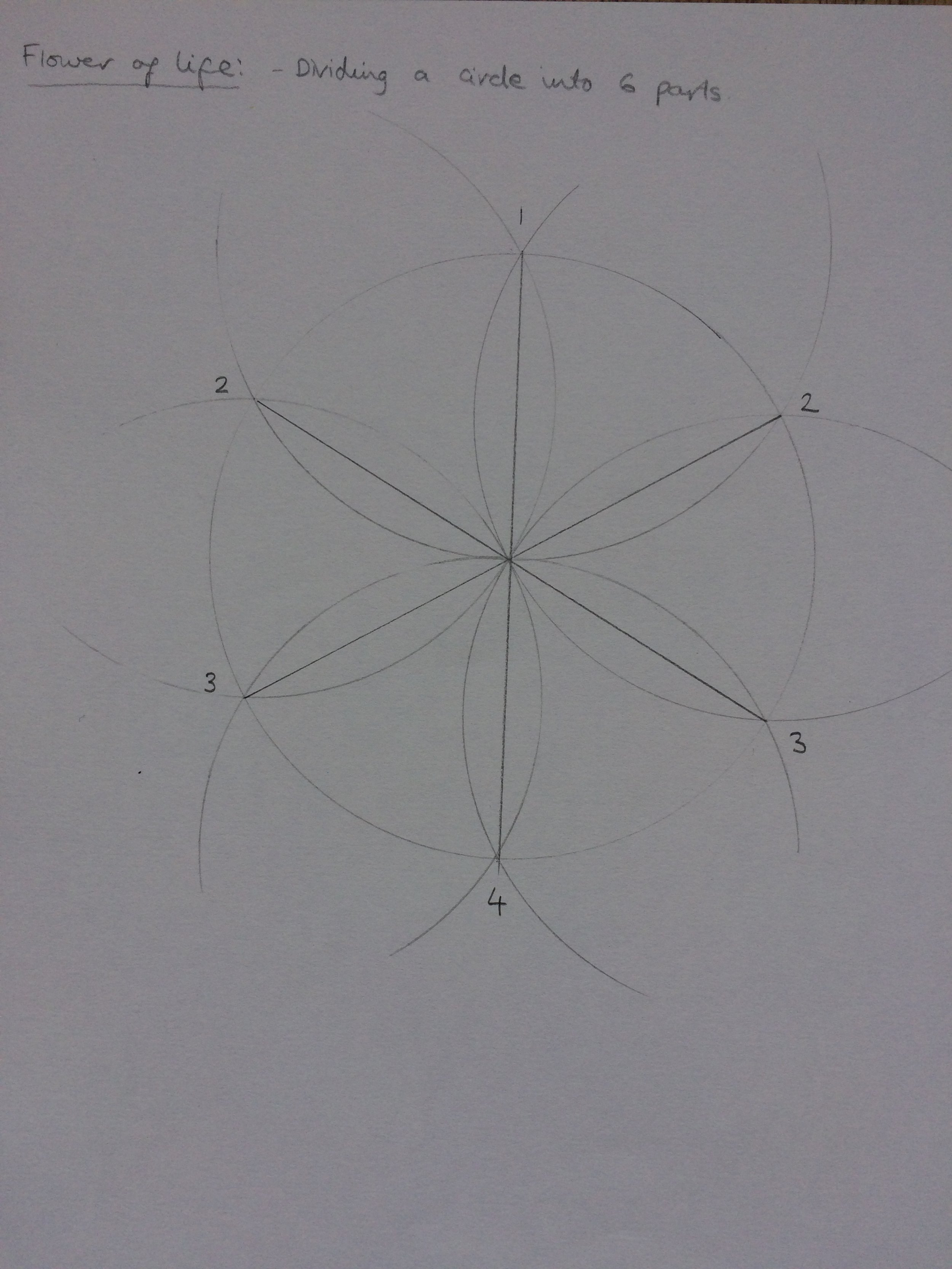
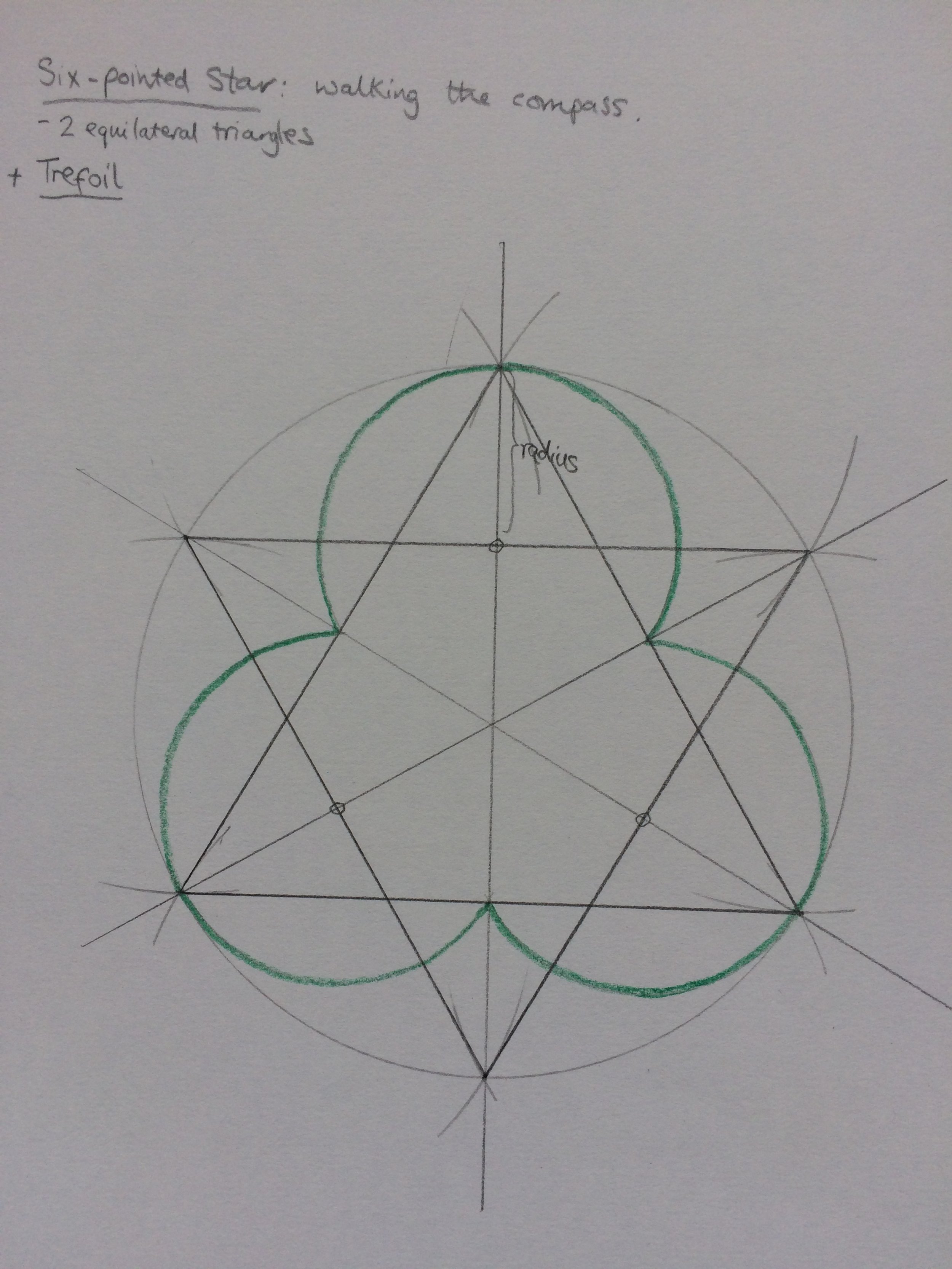

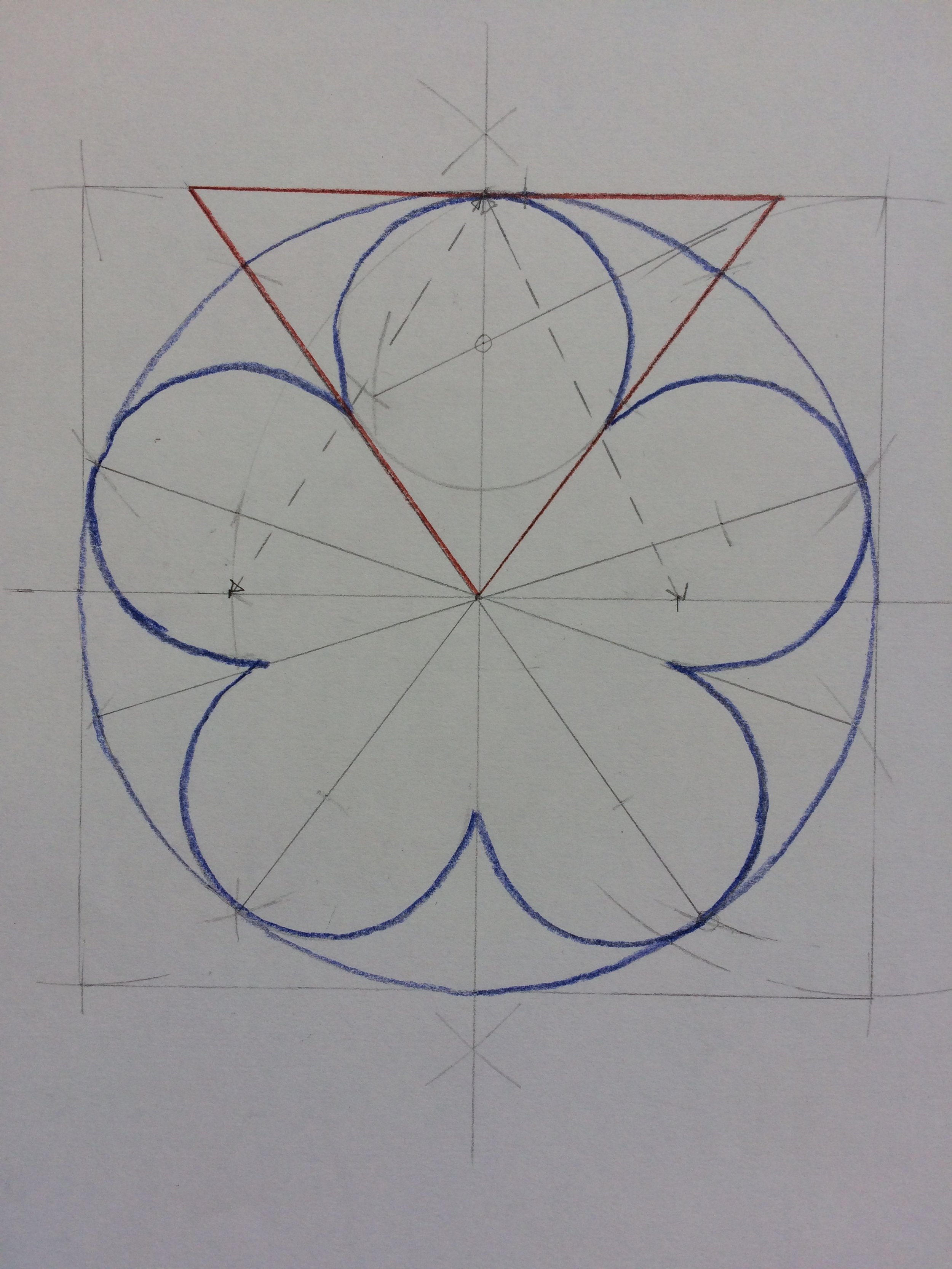
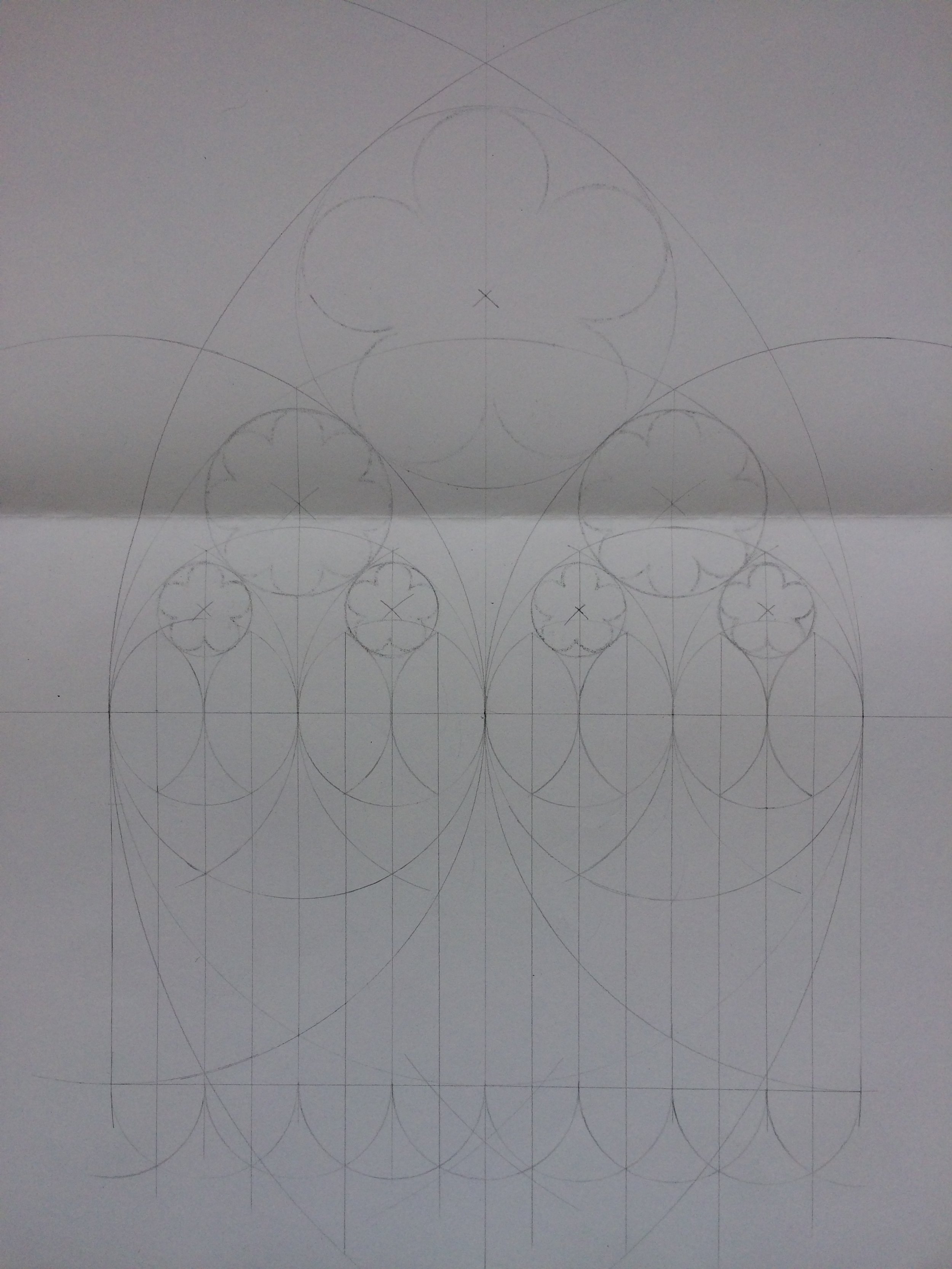

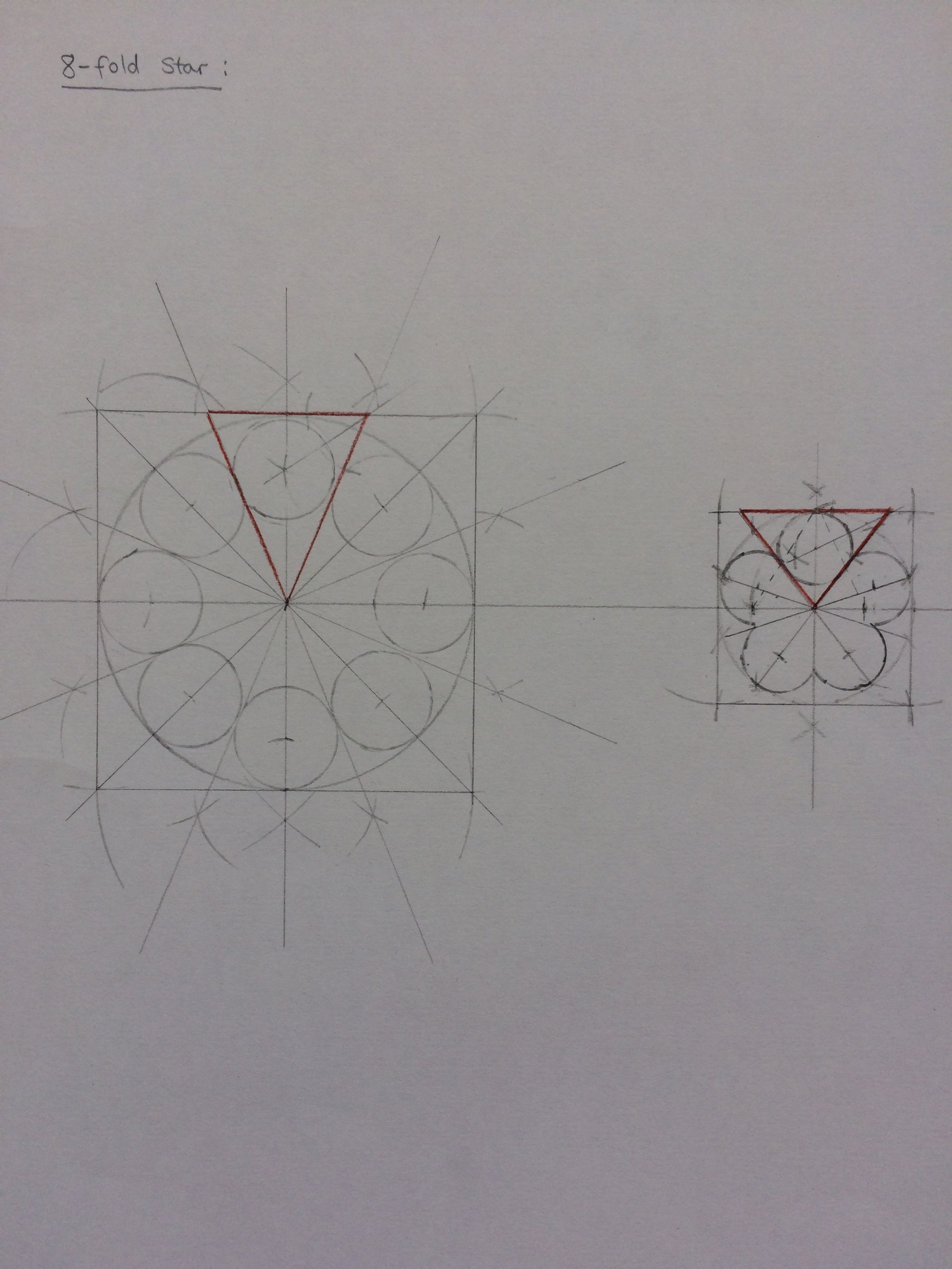
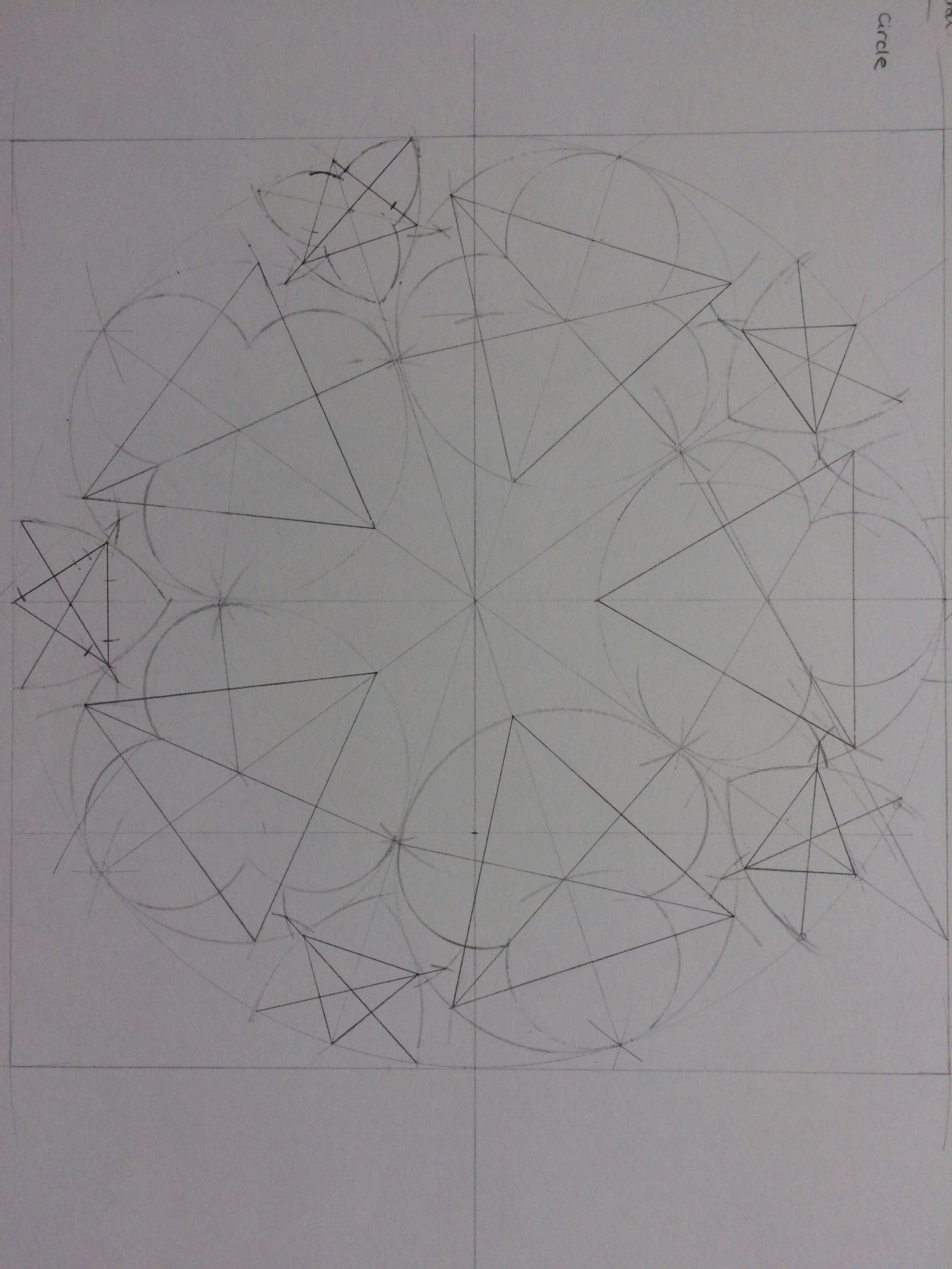

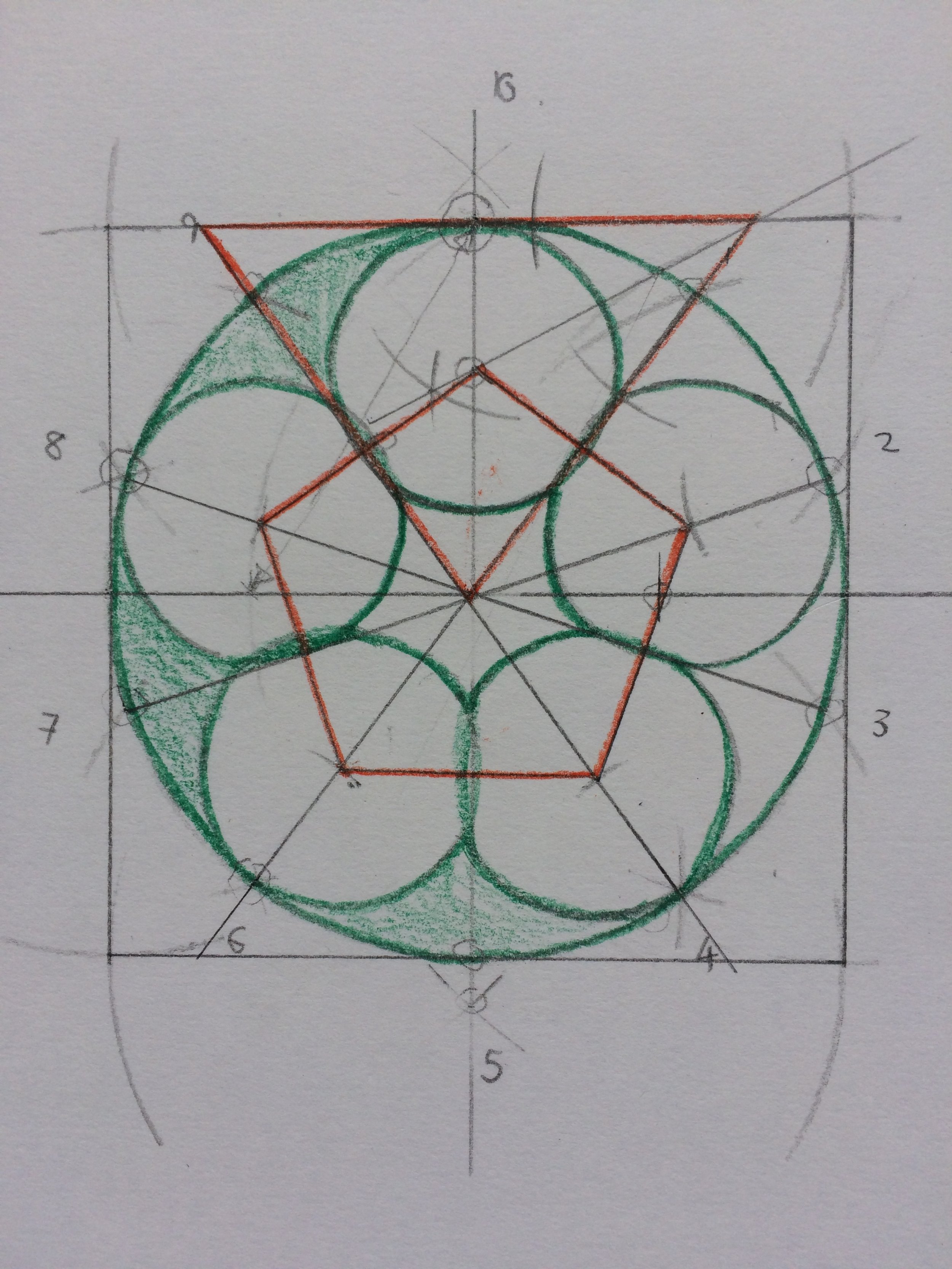
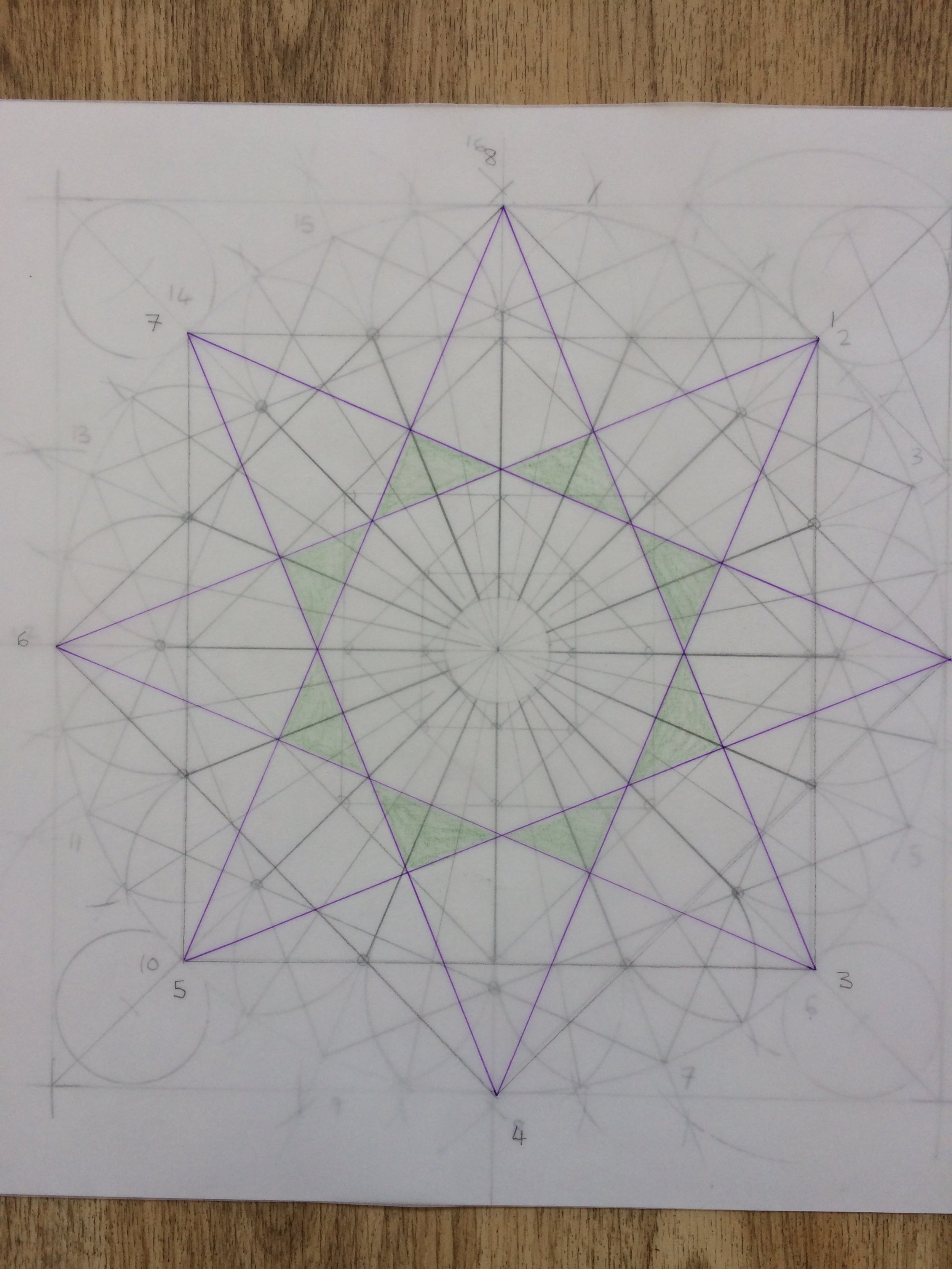
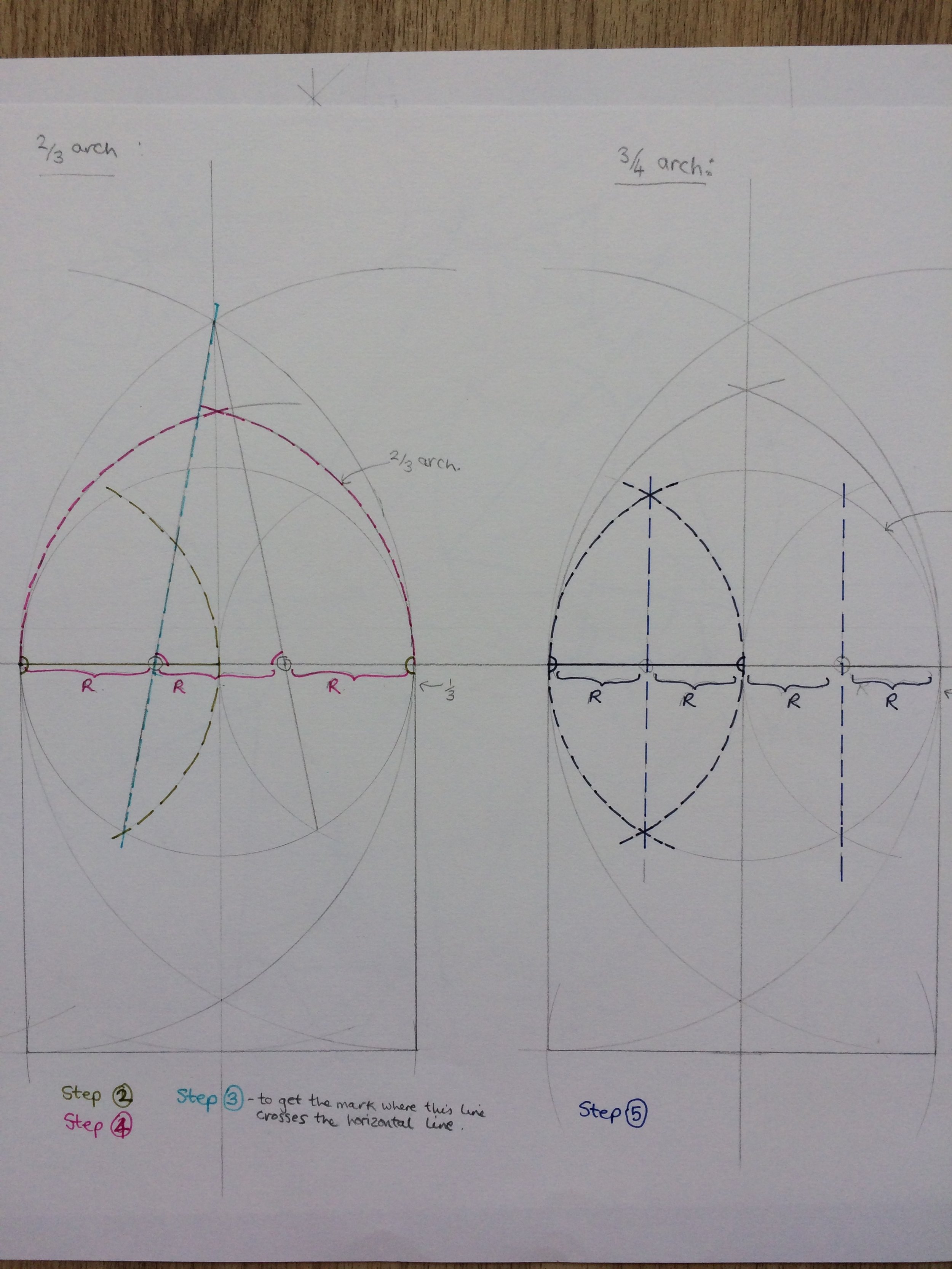
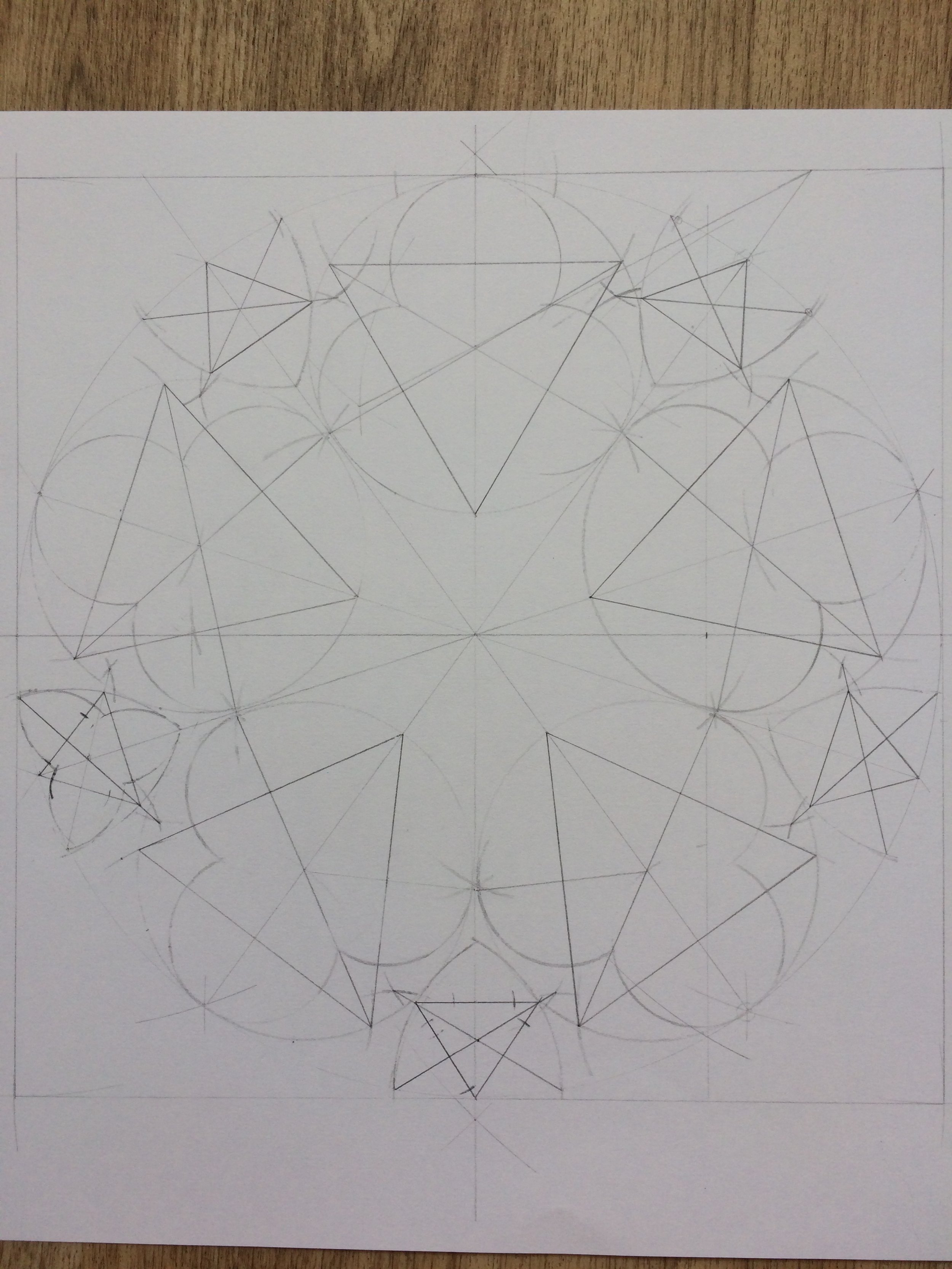
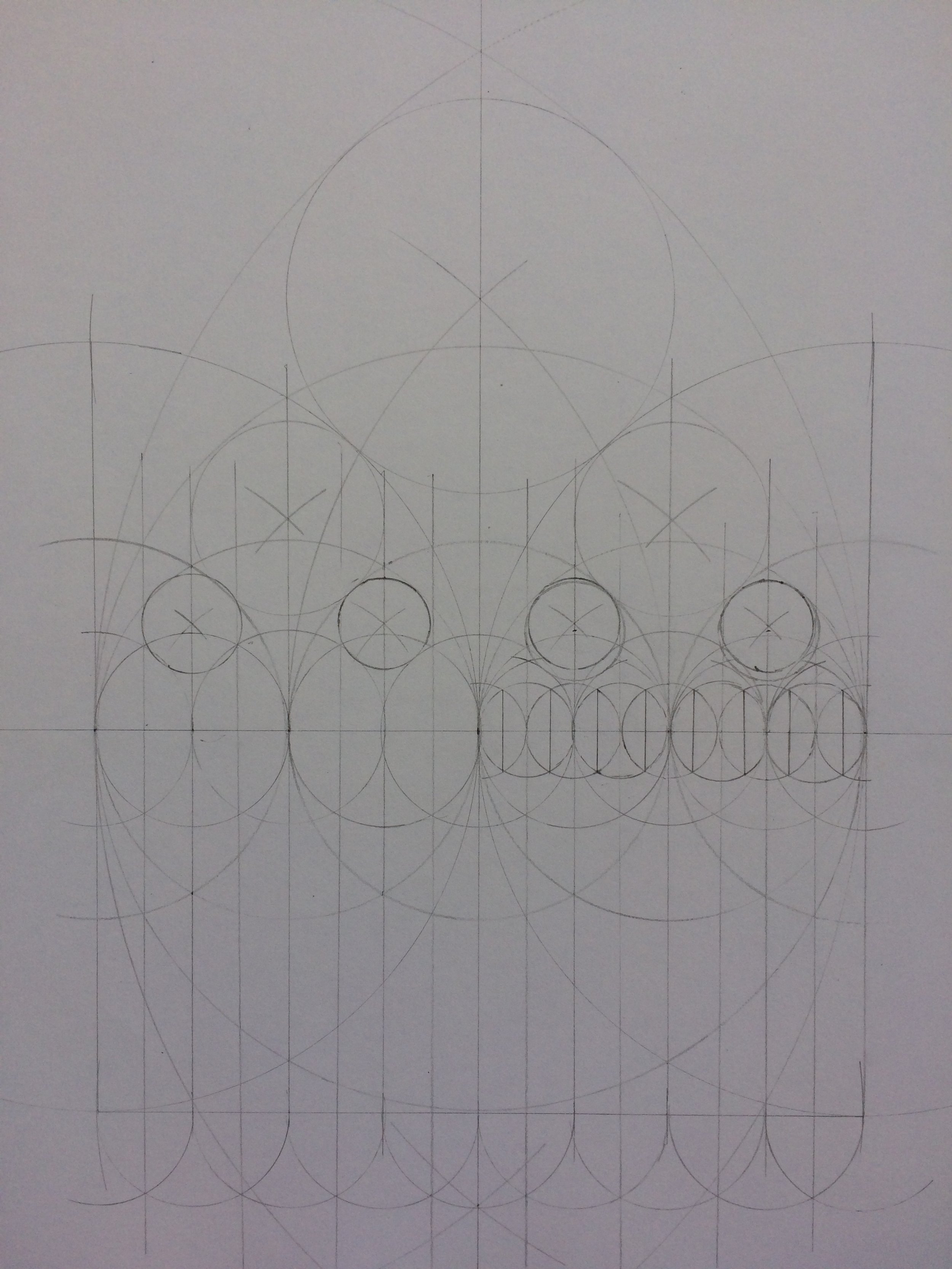

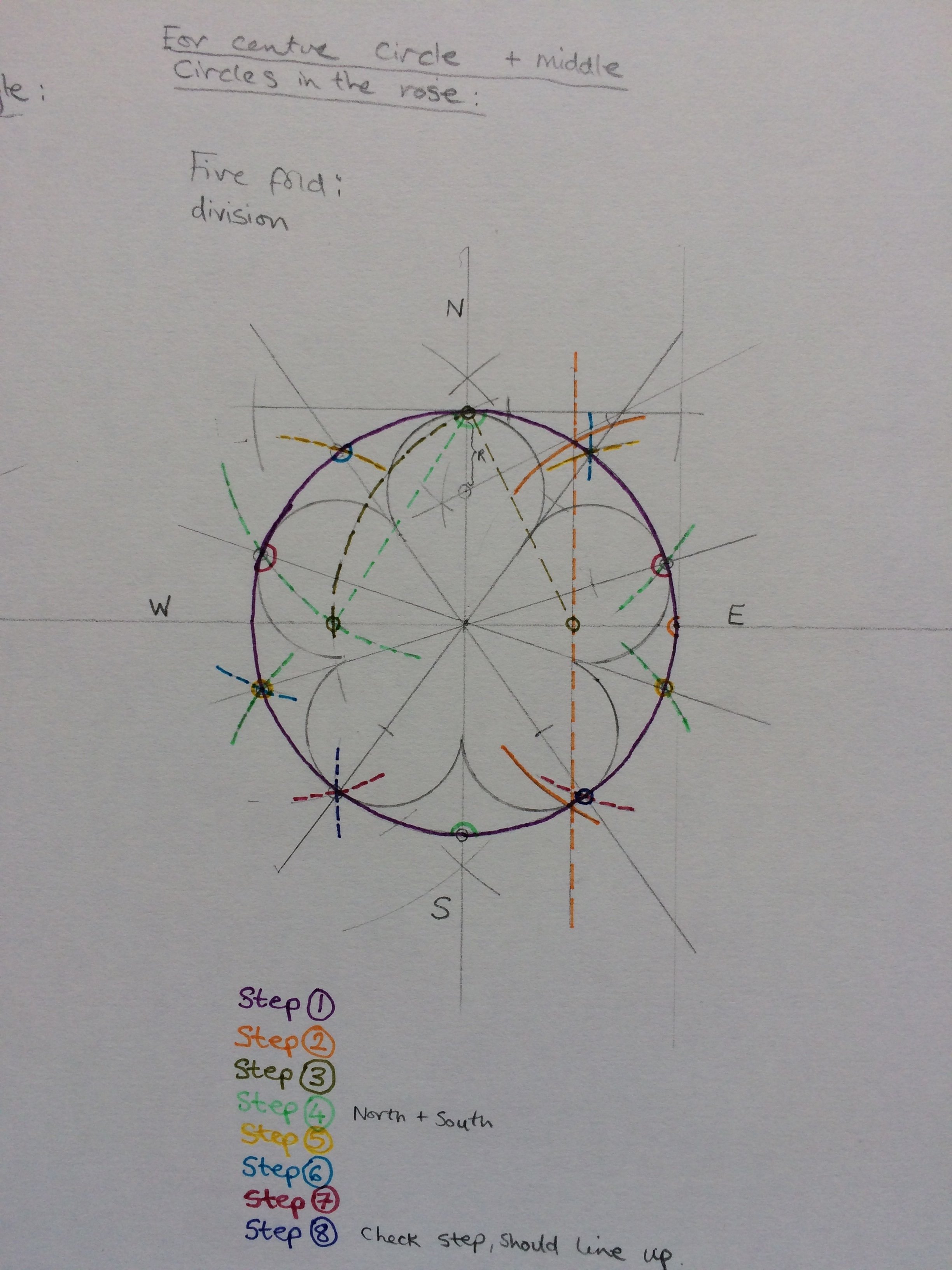
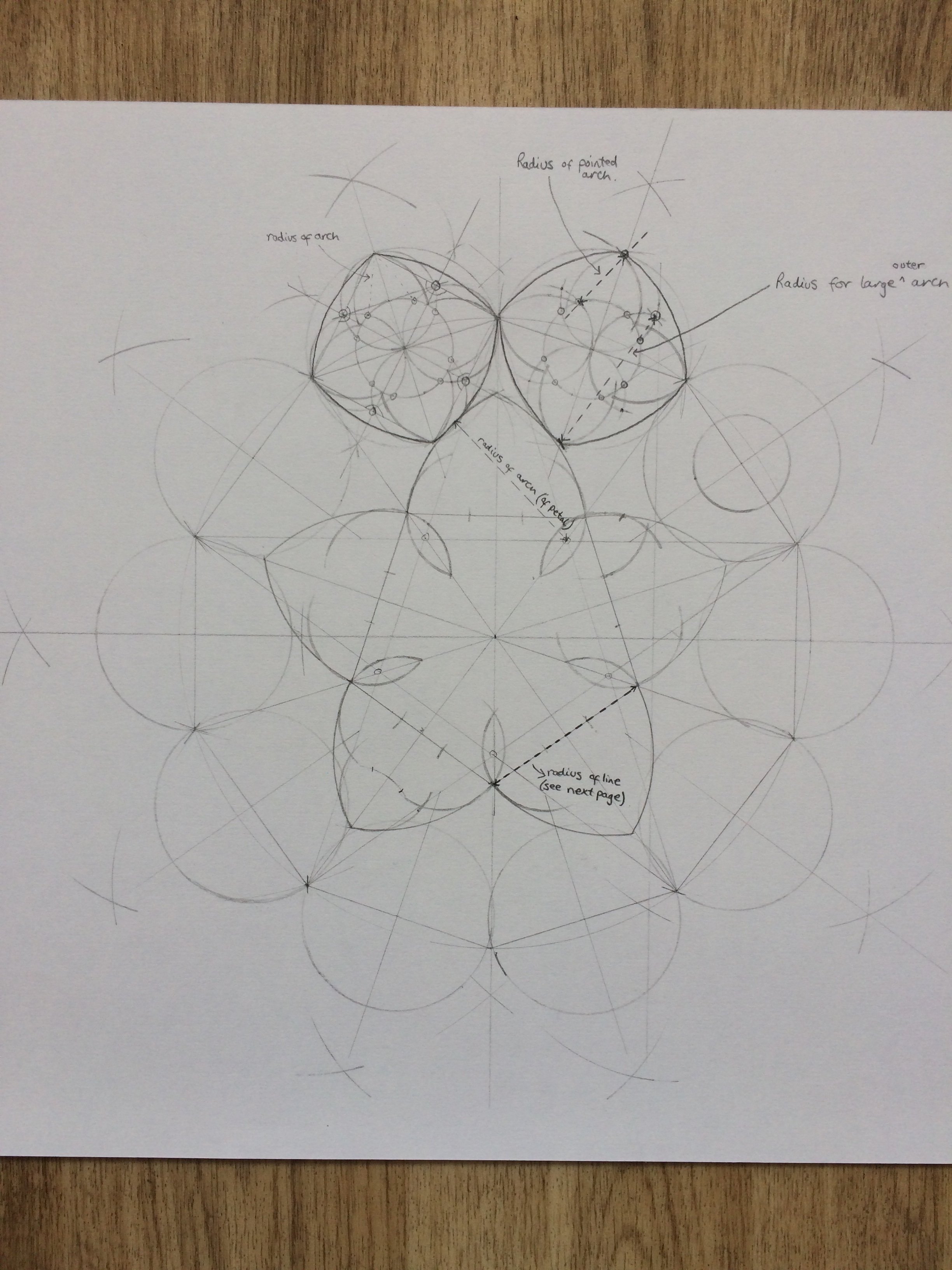
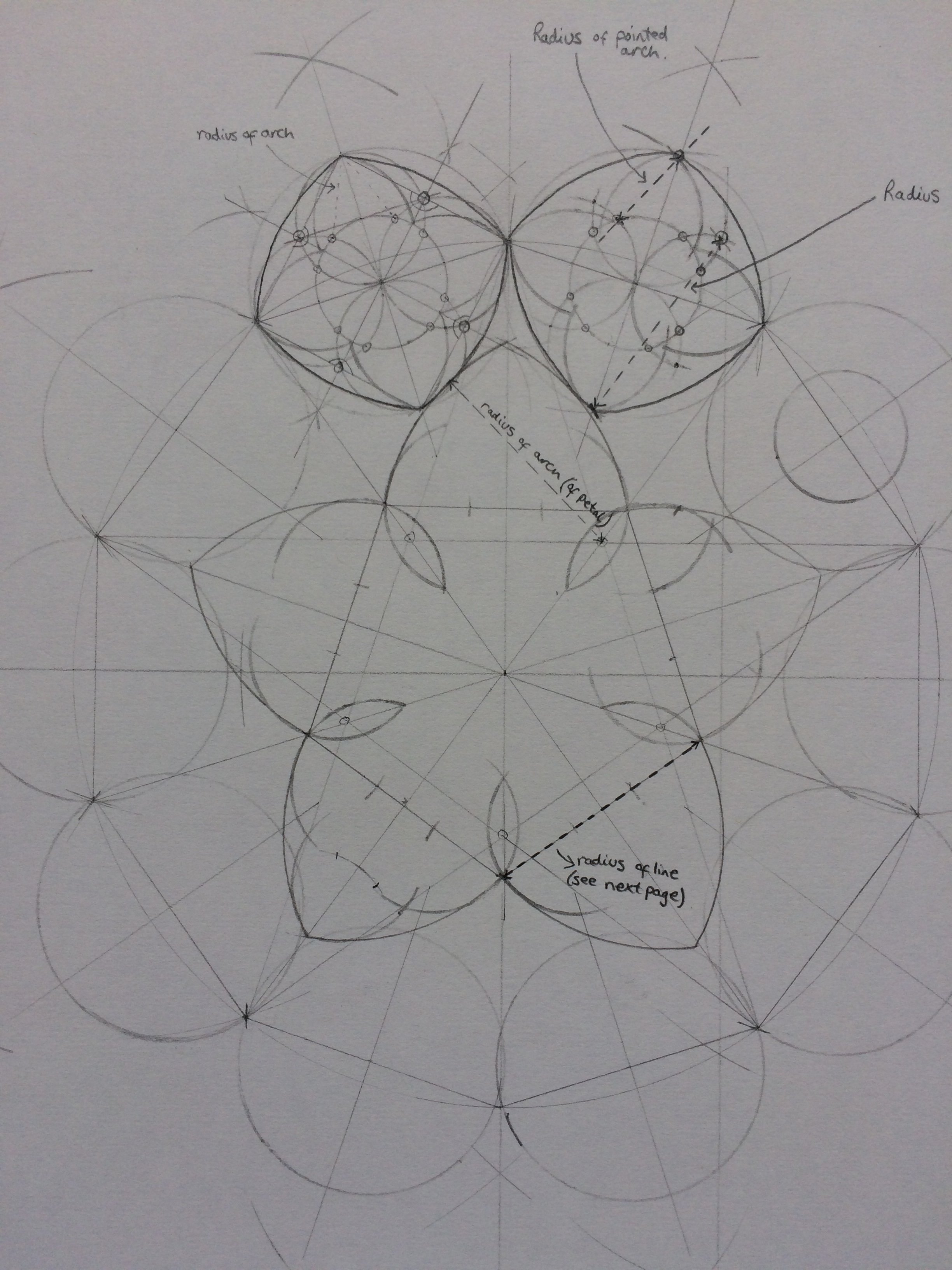
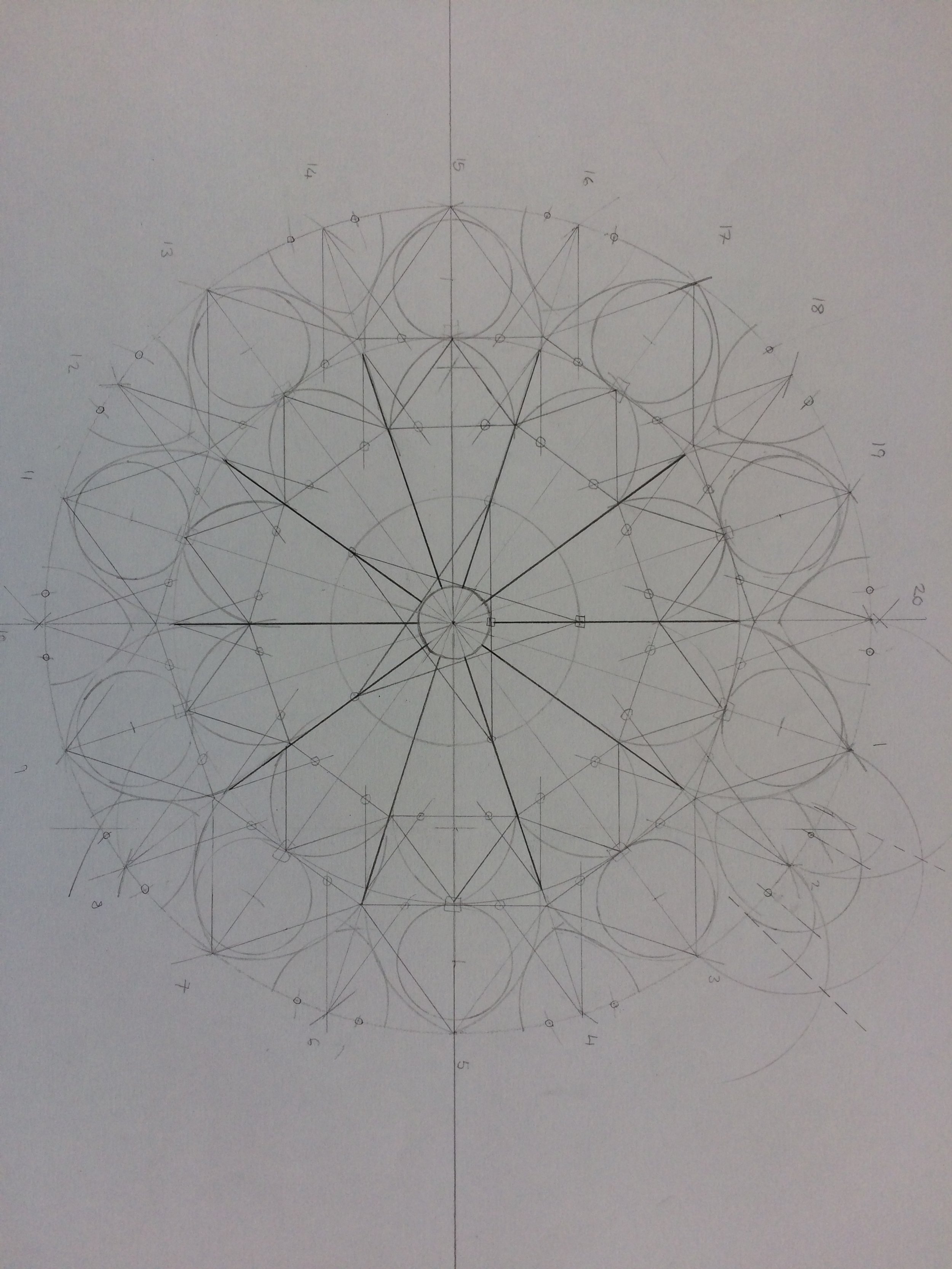
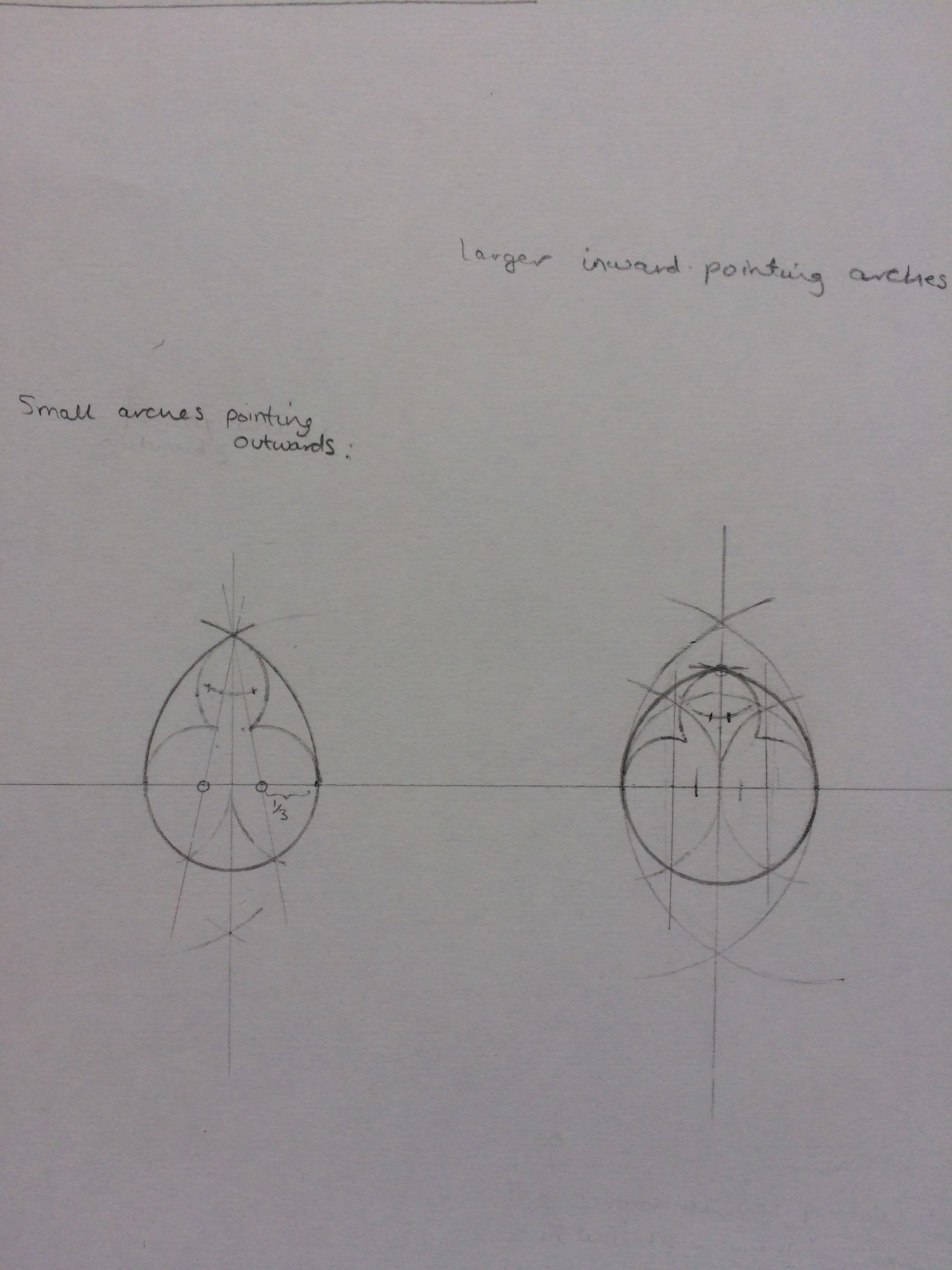
Baptism gown for all the family
A friend shared with me a vintage baptismal gown that has been passed down in her family for several generations.
Even though she is from Argentina, her family came from Spain, so the gown is probably Spanish.
The gown is entirely hand-made and was probably made in the mid-to-late 1800s. It’s made from delicate cotton batiste and trimmed with rows of dainty lace.
There is a mix of lace techniques used in this dress. There is bobbin lace trim on the sleeves and collar. There is a needle lace floral motif on the frontal area. Other techniques include French seaming, pin tucking, smocking and hem stitching. There are also lots of frills and ruffles.
Other features include a silk ribbon interwoven into some of the lace around the waistband. There is also a double bib at the front, embroidered with Broderie Anglaise and eyelets. There was probably a bonnet, booties and frill trimmed socks to go with the original as part of a set. It could even have included a comb or brush.
There is a unique feature of a slit in the middle of the waist area for an arm to fit through for holding the baby.
I am told the gown was originally much longer than it is now. This can be seen from the black and white photo of the gown being worn on the day of a baptism.
I think this is a beautiful tradition and such a treasure for all the family to enjoy.

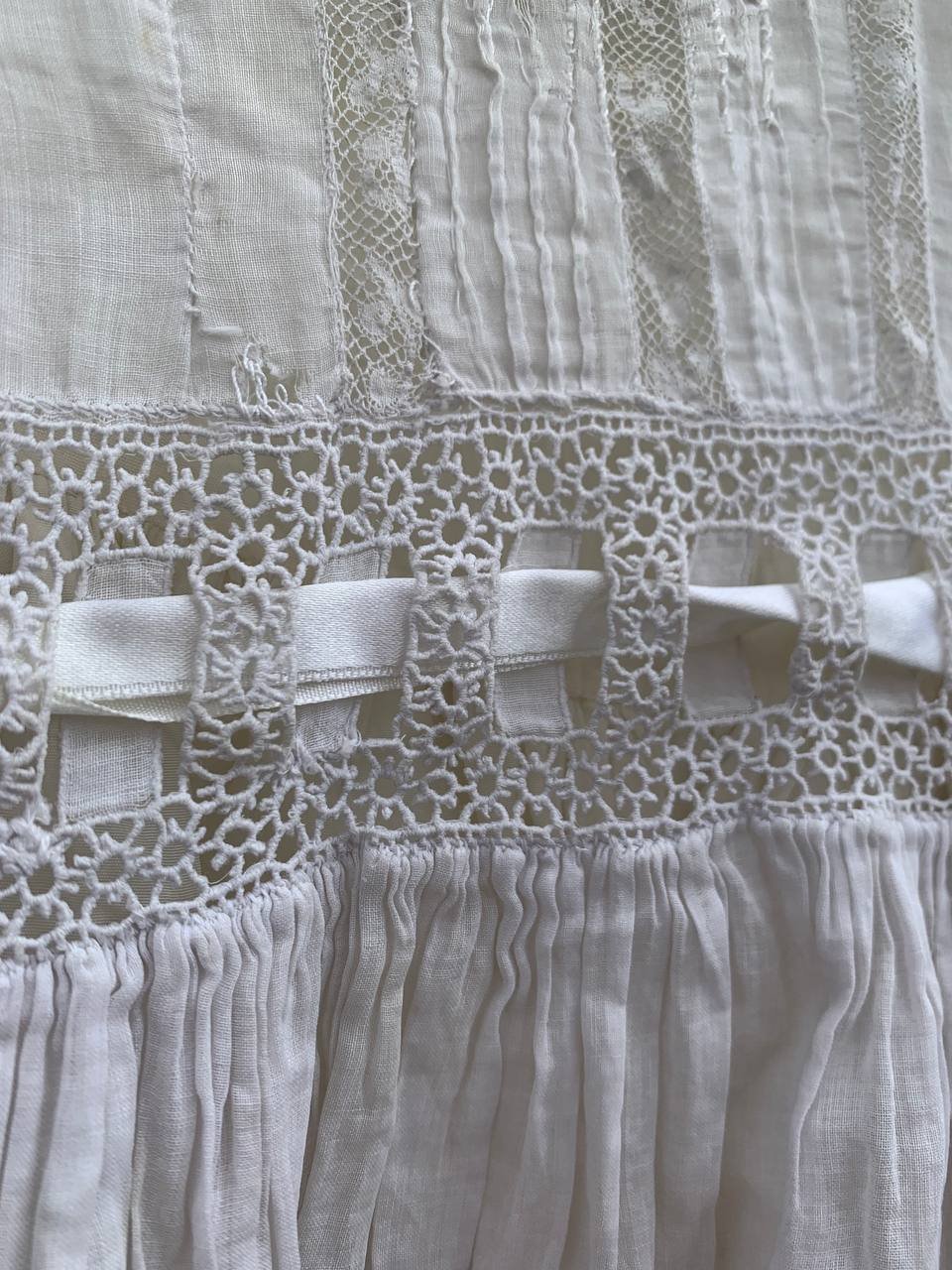
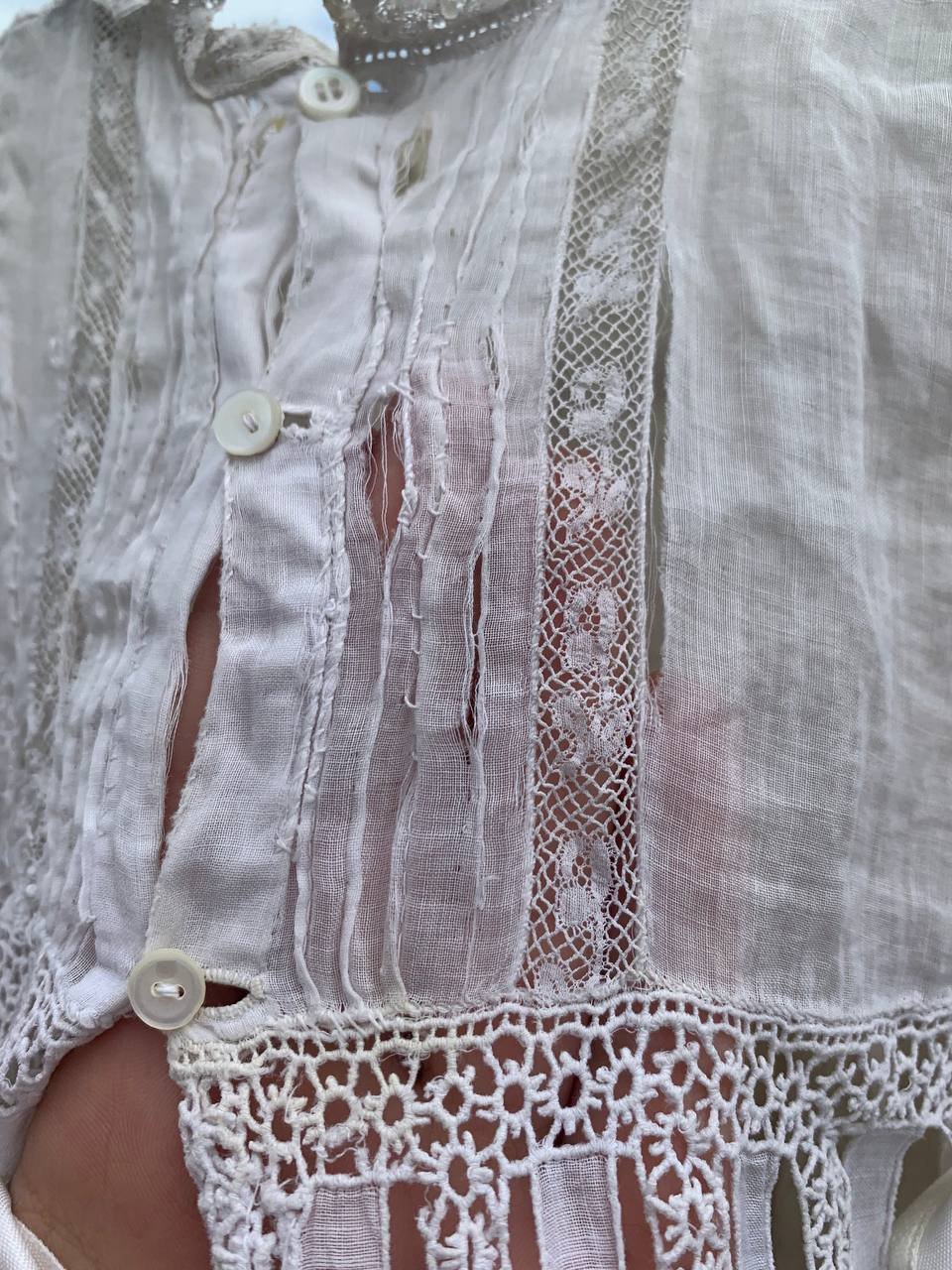


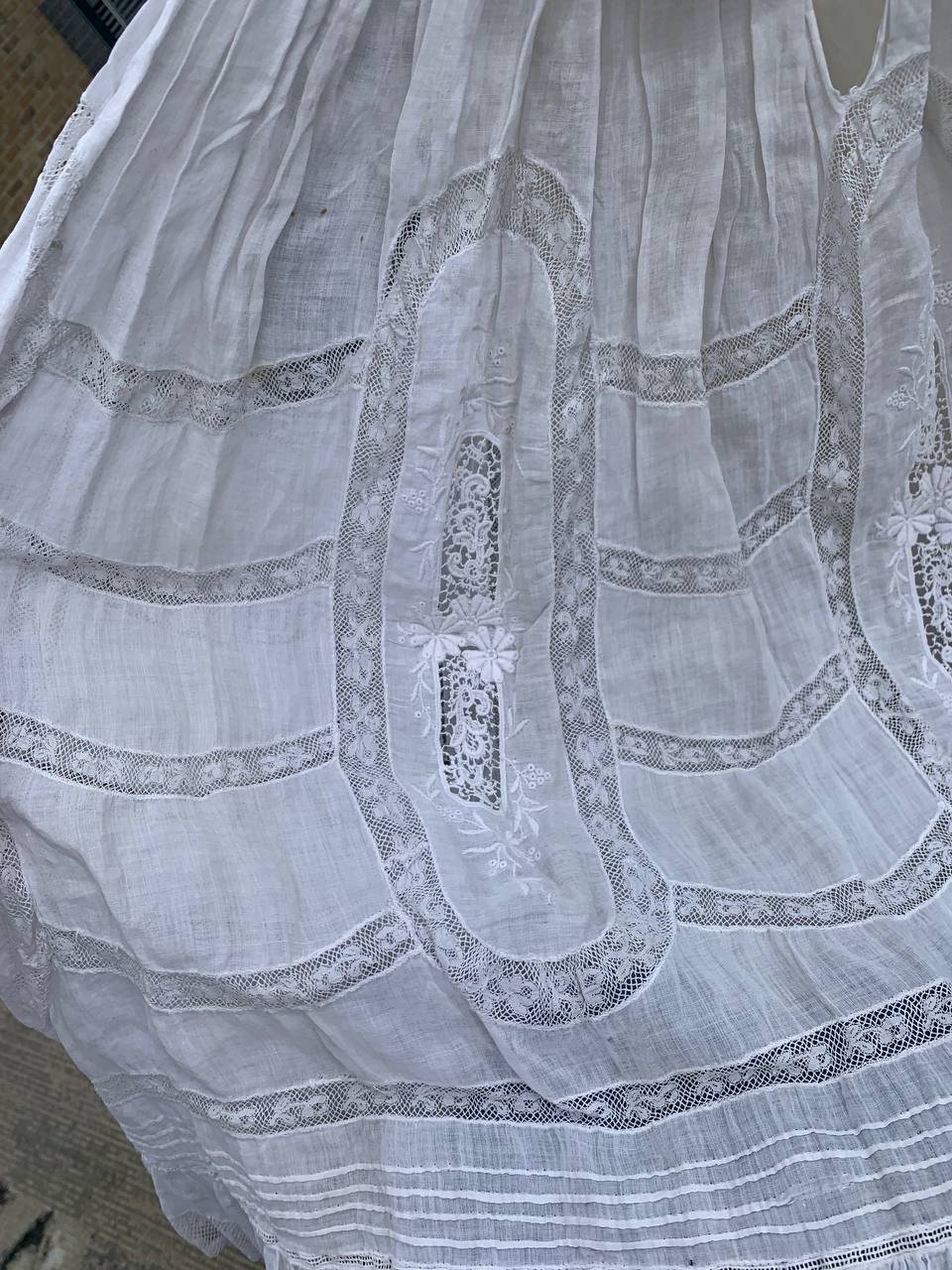



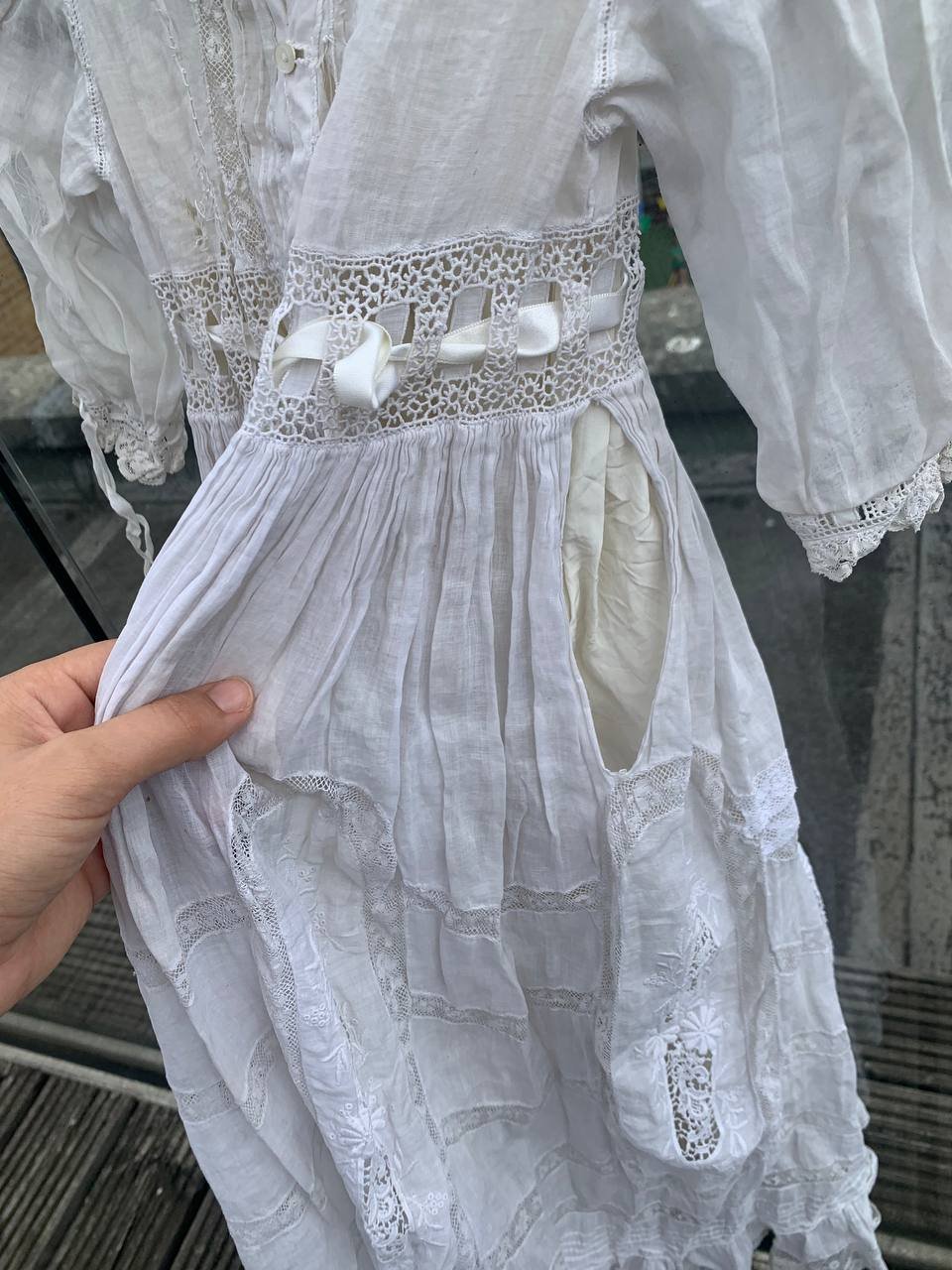
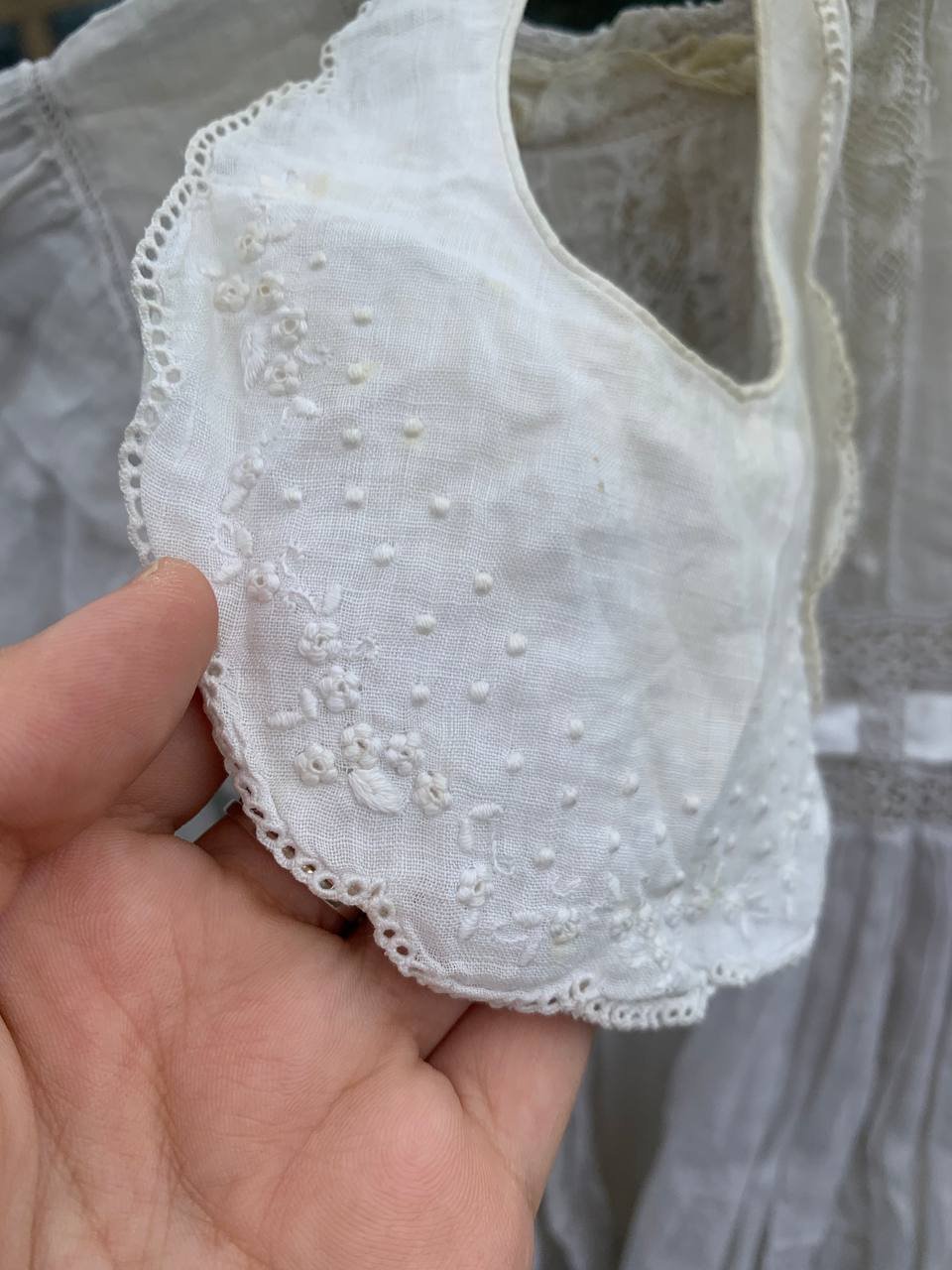

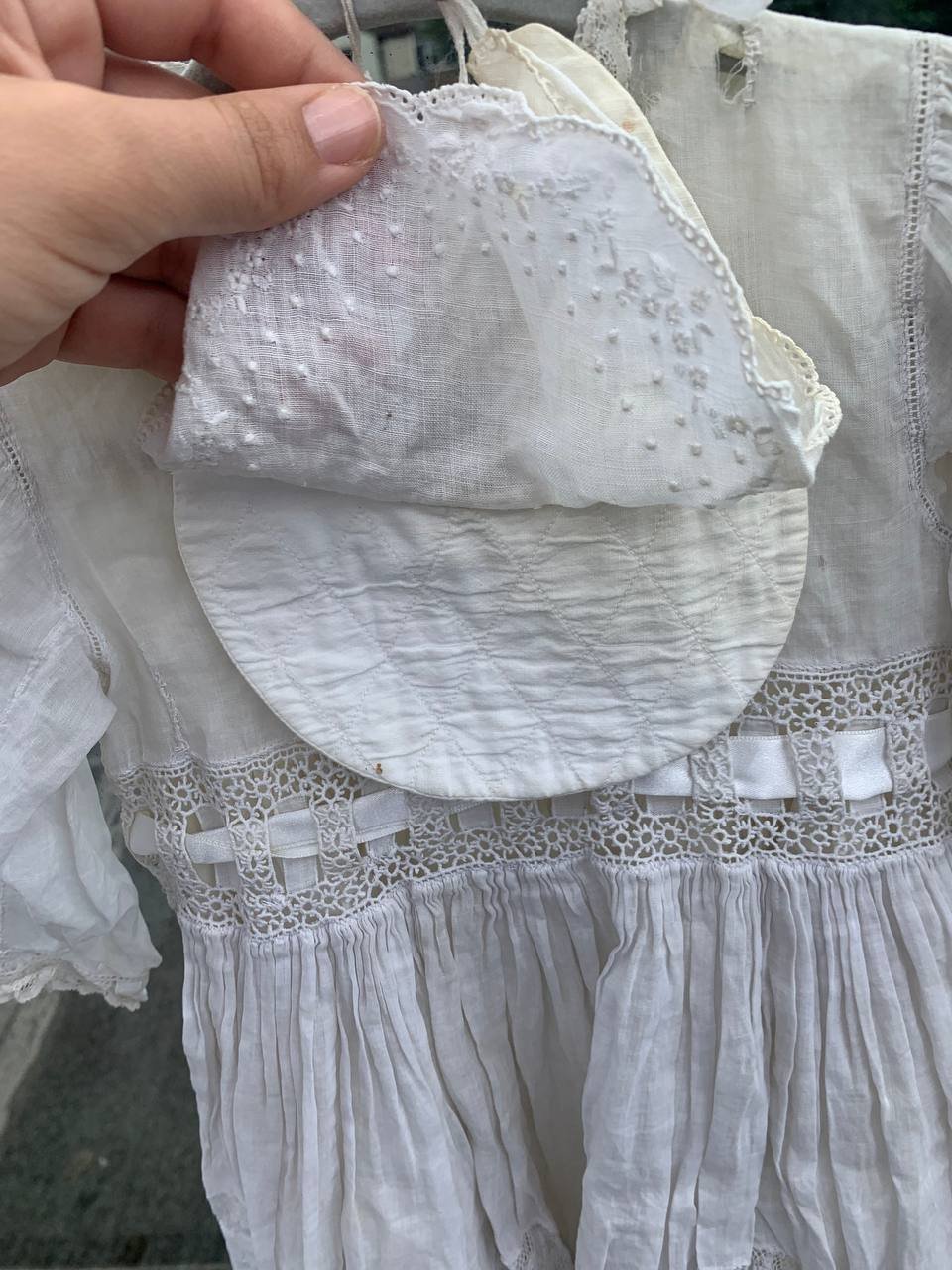
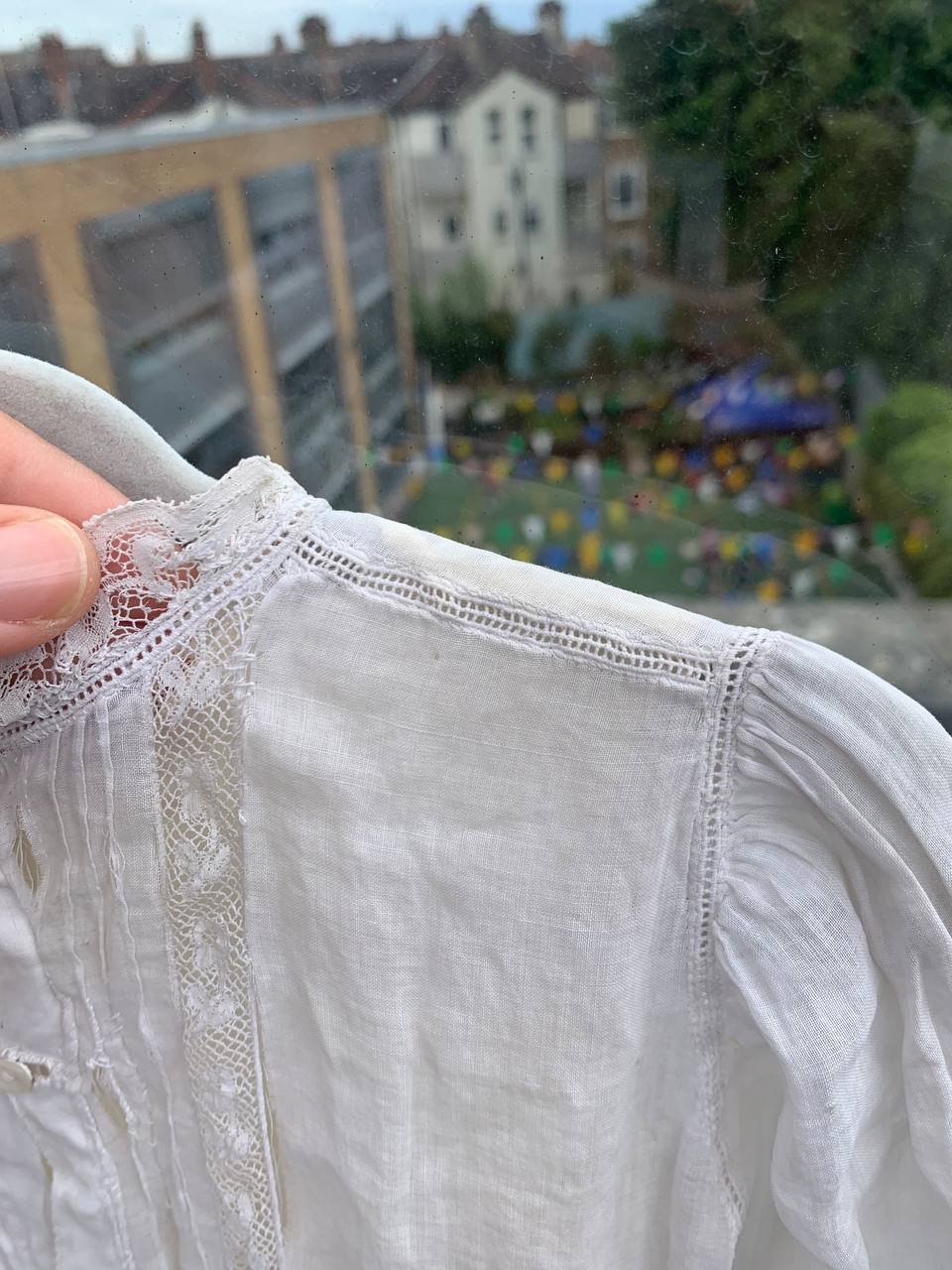

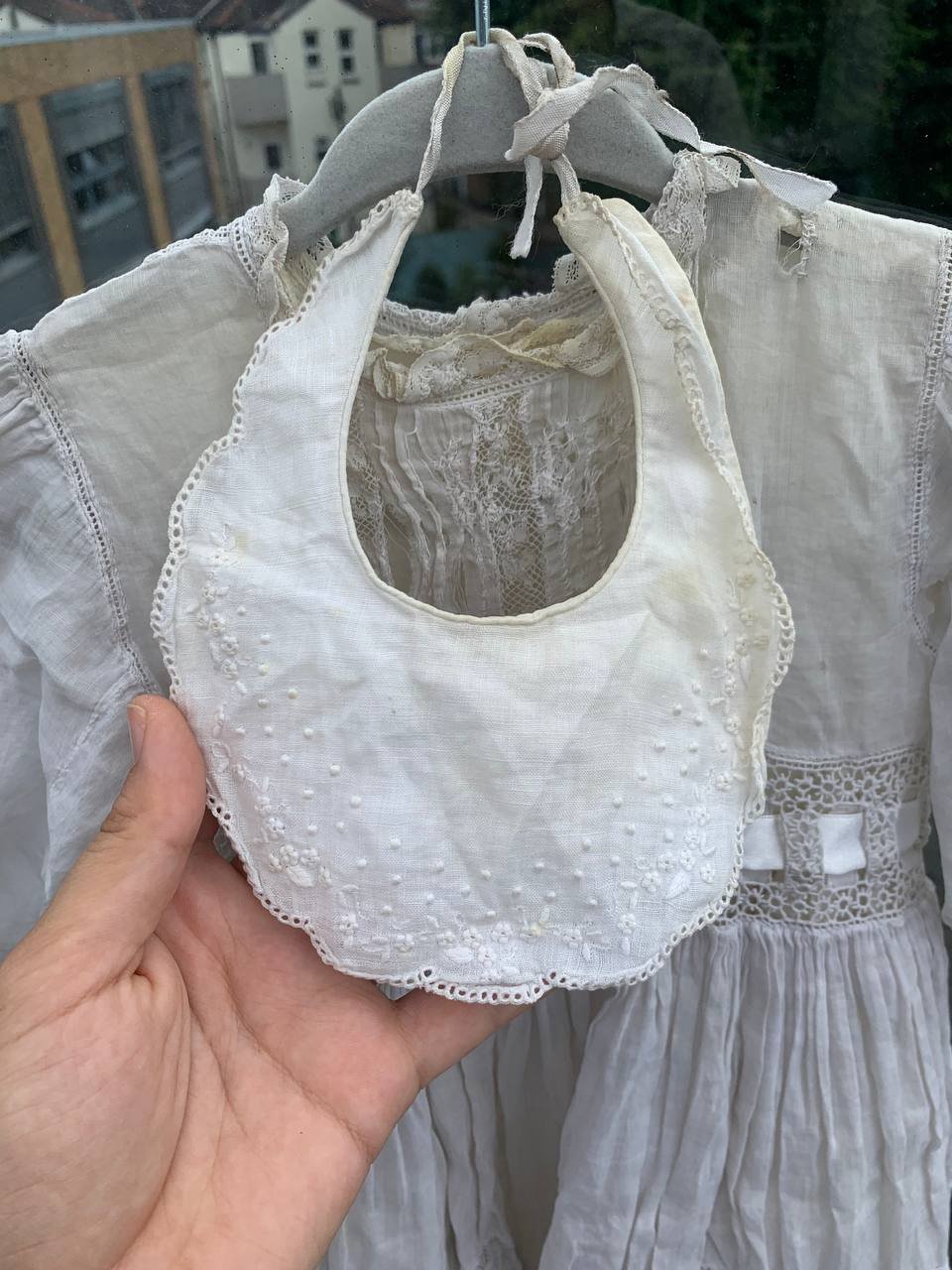

Natural Dyes
I have been experimenting using natural dyes from plants, trees, rocks and minerals. I used dyes from onions skins, avocado, marigold flowers, weld, aubergine skins, madder, Brazilwood, tumeric, safflower, walnut, cochineal and Persian berries.
For fibres I used a mix of cotton, silk and wool.
First I cleaned the fibres thoroughly to remove any dirt. Different scouring processes were used depending on the material. For cotton and silk, I used soda as and for wool I used orvis.
Mordants are needed to fix the colour on to the fabric and they change depending on if it is a cellulous fibre such as cotton or silk, or a protein based fibre like wool. For cotton and silk I used an aluminium mordant. For the wools I used alum and cream of tartar for one batch and for another batch I used an iron mordant (ferrous sulphate).
I also experimented with adding extra soda ash to make the dye more alkaline to see how that varied the colour. I also tried adding vinegar to make it more acidic and seeing what affect that created.
Overall I am really impressed with the range of vibrant colours I was able to achieve using natural dyes. The process of doing this helped me to appreciate the craft element in making natural dyes. It almost felt like a ritual. Now when I walk in nature, I consider everything that is around me that can be used as a colourant from roots of trees, to bark, leaves, or flowers.
The Old Testament goes into great detail about the colours and materials that must be used to adorn the tabernacle. Now I have a greater appreciation of the process and craft practice that goes into producing these beautiful colours.
Finally, I dyed a couple of silks scarfs in cochineal and Brazilwood to be used as ladies head coverings during mass. I will give these as gifts to friends and family.

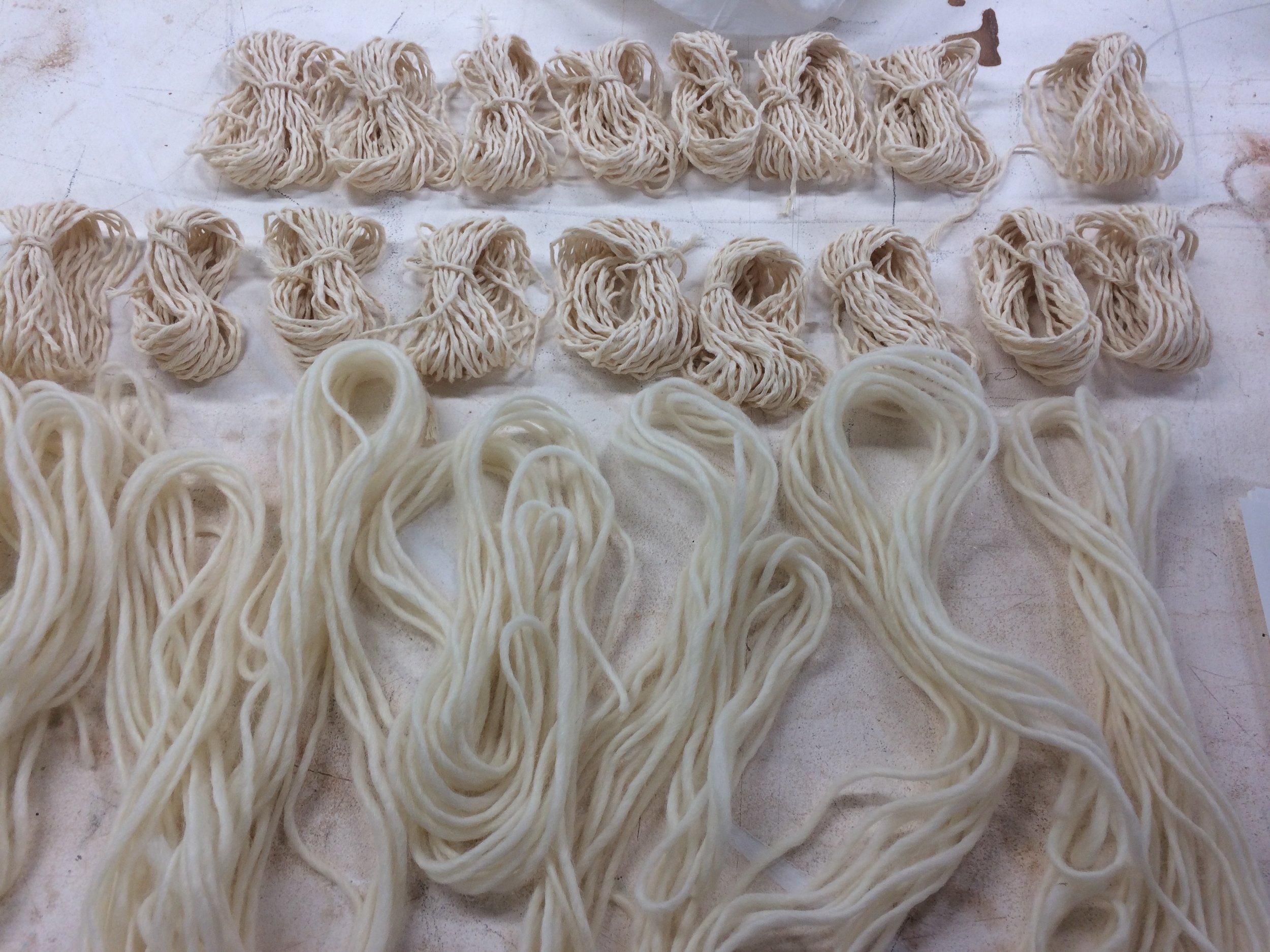
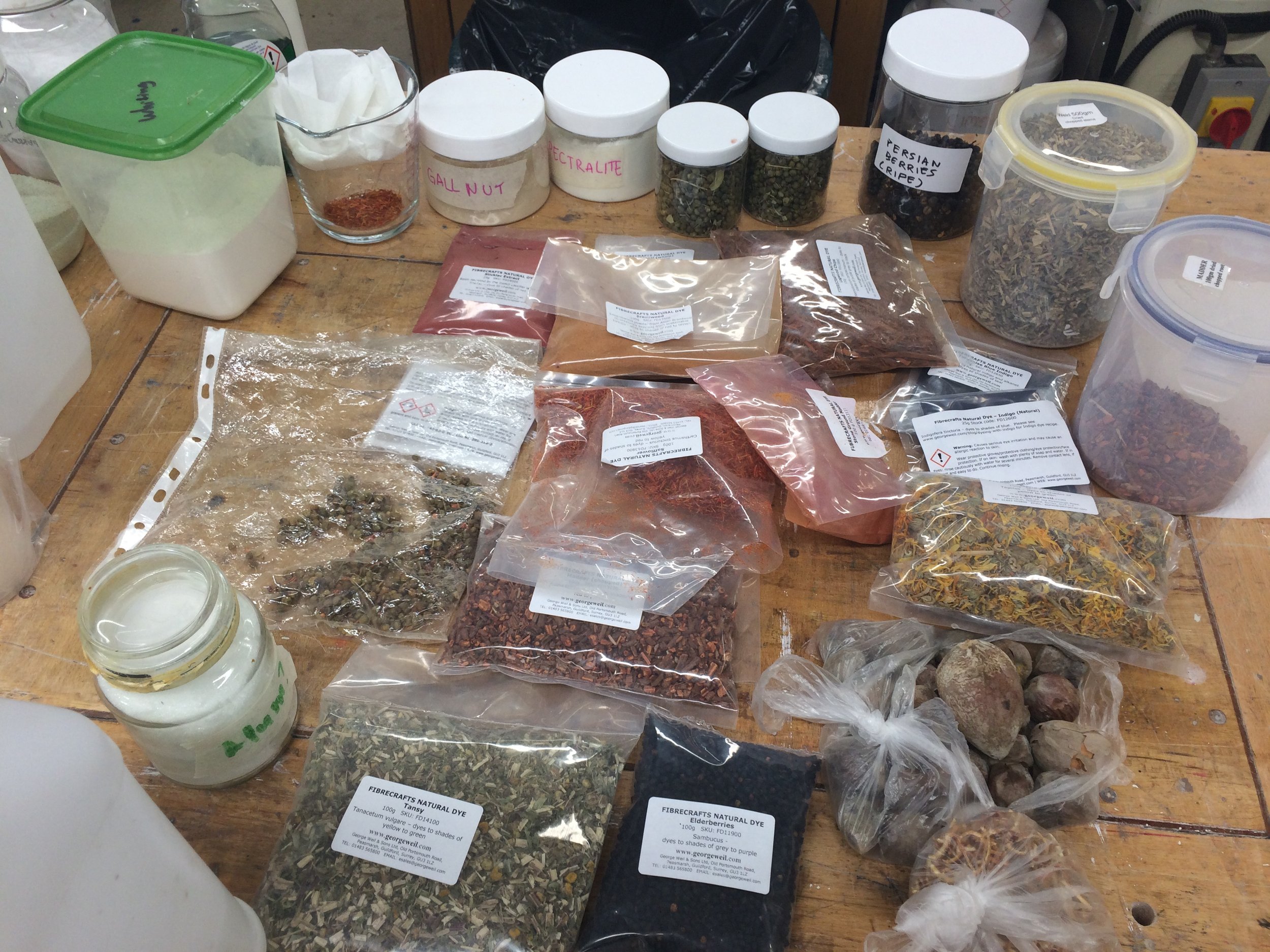
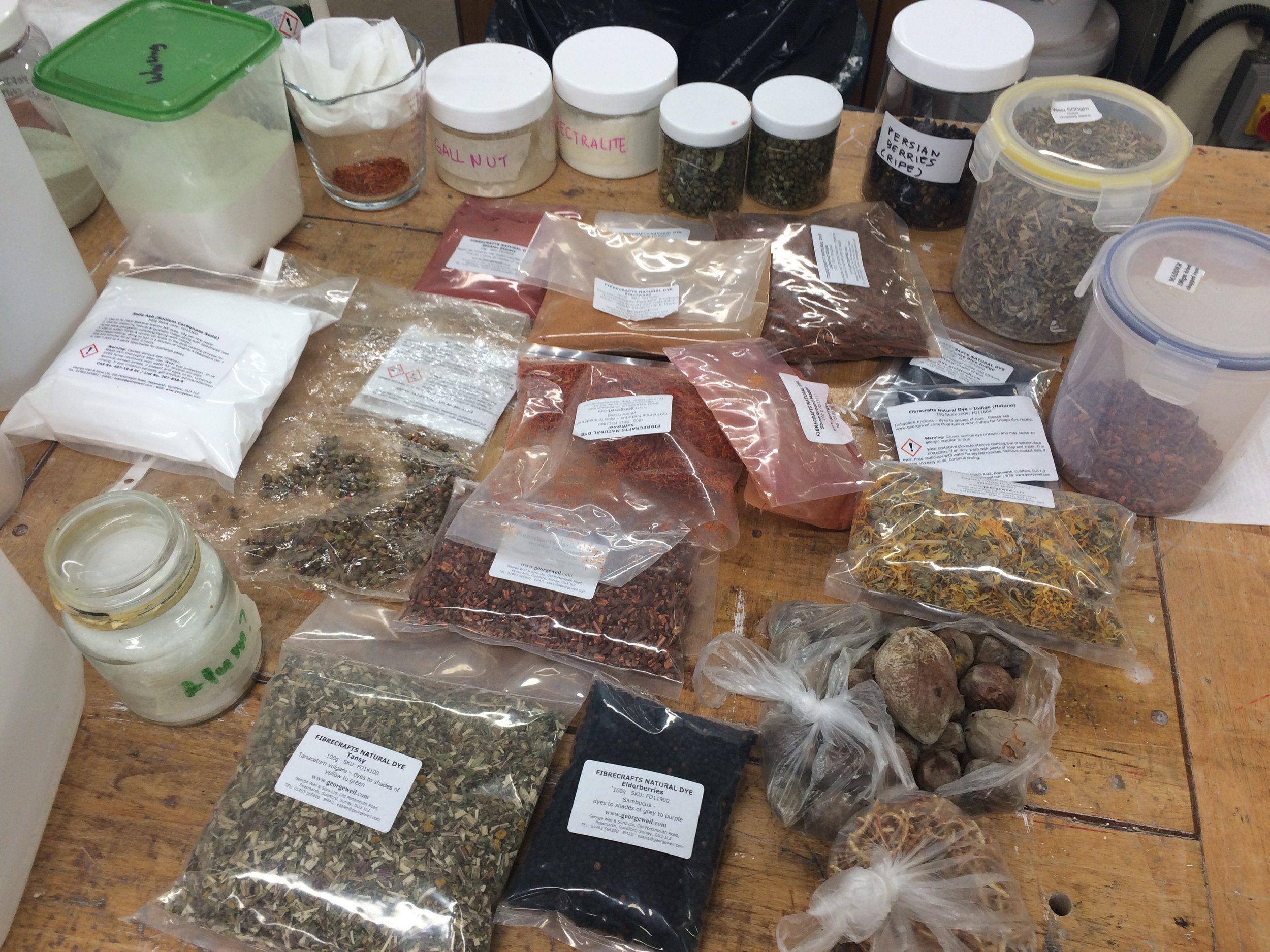


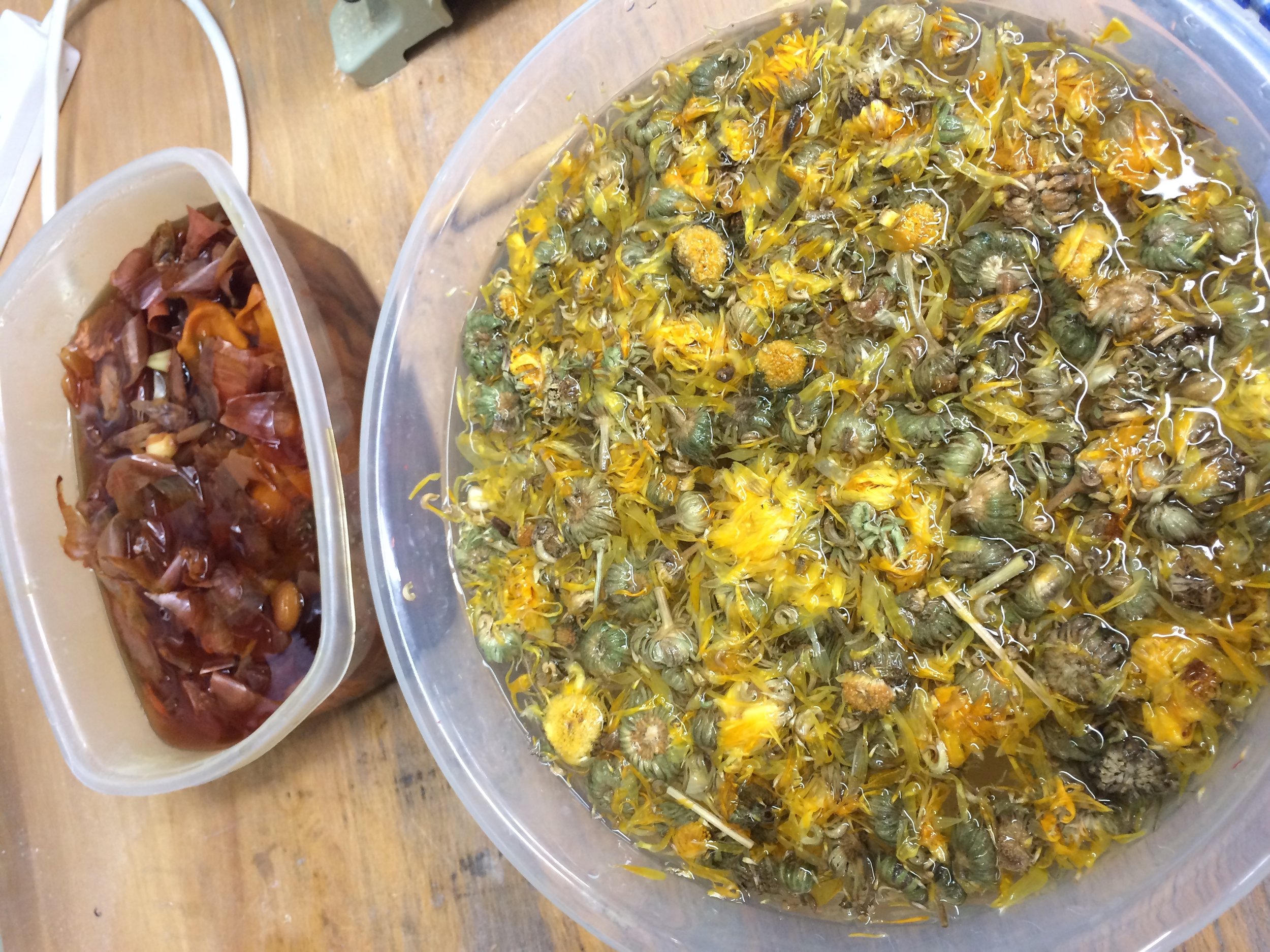


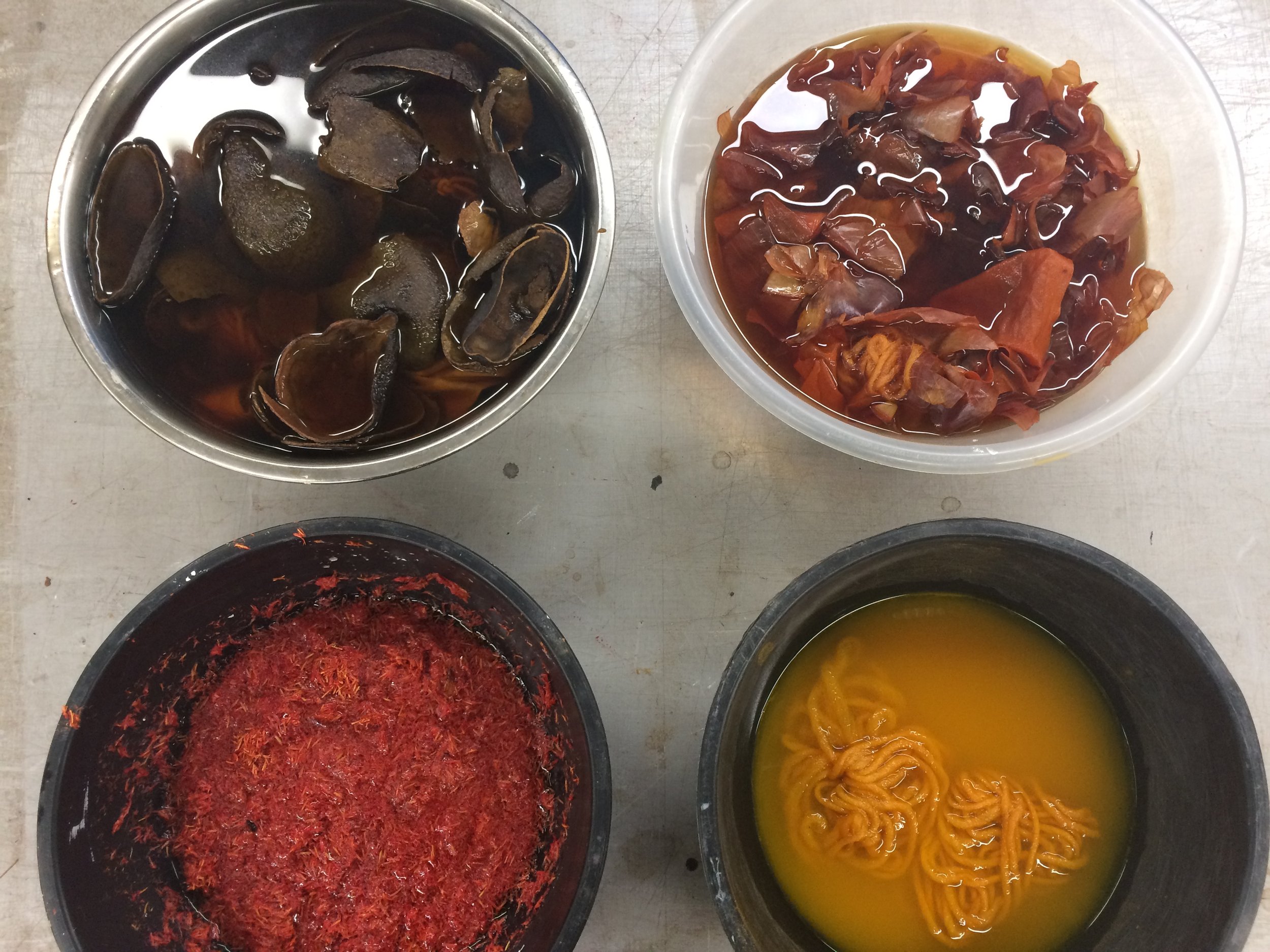
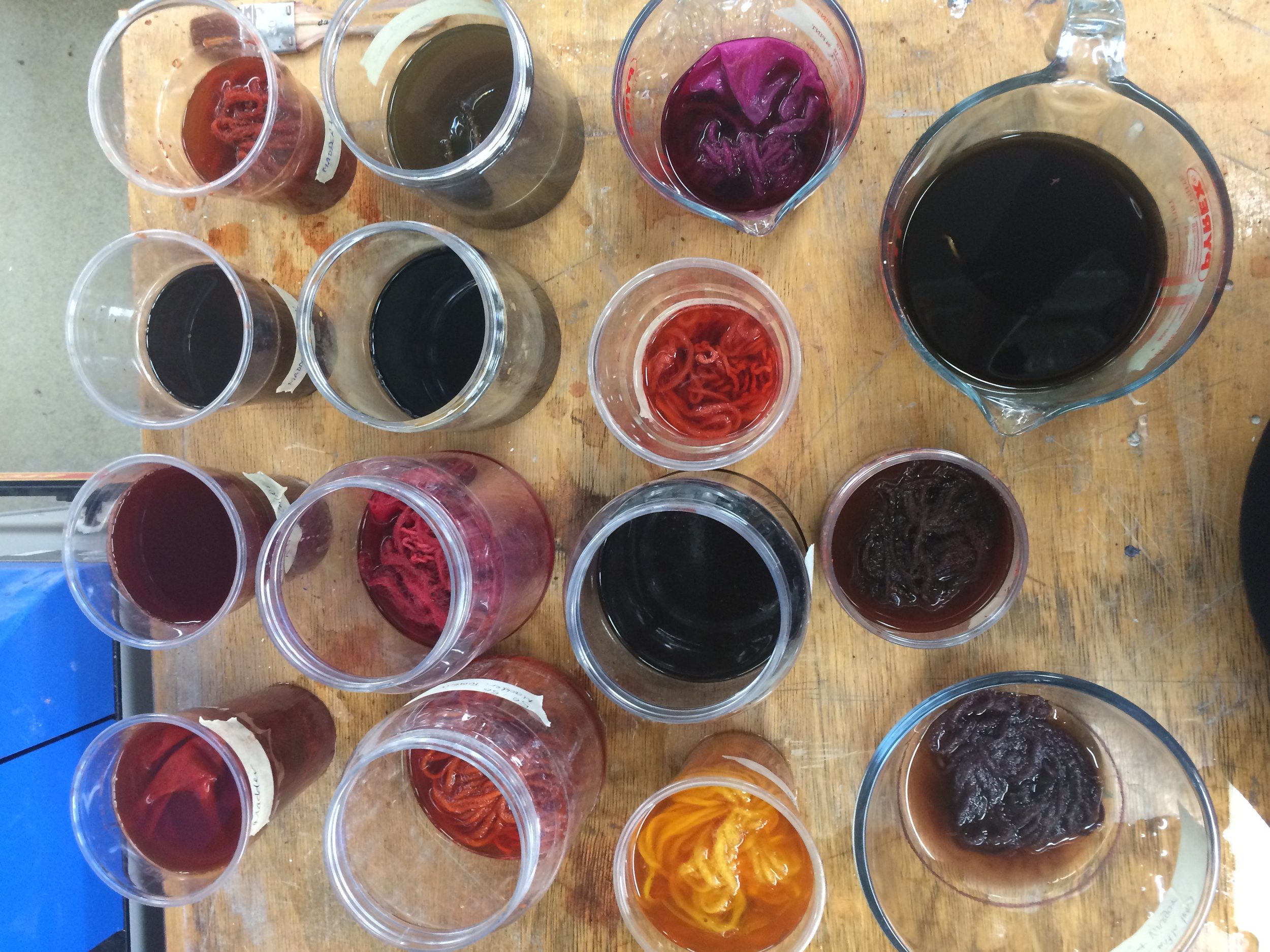
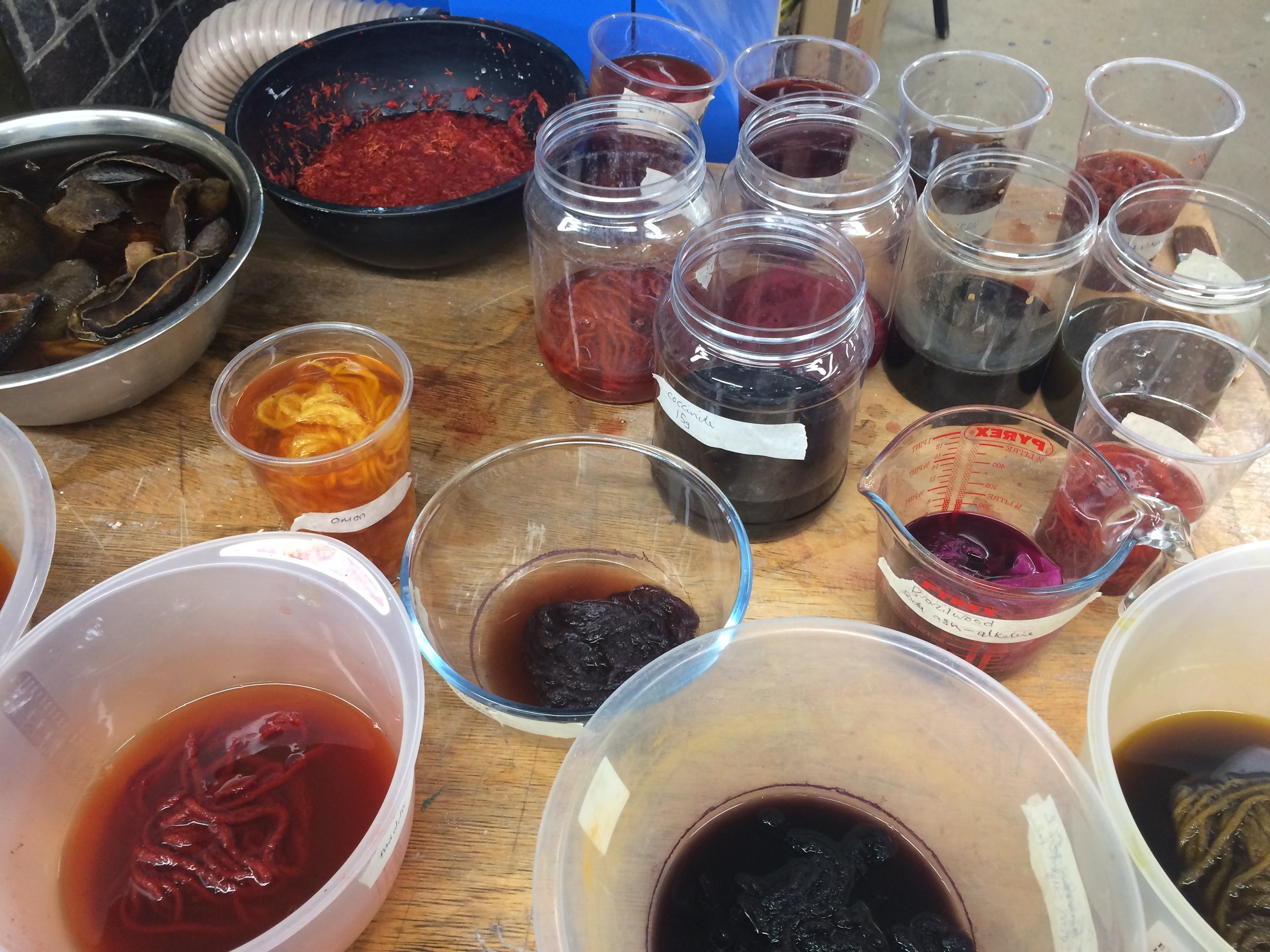
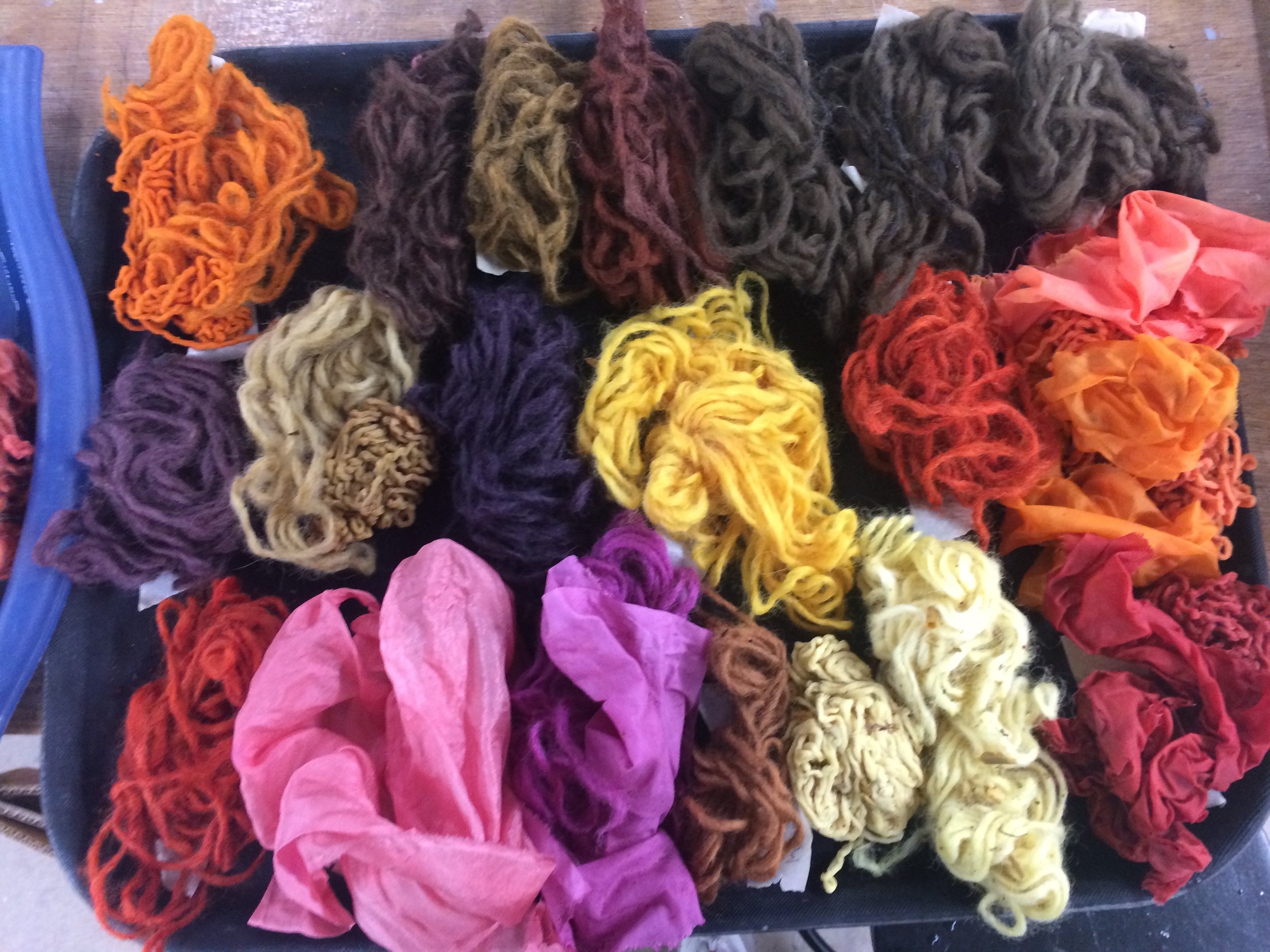
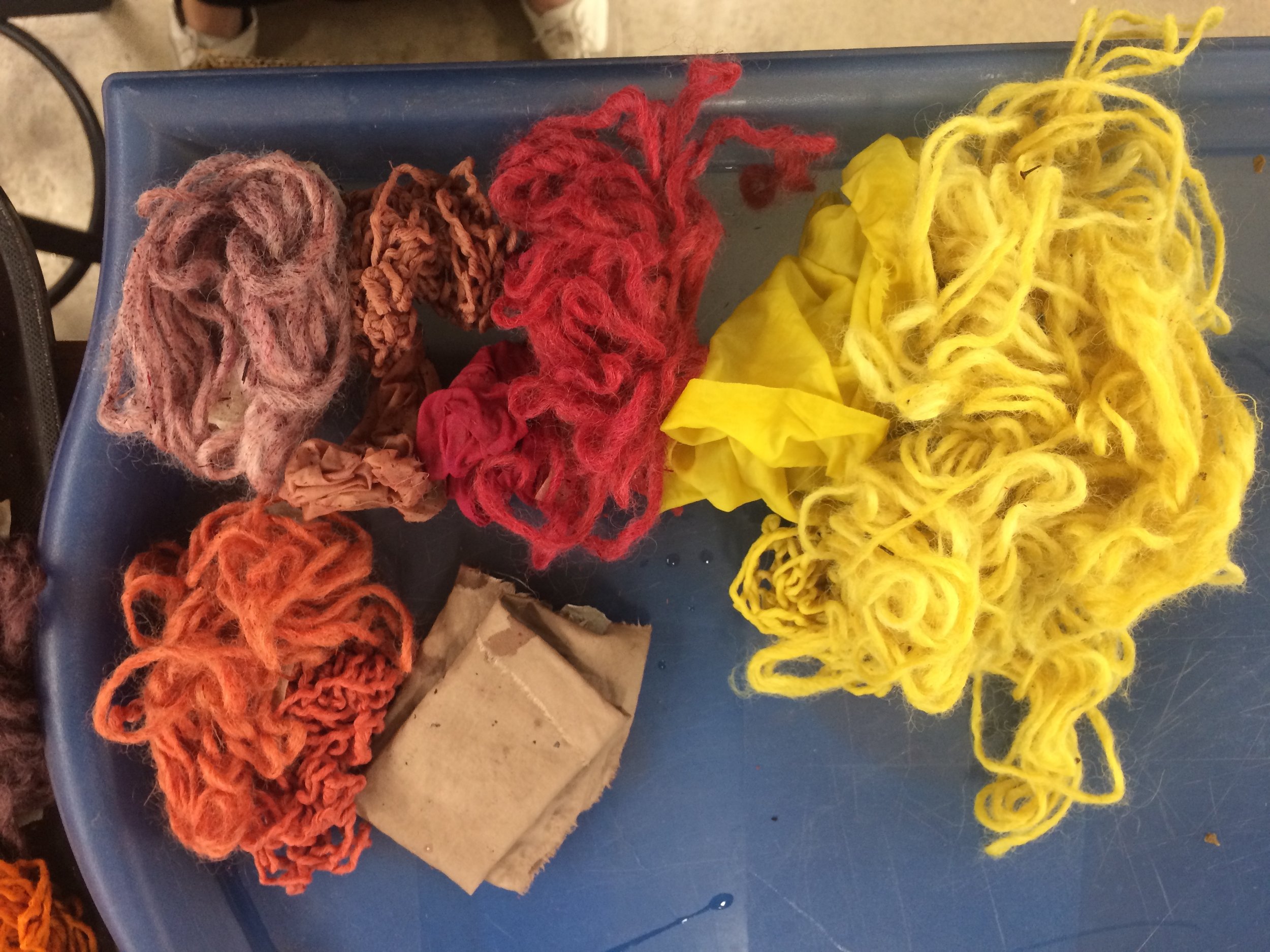
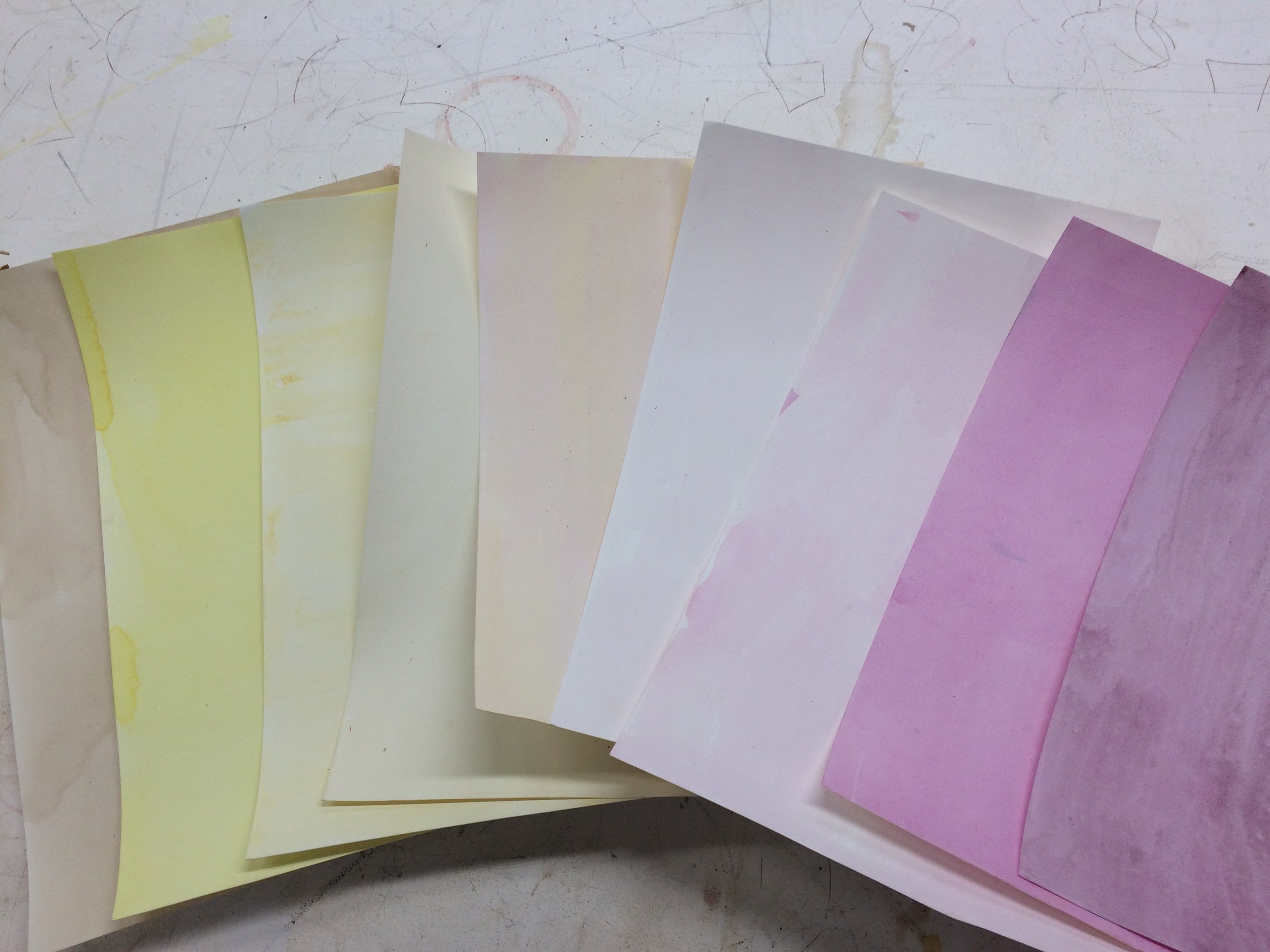

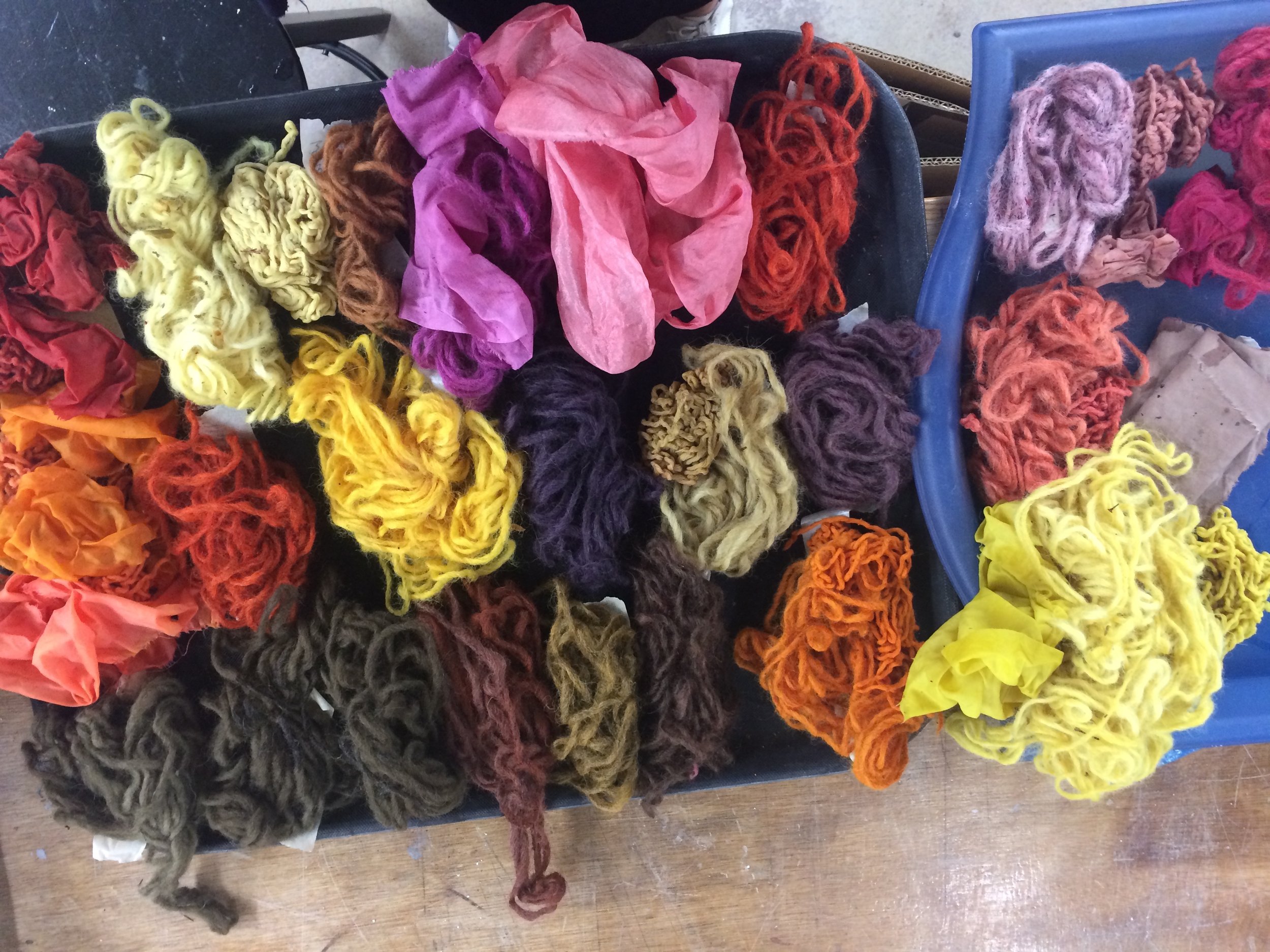
Olive Tree
I am lucky enough to have an olive tree outside my window. After observing it for some time, I came to realise where the expression “to offer an olive branch” comes from. The branches seem to grow outward, almost tangentially, as if they are reaching out to hold your hand. A very inspiring symbol of friendship and reconciliation, and above all peace.






